Japan on a budget: 17 ways to get more for your yen

Mar 28, 2024 • 7 min read

These top tips to low-cost living can help you stretch your budget on a trip to Japan © Monzenmachi/Getty Images
Japan has a reputation as an expensive place to travel, but it’s an image that doesn’t hold up on the ground.
With a little strategy, a visit can be very reasonable – budget-friendly, even. Many of the country’s major sights, for example, cost nothing, and free festivals take place year-round.
With these top tips on finding the best-value places to stay, the right transportation tickets and places to eat that suit all tastes and wallets, you can make your yen go further on a visit to Japan .

A guide to daily costs in Japan
- Capsule hotel room: ¥4,000 (US$30)
- Basic room for two: ¥8,000 (US$60)
- Self-catering apartment: (including Airbnb) ¥6,000 (US$45)
- Coffee: ¥400 (US$3.50)
- Sandwich: ¥300 (US$2.20)
- Beer/pint at the bar: ¥600 (US$4.50)
- Dinner for two: ¥5,000 (US$38)
- Hour of karaoke for two: ¥2,000 (US$15)
1. Consider staying in a business hotel
These economical (and, to be honest, rather utilitarian) hotels offer the best prices for private rooms with en suite facilities.
It’s possible to find double rooms for as low as ¥8,000 (and single rooms for as low as ¥6,000), though these will be a little more expensive in cities like Tokyo , Kyoto and Osaka .
Look for places that include a free breakfast buffet – they can be substantial enough to keep you going for hours.
2. Book direct at a guesthouse or hostel
Japan has fantastic guesthouses and hostels all over; not only are they generally clean and well-maintained, but friendly English-speaking staff are usually on hand to offer near concierge-level service.
A double or single room is comparable to a business hotel (but usually has shared facilities); dorm beds cost around ¥3,000.
Some places do charge extra for towel rentals, so you can save a few yen by bringing your own. Note that rates are often slightly cheaper if you book directly rather than through a booking site.

3. Sleep in a capsule hotel in the cities
Capsule hotels, which offer small rooms with enough space for just a bed, provide a budget-friendly place to spend the night.
A capsule berth costs slightly more than a dorm bed in a hostel (¥4,000 per night), but you get more privacy.
You probably wouldn’t want to stay every night in a capsule, but they’re good for saving money in cities where hotels are pricier.
4. Go camping in the summer months
If you really want to do Japan on the cheap, you can rely on its network of well-maintained campsites in rural or resort areas; prices range from ¥500 to ¥1,000 per person or tent. Note that many sites are only open in the summer.
5. Swap a night in a hotel for an overnight bus ride
Long-distance buses, like those operated by Willer Express , are the cheapest way to get around, and longer routes have night buses, which saves a night on accommodation. There are also bus passes, which can make this an even cheaper option.

6. The Japan Rail Pass is a great travel bargain
Like the famous Eurail Pass, the JR Pass is one of the world’s great travel bargains and is the best way to see a lot of Japan on a budget.
It allows unlimited travel on Japan’s brilliant nationwide rail system, including the lightning-fast shinkansen (bullet train).
There are also more regionally specific train passes that are cheaper, so examine your itinerary carefully before deciding. Purchase a pass online or from a travel agent like JTB in your home country.
7. Ride local trains for less with the Seishun 18 Ticket
The Seishun 18 is another great deal, but with very specific conditions: for ¥12,050, you get five one-day tickets good for travel on any regular Japan Railways train (meaning not the shinkansen or any high-speed limited express trains) during a limited period of a few weeks.
The Seishun 18 Ticket is only available at certain times during the year – during school holidays (the ticket is designed for students, but there’s no age cap) – and can only be purchased from JR ticket windows in Japan.
If the timing works, and you’re a fan of slow travel, this is a unique, ultra-cheap way to get around in Japan .
8. Consider renting a car to go beyond the cities
Highway tolls and petrol in Japan are expensive; however, renting a car can be economical if you’re traveling as a group or family, or are plotting an itinerary that takes you away from major rail hubs.
9. Take domestic flights with low-cost airlines
Japan has several budget carriers, like Peach , Jetstar and Air Do , that offer bus-like pricing on some routes – just be sure to factor in the time – and cost – of going to/from the airport.

10. Japan’s shrines and temples are free to visit
The vast majority of Shintō shrines in Japan cost nothing to enter. Likewise, the grounds of many temples can be toured for free (often, you only have to pay to enter the halls or a walled garden).
11. Eat cheap food and meet locals at a traditional festival
Throughout the year , festivals take place at shrines and temples and through city streets. They’re free, an excellent way to see traditional culture come alive, and are well attended by cheap food vendors.
12. Opt for hikes and walking tours
Going on a hike or a trek is free and can be the most rewarding part of your trip: explore an up-and-coming city neighborhood , walk old pilgrimage trails or rural lanes, or get up into the mountains in one of Japan’s national parks .
Japan’s cities, especially Tokyo, have some fantastic buildings designed by many of the big names in Japanese architecture. With a little bit of planning, you could chart your own architecture tour. Ask at a tourist information center or your accommodation for suggestions.
13. Spend time relaxing in the city parks
Urban parks are generally free to enter (and some gardens are, too) and are popular with locals on weekends; pack a picnic and settle in for an afternoon of people-watching. If you time your visit right, you could be bathing in the beauty of Japan's cherry blossoms .
14. Shop for cheaper goods at a local market
Many seaside towns have fish markets, some rural spots have morning markets, and some cities still have their old-fashioned open-air markets. Visits here are a great way to connect with local culture and are often a source of cheap, fresh food.
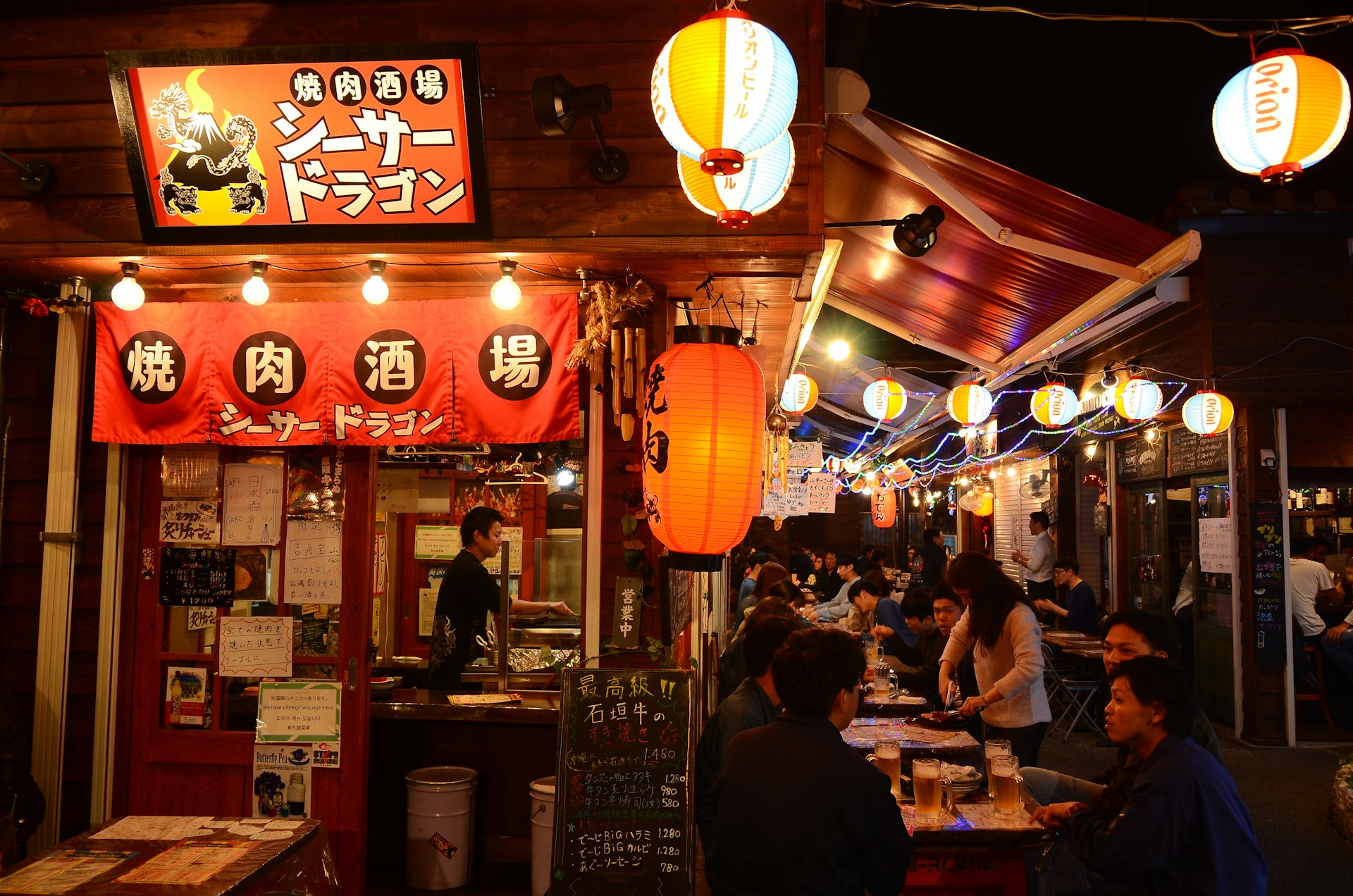
15. Choose the right dish in the right place to save money
You can get a good, filling meal in shokudō , Japan's answer to the greasy spoon, for under ¥1,000. A steaming bowl of tasty ramen can be picked up in many places for as little as ¥600.
Tachigui (stand-and-eat counter joints) sell soba (buckwheat noodles) and udon (thick white wheat noodles) for even less – starting as low as ¥350 per bowl.
Many upscale restaurants in Japan offer a smaller course at lunchtime for significantly less than they charge at dinner, so for a bargain deal have your larger meal then. In all restaurants in Japan, tea and water are complimentary, and tipping is not required.
16. Bentō are a budget alternative to a meal out
These "boxed meals," which include a variety of dishes, can be picked up for under ¥1,000 at supermarkets. Department store food halls sell gourmet ones for a little bit more; visit just before closing to buy them on markdown.
17. Get everything you need and more at the convenience store
Convenience stores are the best friend to all budget travelers. They stock sandwiches, rice balls, hot dishes and beer, all of which you can assemble into a very affordable (if not exactly healthy) meal. Accommodations always have kettles, so cup noodles are always an option.
Keep planning your trip to Japan:
Save this guide to the top things to do in Japan . Find out what to expect during every season from cherry blossoms to winter skiing . Before you book your trip, read these t op things to know before you go . Do you need a visa? Discover more here. Want to see Japan by train? Railway enthusiast John Walton shares his advice.
This article was first published May 15, 2012 and updated Mar 28, 2024.
Explore related stories
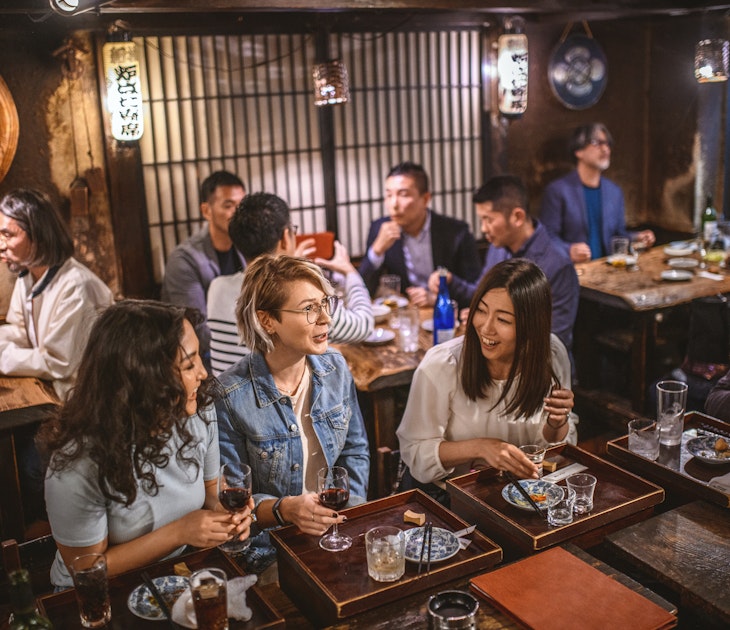
Budget Travel
Mar 23, 2024 • 7 min read
Tokyo is expensive but you don't need to max out your credit card to enjoy. Our insider tips and tricks will stretch your yen and save your bank account.
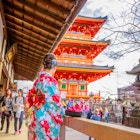
Dec 10, 2023 • 6 min read

Oct 20, 2023 • 13 min read

Jan 29, 2020 • 9 min read

Jan 12, 2020 • 5 min read

Oct 28, 2019 • 19 min read

May 3, 2024 • 14 min read

May 1, 2024 • 9 min read

Apr 14, 2024 • 6 min read

Apr 3, 2024 • 17 min read

Japan on a Budget: The Complete Guide to Cheap Travel in Japan

How to Travel Japan on a Budget: The Only Guide You’ll Ever Need
Is is possible to travel to Japan on a budget? Definitely! Japan is one of the most fun and amazing travel destinations in the world. However, many travelers are reluctant to plan a trip to the Land of the Rising Sun because of the cost.
Known for being an expensive place to visit, many Japan lovers give up when they hear how much it costs to travel to Japan. In doing so, they miss out on the trip of a lifetime. It’s true that Japan has tons of luxury hotels, world-class restaurants, and first class transportation options that cost more money than most people’s mortgages.
However, Japan also has lots of cheap lodging, amazing food, and transportation options that are very easy on the wallet. In fact, Japan can be one of the CHEAPEST destinations to travel on a budget. If you want to visit Japan on a budget, this article will provide you with all of the tips, tricks, and advice to save you as much money as possible.
How to Get Cheap Flights to Japan
While it is possible to visit Japan by boat (namely from Australia, China, Taiwan, and Korea) the vast majority of visitors choose to go by air.
If you live in one of these nearby countries and have LOTS of time, check out your local boat companies for deals. Sometimes they sell last minute tickets at a fraction of the cost.
However, it’s almost always more efficient to travel by air.
So here are 5 tips to getting the cheapest airline tickets to Japan.
5 Tips to Find Cheap Flights to Japan
1. book as early as possible.
When searching for a flight to Japan, booking as far in advance as you can is best. Waiting until the last minute to grab reduced price tickets can certainly pay off, but it’s a big gamble if the tickets sell out (which happens more often than not).
You’re better off by being prepared, planning in advance and choosing to visit Japan at a cheaper time of year.
I usually buy my tickets at least a month before my travel date. I found that this is the latest I can wait before tickets sell out or really get expensive.
2. Avoid Peak Periods of Travel: Peak Times

Not only does the cost of airfare increase during peak times of travel in Japan, but hotels, attractions, and even restaurants raise their prices as well (usually buffets or nice restaurants that offer things like “special” holiday menus). If possible, try to avoid these peak travel times in Japan if you are on a tight budget:
- Golden Week: End of April – start of May
- Cherry blossom viewing: Late March – early May
- Summer: Mid-August is the busiest due to the Obon Festival
- Autumn: Changing colors of leaves (busiest time is late September due to Silver Week, a period of national holidays grouped close together)
- Spring: The end of March – the beginning of April. School children are on spring break, and lots of families travel during this time
- New Years: A popular time to travel during this time (domestic and international)
3. Cheapest Time to Fly to Japan
Here are the dates that generally have the cheapest flights to Japan
- Early to late December (before New Years)
- Just after the New Year holiday ends (people are usually back to work by January 5th) up until the end of March. However, Hokkaido has lots of visitors during this time due to all of the incredible ski slopes and winter foods. The world-famous Snow Festival also takes place in early February, which makes finding a cheap ticket to Hokkaido difficult.
- Mid May – June is also a cheaper time to visit.
While the winter season might not be the best time to visit Japan in terms of weather, you’ll usually save money on plane tickets. Winter foods in Japan are absolutely delicious as well. Delicious hot pot dishes, fresh crab, and other seafood are especially delicious in winter.
If you want all of the details and insiders tips on when to visit Japan, check out our best time to visit Japan guide.
4. Check for Internet Deals
Or course you could get cheap airlines tickets by choosing non-direct flights with long, inconvenient waits in between. But who wants to do that? Sure, you can save some money, but you’ll be giving up a lot of time and comfort by doing this.
Before going this route, spend an hour or two searching the Internet for the best deals. You can decide if a reduction in price with a 12-hour wait in some random airport is worth the inconvenience.
How to do Internet Research for Cheap Flights to Japan
Here are the steps I use to find the best deals to Japan:
1. Determine Both Your Budget and Which Airlines Companies You Want to Use
Of course, if you are willing to fly with any airlines, you’ll have the best chances of finding a cheap flight. However, I highly recommend you only use reputable carriers. There are lots of airlines with cheap flights to Japan, but they usually have very long layovers or delays, poor service, and safety issues.
Sometimes, it’s just not worth the risk. So to minimize your chances of having a bad flight, go with a reputable airline company. Airlines that fly to Japan differ depending on where you live, but I like Hawaiian Airlines, Japan Airlines (JAL), All Nippon Airways (ANA), and Korean Airlines.
2. Always Check Your Favorite Airline Carrier’s Website First
I always check the Hawaiian, JAL, and ANA Airlines website first. Most of the time, I find the best deals directly on their website.
Booking directly with the airline carrier is usually safer and more secure than booking with a third-party company. Be sure to check the prices often, as they can change frequently.
If the prices are high, proceed to step 3.
3. Do a Quick Search for Ticket Prices on a Multi-Search Website like Kayak.com
Other websites such as Skyscanner, Expedia, Jetstar, Kayak, Lastminute, and Farecompare are also good places to analyze ticket costs. Remember that flight costs will depend on where you’re flying from. Heading out from a major “hub” airport rather than a local one will certainly cut costs.
These websites search hundreds of travel sites and find the cheapest tickets out of all of them. Filter the searches by the airline carrier and how many layovers you are willing to have on your trip. Be sure to check the prices for different dates. Sometimes traveling just 1 day later can drop the prices significantly.
NOTE: I just do this to see what the average prices are for that dates of travel. I DO NOT purchase my tickets through Kayak unless there is an amazingly good deal though a REPUTABLE company. While there are usually cheap tickets that show up in the results, most of these are either a) flights with LONG layovers or b) flights listed by bad, untrustworthy third party companies.
In my experience, many of the companies that are listed on their website aren’t very trustworthy. Many of them have very bad reviews, with some even having complaints filed against them. Stick with the bigger companies like Expedia. Just use it to check the prices of the airlines you want to fly on.
4. Consider Buying a Ticket from Another Country or with a Different Currency
Choose the best 3 or 4 itineraries you found on Kayak/Expedia/Priceline/etc. I usually have the best results with Expedia.
At the bottom of the Expedia website, there’s a section called “Global Sites” with pictures of flags of different cultures. Choose a different country and search for the same flight. The ticket prices might be lower if you book it through another country with Expedia.

5. Fly into a Different Airport in Japan

If all of the flights to your desired airport in Japan are crazy expensive, consider flying to a different airport and then using the JR Rail Pass to take the train the rest of the way. If you don’t mind having a longer trip, the JR Rail Pass is a good way to cut costs.
You can fly into another major airport in Japan and then cash in your rail pass at the nearest participating station. Then you can take the bullet train to your desired location. While this does take more time, it can save you money and is much more fun that riding an airplane.
The seats on the bullet train are much more spacious than a plane and are much easier to travel. The only downside is that the bullet train doesn’t have space for big pieces of luggage.
Transportation in Japan: Saving Money on Domestic Travel
Finding a cheap way into the country is only half the problem. Domestic travel within Japan is also expensive. Of course, you could explore only one or two cities, which can cut costs dramatically by only paying local fares, especially if there are city passes available.
What makes Japanese so awesome is traveling to different areas to eat local foods and to experience the culture throughout Japan. If you want to explore many places in Japan, purchasing a travel pass will be your best bet. These passes can save you both time and money if you plan to travel a lot in Japan.
The JR Rail Pass: The Best Deal in Japan

The Japan Rail Pass is essential if you want to experience all that Japan has to offer. This pass allows you unlimited rides on most JR trains, including the bullet trains, as well as some JR buses and the JR ferry to Miyajima.
This pass opens up the whole Japan to you. You’re free to travel wherever, and whenever you want. I highly, highly recommend getting this pass.

This pass also makes traveling much easier. You don’t need to research ticket prices or deal with buying or keeping track of your tickets for each trip. Just walk on through the gates on the side and show your pass to the attendant.
Also, if you don’t mind sitting in the unreserved area, you can walk straight onto the train too – although reserving specific seats ahead of time is certainly recommended for busy times/seasons/routes.
How the JR Rail Pass Works
IMPORTANT: You can’t buy a Japan Rail Pass while in Japan. You must purchase your pass before you arrive in Japan. The pass is only for those on a tourist visa.
Also, keep in mind that the JR pass cannot be used on every type of transport. For example, you cannot ride the NOZOMI or MIZUHO type bullet trains using a Japan Rail Pass. This isn’t usually a problem, though.
The NOZOMI trains travel the exact same route as other types of bullet trains but only stops at major stations. A full list of what you can and can’t use the pass for can be found on the rail pass website .
JR Rail Pass Prices
There are two types of pass you can buy. A “green pass” allows you to sit in the first-class section of the train. However, not every train has a green car (first class section). The “ordinary” JR Rail Pass is the more economical option. Both of these passes can be used to make seat reservations for the bullet train.
Passes are available for periods of 7 days, 14 days, or 21 days. The countdown will start on the day you activate your pass. You do not have to activate it as soon as you arrive in the country. You can redeem it anytime during your trip.
Just take your rail pass voucher to a JR Station that can redeem it. A list of places should be included on a sheet with your voucher. However, most big, urban JR stations can activate your rail pass.
JR Rail Pass Prices (2017)
Prices for adult “original” passes:
- 7-day pass: 29,110 yen
- 14-day pass: 46,390 yen
- 21 day pass: 59,350 yen
Prices for child passes (age 6 to 11):
- 7-day pass: 14,550 yen
- 14-day pass: 23,190 yen
- 21-day pass: 29,670 yen
The passes may seem expensive but can save you an incredible amount of money if you travel a lot during your trip. A round-trip ticket from Tokyo to Kyoto would already cost 28900 yen, nearly the full price of a one week pass.
A typical 7-day trip for tourists would look like this:
- Days 1&2: Tokyo
- Day 3: Osaka
- Days 4&5: Kyoto
- Day 6: Hiroshima
This itinerary would cost you 41,640 yen, not including all of the local trains you’ll ride within these cities. If you were to return to Tokyo from Hiroshima, the total cost would be 60,200 yen, which is more expensive than a 21-day pass.
If you plan to visit more than one city by bullet train on your trip to Japan, a rail pass is an absolute must.
Where to Buy the JR Rail Pass
There are a few different agents you can use to order your Japan Rail Pass. Be sure to check the details. Some airlines sell rail passes, but you must book your airlines ticket with them as well.
Here are some of the main agents through whom you can purchase the pass: Tobu Top Tours, JTB Corp., KINTETSU INTERNATIONAL, Japan Airlines, Nippon Travel Agency, ANA Sales Americas (Los Angeles), and JALPAK. Check the website for details on how to purchase a rail pass.
Special Passes to Save You Money on Travel in Japan
As well as the Japan Rail Pass, there are other special tickets and passes you can buy to cut costs on your trip to Japan. Some tickets are regional, but others can be used all over the country.
Seishun 18 Pass

This is another offer from the JR (Japan Rail) company. This ticket is similar to the Japan Rail Pass, but it is more limited. However, the reduced cost makes this pass a great option if you’re trying to travel on a budget (and have lots of time).
The Seishun 18 ticket is a seasonal offer only. You can use the ticket for a 5 day period during the spring (early March to early April), summer (mid-July to early September), or in the winter (early December to early January). The exact dates are released when the tickets become available.
You can use this pass for unlimited travel on all local and rapid JR trains. You cannot use it on Shinkansen rides (bullet train) or on limited express travel.
The Seishun 18 is a 5-day ticket, costing 2,370 yen per day – a total of 11,850 yen.
A fraction of the price of the Japan Rail Pass, this is a great option if you want to do lots of little trips or one or two big journeys during the 5 day period. Interestingly, the ticket can also be shared between up to 5 people. You could have use of it for one day each and your friends could use it the other days.
Where to Buy the Seishun 18 Pass
You can buy the Seishun 18 ticket in the JR East station travel centers, or at JR Ticket Offices. Advance booking is available. Dates for when the passes go on sale are listed on the website along with the details, which usually becomes available from 1 to 3 weeks before the pass becomes available.
Hakone Free Pass
Hakone is an amazing place to visit. It is filled with stunning natural beauty, especially when the autumn leaves change and the cherry blossoms bloom in the spring. Whatever the season, Hakone is a wonderful place to visit. Amazing hot springs, outdoor walks, mountain hikes, surrounded by peace and quiet. It’s pure bliss.
The Hakone Free Pass is a must for people heading out that way. It gives you free travel on eight different types of transport in the Hakone area for a 2 or 3 day period, as well as discounted entry to dozens of attractions, including hot springs, museums, galleries, historical sites, parks, restaurants, shops and more. A full list is available on their website .
The Hakone Free Pass has different prices depending on where you depart from.
While you can get passes that are valid from Machida and Odawara, most travelers start their journey at Shinjuku. However, if you are heading off from one of the other two locations, be sure to check out the details as those tickets are a little cheaper.
From Shinjuku:
2-day adult pass: 5,140 yen
3-day adult pass: 5,640 yen
For children:
2-day pass: 1,500 yen
3-day ticket: 1,750 yen
Where to Buy the Hakone Free Pass
Hakone Free Passes can be purchased at any Odakyu line station, including Odakyu line ticket machines.
JR Tokyo Wide Pass

If your trip to Japan will be focused in and around Tokyo (there is so much to do there that you could easily spend your whole holiday there) then you should consider buying the Tokyo Wide Pass.
This 3-day ticket offers unlimited travel in Tokyo and the surrounding Kanto area. Including both the Narita and Haneda airports, you can pick up your pass on arrival, and it will cover the cost down into central Tokyo, and everything else for the rest of the period of validity.
Like the Japan Rail Pass, this ticket is only available to people with a tourist visa. As it is only valid for 3 days, you could easily get yourself one of these passes to use for a few days in Tokyo, then after that head off around the rest of the country using a Japan Rail Pass.
The 3-day pass is 10,000 yen for adults and 5,000 yen for children aged 6 to 11.
Where to Buy the JR Tokyo Wide Pass
You can buy a Tokyo Wide Pass at the JR Ticket Offices and JR Travel Agents located in the Haneda International Airport and in the Narita Airport Terminals 1 and 2, and 3.
The passes are also available at JR travel centers and general travel service centers at various locations, including Shinjuku, Tokyo, Ueno, Shinagawa, Shibuya, Ikebukuro, Yokohama, and Mito. Check the website for details.
Domestic Air Travel
Train passes are good for people who want to travel a lot, but what if you only want to explore one or two areas? While the rail passes are, on the whole, cheaper than buying individual tickets, they are still quite costly if you aren’t going to be getting a lot of use out of them. So if this applies to you, take a look at budget local airlines for domestic travel.
Low-Cost Carrier (LLC) Flights

Several airlines in Japan offer flights to various locations, and often at a fraction of the price of the same journey by train. Of course, you need to factor in all costs to make sure you’re getting the best deal. Keep in mind that getting to the airport might involve time-consuming/costly trips on the subway or train.
However, this depends on the city. For example, in Fukuoka, the airport is only a 5-minute subway ride away from the central train station.
Two of the most well-known budget airlines in Japan are Peach and Jetstar.
Both of these airlines fly to a variety of locations, including Tokyo, Osaka, Sapporo, Kagoshima, Fukuoka, and Nagasaki.
Other popular domestic airlines include JAL (Japan Airlines) , ANA (All Nippon Airways) , Skymark Airlines , Vanilla Air , Spring Airlines and Solaseed Air .
Taking a plane instead of a train, even for a short journey, can make a huge difference in price.
For example, reserving a seat on the train from Kumamoto to Tokyo will cost a total of around 27,000 yen (and take about six hours!) whereas the same journey by plane (using Jetstar airlines) will cost less than 7,000 yen.
Taking the train from Kagoshima to Osaka will set you back around 22,000 yen, vs. a flight on Peach Airlines can cost you less than 6,000 yen. That’s a huge discount!
Special Airlines Discounts
If you prefer to take Japan Airlines or ANA Airlines, here are a couple of special discounts you can use.
JAL: Special Japan Explorer Pass – 10,800 yen flights to over 30 different cities in Japan.
Restrictions: Only for short-term visitors. Must have a ticket leaving Japan to be eligible for this special pass. You also need to purchase these flights directly through the JAL website.
ANA: Experience Japan Special Fares : 5,500 yen flights to cities within Hokkaido, or 7,700 – 11,000 yen flights for any other destinations.
Restrictions: You need to reside outside of Japan, have a passport from a country other than Japan, and have an international ticket leaving Japan.
Traveling by Bus

Probably the cheapest way to travel long distances in Japan is by bus. Taking a highway bus is not the most popular option, but can be a great way to save money on both short and long trips.
A popular bus provider is Willer Express. You’ll be surprised to know that you can make online reservations in English when booking through Willer Express. Most other bus companies don’t have online or English reservations.
Other companies to look into are Japan Bus Online, Hankyu Bus, and JR Bus branches (split into eight regional companies).
Insider’s Tip
Most bus companies offer different types of seating for overnight buses. These range from the cheapest 2-seater style seats (think of an American school bus) to super comfortable individual seats.
The price difference is significant, but if you’re taking a long bus (over 8+ hours) I highly recommend that you purchase a better seat. The buses with 3 seats per row are very comfortable. The seats are not connected, which makes it feel like you have your own personal space.
I took an overnight bus from Kobe to Tokyo on Willer Express with the cheapest seats (which was only 2,500 yen or so). While the bus looked new and the ride was smooth, it was the one of most cramped, cold (it was during winter), and uncomfortable experiences of my life. The better seats were 2 to 3 times more expensive, but I would definitely purchase those seats next time. These upgraded seats would still be much cheaper than taking a bullet train.
Taking the bus can also save you on money on hotels. You can sleep on overnight buses that run late into the night.
Japan Bus Pass
If you plan on traveling all around Japan, consider the Japan Bus Pass.
This pass can be used on all daytime and overnight buses provided by Willer Express. There are 3-day, 5-day, and *7-day passes, with 2 different prices depending on if you’ll be using it from Monday to Thursday or over a weekend period. A 3-day Monday to Thursday pass costs just 10,200 yen.
*NOTE: The 7-day pass is only valid during Monday – Thursday, but you don’t need to use the 7 days consecutively.
There are a few rules. The pass can be used for up to 3 rides per day, but you can’t use it on premium buses. However, on the plus side, this is one of the “only for foreign visitors” passes which can also be used by foreign residents. That means that JET teachers and other ex-pats who usually miss out on the great travel deals can use the Japan Bus Pass.
For more information: Willer Bus Pass Page
Cheap Places to Stay Overnight in Japan
Finding a place to stay is one of the major concerns for people wanting to travel Japan on a budget. There are tons of luxury hotels that cost a fortune, but there are also lots of budget hotels as well. A discerning eye can track down cheap accommodation all over Japan. The key is knowing what kind of lodging to look for, and where to find it.
Finding Cheap Deals Online

With price comparison websites and dedicated travel companies providing endless lists, this is the best place to start your search. However, bear in mind that these websites have more listings in big cities. Small towns in the countryside will probably yield very few search results. If you’re hoping to visit somewhere off the beaten track, you may need to find other ways to find lodging there.
One of the best websites to use is Booking.com . This website is easy to use and often has great deals. It is also a reputable company that most people trust. I recommend Booking.com because it offers a whole range of different sorts of accommodations. From fancy hotels to local ryokans, you can find something in your budget.
However, there are some popular hotels that are not listed on Booking.com. Agoda.com comes to the rescue in most cases.
Most of the lodging options that aren’t listed with Booking.com can be found on Agoda. I always check both of these websites anyway, to compare prices for the same hotels.
Other good websites are Rakuten, Hostelworld, Japanican and Jalan.
Accommodation Booking Websites
Booking.com : Best choice to reserve most types of accommodations (hotels, Japanese inns, hostels, capsule hotels, etc.)
Agoda.com : Not as easy to use as Booking.com, but has some hotels that are not listed on Booking.com
If you’re having trouble finding something, or the hotel you want is fully booked, check out the Japanese version of the site.
Particularly on Jalan and Rakuten, it might appear that something is fully booked, but when you check the local website, there is still availability! Also, the Japanese website sometimes lists a cheaper price.
The only downside to this is you need to be able to read Japanese.
However, if you are just booking a room (no meals or other services) you can probably book a reservation in Japanese by using “rikaichan” which is an add-on to the Mozilla Firefox browser (for Google Chrome, the extension is called “rikaikun.” When you turn it on and hover your mouse over Japanese characters, it will show you the reading and the definition of the word.
Google Chrome: Rikaikun Mozilla Firefox: Rikaichan
Business Hotels

One of the most affordable types of accommodation in Japan, business hotels are certainly “no frills, ” and you get what you pay for.
They are hugely popular, as the name suggests, with Japanese business people (mainly men) who travel a lot for work.
Business hotels are a good choice if you plan to explore Japan all day and just want a bed to sleep in at night. You find them all over Japan, with many big chains all over the country, with their rooms looking the same whether you’re staying in a big city or out in the countryside.
Major companies to look out for include Toyoko Inn, Daiwa Roynet Hotel, Dormy Inn, Chisun Hotels and Route Inn.
How Comfortable are Business Hotels?
Rooms are functional with minimal decorations. Some rooms can be very small (the bed and drawers take up most of the space). Beds are very standard but usually pretty comfortable. There’s usually a TV, small refrigerator, a hot water pot, and internet access (either by ethernet cable or wi-fi).
The bathrooms are usually very tiny but they do the job unless you are very tall or big. Most business hotel bathrooms are stocked with basic amenities (toothbrush, soap, shaving razor, etc.).
Average Prices
A single room in a business hotel will cost you between 4,000 Yen to 10,000 yen a night, whereas a twin or double room will be the cheaper option if split between 2 people. For a twin, prices are around 7,000 yen to 12,000 yen per night.
Capsule Hotels

One of the most famous types of Japanese lodging, staying in a capsule hotel is definitely an experience. The first ever capsule hotel opened in Osaka, Japan, and now you can stay in similar lodgings all around the world.
They may look like fun, but capsule hotels aren’t always all that they’re hyped up to be. It is small, but not as small as most people think. Most capsules are big enough for you to sit up inside without hitting your head.
However, it’s somewhere to sleep and nothing else. Also, many capsule hotels are for men only. They’re geared at businessmen and often don’t have capsules for women. Some capsule hotels have a “female only” floor, though. You’ll find them in big cities, but smaller towns throughout Japan are unlikely to have mixed gender capsule hotels if they have one at all.
Are Capsule Hotels Comfortable?
For the first day or so, capsule hotels are decently comfortable. However, it doesn’t take an expert traveler to know that these are not good for long term stays. There is only so many nights in a row that sleeping in what is basically a well-lit coffin can be counted as a fun novelty rather than an annoyance.
Depending on your fellow travelers, capsule hotels can easily be noisy, crowded places, and while many hotels offer lockers or other places to store your belongings, theft, while not rampant, is more common in these lodgings than in other types of accommodation.
Capsule hotels are far from the most luxurious hotel, but they do come cheap! Spending a night in a capsule hotel can cost as little as 2,000 yen. However, is it worth it? Some travelers thrive on this sort of “simple” accommodation, but if it doesn’t sound like your cup of tea, move on to another type of hotel.
At best, make your stays in capsule hotels a one-night-at-a-time affair when you are just stopping over or arriving somewhere too late to make use of a regular hotel room. In these instances, the low cost is worth the inconveniences.
Japanese Hotels
This is probably the type of lodging with the widest variation between properties. Some hotels in Japan are little better than business hotels. The rooms have basic furnishings, no decorations or excessive comfort, and is just somewhere to spend the night.

At the other end of the scale, you have fancy hotels which are amazingly luxurious. Fully furnished rooms, spacious bathrooms, communal areas with massage chairs, gym facilities and even swimming pools.
There is great variety between different hotels in Japan. The number of choices can be overwhelming. The good thing is that many hotels are conveniently located near to train stations or bus stops.
Are Hotels in Japan Comfortable?
This really depends on what kind of deal you’re looking for. A cheap hotel will, naturally, not be very comfortable, but it will cost a mere fraction of the cost when you compare it to mega hotel chains like MyStays, APA or Nikko. In general, bigger hotels in Japan are comfortable and are good for both sleeping and relaxing in.
Cheaper hotels are usually around 8,000 yen per night, with luxury hotels priced 30,000 yen to 60,000 yen or more per night. While many hotels might look out of your budget, it’s worth keeping an eye out for special deals. For example, the MyStays chain is a delightful place to stay, but with the rooms usually priced at 20,000 yen per night, it’s not exactly a budget choice.
However, on websites like Booking.com you can regularly see special deals when booking in advance, which see those rooms listed at half price, or less!
Why pay 8,000 yen to stay in a terrible business hotel when you can splash out a little and stay in a palace for 10,000 yen?
Even budget travelers need to relax once in a while, so if you need a night of luxury, this is a great option to check out.
Minshuku / Ryokan

These are types of traditional Japanese accommodation, which are just as popular with foreign visitors as they are with locals. Cheap hotels are all well and good, but if you want to experience local hospitality and step back in time, you can’t beat spending the night in a ryokan or minshuku.
They are pretty similar, it’s just that minshuku tend to be smaller, located in older buildings and usually run as a family business. Ryokans are often run like this too, but sometimes they are located in newer, bigger buildings and have more staff with more services.
Are Ryokan and Minshuku Comfortable?
Staying in traditional Japanese accommodation isn’t for everyone.

For starters, you’ll be sleeping on the floor on a traditional futon, and the flooring will probably have tatami mats rather than carpet.
Sometimes ryokans and minshukus have showers, but often they only have traditional communal bathing facilities – and these will likely be down-to-earth and not luxurious unless you’re staying in an “onsen ryokan” which is specifically designed for spa relaxation.
However, if you like experiencing different cultures in local style, these can be very comfortable places indeed. They vary a lot – some have fun, bubbly atmospheres like youth hostels, with a variety of characters lounging in the common areas, and are quieter than an emply library. Check reviews to see what other travelers think before you make a booking.
These can vary quite a lot, particularly between little minshuku out in the countryside, and fancy onsen ryokan in a swanky location. However, lodging like this is seen less and less in big cities – it’s more frequent to see ryokan and minshuku out in the countryside and on the outskirts of small towns.
The cheapest minshuku can be seen at around 4,000 yen per night, up to about 9,000 yen per night. Ryokan can be as cheap as 5,000 yen or less per night, up to 60,000 yen per person for luxury inns. Be sure to check whether prices are per person or per room.
Internet Cafe / Karaoke Rooms

If you told a Japanese person that you were planning on spending the night in an internet cafe or private karaoke room instead of booking into a hotel, they’d probably think you were a bit weird. That isn’t because you can’t stay overnight in these places – it’s certainly a popular option.
It’s just that few people plan to use this kind of accommodation. The usual overnight clients at these types of establishments are salarymen who stayed out too late drinking and don’t want to go home and face the wrath of their wives, or young party animals who missed the last bus home and need somewhere to stay.
You can choose a public or private space, and choose between a normal chair, reclining chair, floor space or whatever other options they provide.
Are Internet Cafes in Japan Comfortable to Sleep In?
Generally not comfortable in at all. These rooms are not designed for sleeping in, they’re designed for surfing the internet or playing online games. You probably will not get a good nights sleep in a place like this.
They can be noisy, uncomfortable and full of people who are doing anything but sleeping. However, they are super cheap, and often there are shower facilities which you can use for a small charge, and machines which provide free soft drinks, ice-cream, etc.
If you want to try and get a good night’s rest in an internet cafe, be sure to choose the “floor” type of room. This is the only type of room that has enough space to lie down. The other types, come with reclining chairs, or small couches, which makes sleeping difficult.
This depends on how long you stay. Some places charge by the hour, and others have deals where you can stay up to a certain number of hours for a fixed price. You may have to pay in advance. Generally, one night in an internet cafe or similar place will cost 2,000 yen or less.
You can’t book in advance – just turn up, and be wary of busy times. There is usually a crowd around the time just after the last trains/buses have left, so be sure to arrive before then.
Food on a Budget

Eating out in Japan can cost a lot of money if you don’t know where to go. When you arrive in Tokyo, everything looks so delicious it can be difficult to hold back, even when you know you’re on a budget. But there are several ways to make savings in Japan without sacrificing all the delicious culinary experiences that are waiting for you.
Knowing a few tricks can save you a bundle – which you can use to treat yourself to a really extravagant meal. Use these tips to eat well while saving you some cash.
Cheap Restaurants in Japan
Just because you’re cutting down on costs doesn’t mean you need to miss out on eating at restaurants during your trip. There are plenty of budget restaurants in Japan where you can get a tasty meal for a reasonable price. Following these few hints will ensure you get the best value for money without sacrificing your dining experience.
Lunch Deals
If you want to find deals for food in Japan, lunchtime is king. Many restaurants have special menus at lunchtime where you can get the same food available in the evening, but at a lower price. The portions are usually a little smaller, but still worth it.
There are some hearty lunch sets that will leave you stuffed until dinnertime though. Even fancy restaurants offer lunchtime sets for 1,000 yen to 2,000 yen.
Cheaper restaurants sometimes offer a “one coin” lunch which will set you back just 500 yen (1 coin). This is especially a good deal for expensive foods like Kobe beef. Eating Kobe beef for lunch can save you a lot of money.
Gyudon (beef bowl) is one of the more popular cheap eats in Japan, and it soon becomes a favorite of foreigners traveling Japan on the cheap. “Don” means a bowl (with rice), and “Gyu” refers to the beef topping. Plenty of different “don” are available throughout Japan.

Thin strips of beef and slices of onion are simmered in a sweet sauce consisting of soy sauce, mirin (sweet rice wine) and dashi (Japanese broth). Gyudon sets are often accompanied by a raw egg (for dipping the beef in), miso soup, salad, pickles, and tofu. You can get extra toppings like kimchi, cheese, green onion and grated yam.
Popular chain restaurants where you can purchase these dishes, and other cheap options, are Sukiya, Matsuya, and Yoshinoya. You can find these restaurants all over Japan, serving gyudon in portions of different sizes depending on how hungry you are.
A simple bowl of gyudon will cost you about 350 Yen (bargain!). For a set, you’re looking at between about 500 yen and 750 yen. An awesome deal for a quick and delicious meal for the hungry traveler.
Famiresu – Family Restaurants

As eating out is a popular weekend treat for families in Japan, there is a special type of restaurant which cater to this demographic – famiresu ファミレス , which stands for “family restaurant.”
With a mix of Japanese and Western style food at low prices, these places are also a great choice for budget travelers as it allows you have a filling meal in a comfortable environment for a relatively cheap cost. They also tend to have cheap alcohol so are good of you need a treat!
There are many different chains of famiresu in Japan, some of which have specialty dishes or styles, but they are all pretty much the same.
Here are some of the big names which you’ll see around: Gusto, Royal Host, Jolly Pasta, Denny’s, Joyful, and my personal favorite, Saizeriya. Meals cost as little as 500 yen, but taste great.
Teishoku Restaurants – Set Menus
Teishoku restaurants serve meals that follow this basic principle: one main dish, soup, and one side dish. You order whichever main meal you’d like, and it comes with a little plate of pickles, perhaps some tofu or a salad, and a bowl of miso soup.

These vary from place to place, but the combinations are the same. Main meals vary, serving seasonal products throughout the year but also traditional Japanese favorites: udon, katsu don, gyudon, karaage fried chicken, etc.
Some restaurants have a vending machine at the front where you purchase a ticket for your meal. You then hand the ticket to the server once you’ve taken your seat. Food is cheap, ranging from about 500 yen to 1,000 yen for a meal. Teishoku meals give you a taste of popular Japanese foods that can be found all over Japan.
Japanese Supermarkets

You may not think of visiting a supermarket for food during your trip to Japan, but it’s actually a great place with lots of choices. Supermarkets in Japan, whether they are small or large, have a great selection of ‘prepared food,” and they usually have a microwave where you can heat it up too.
Larger supermarkets will often have a seating area with tables where you can sit and eat. Bento boxes are a popular choice, with rice, meat, vegetables all packaged up neatly together. You can get all sorts of food in the supermarket – tempura, sushi, tendon, udon, salads, sandwiches, onigiri (rice balls), fried rice, Chinese steamed buns…the list goes on and on.
Price wise, a small bento at the supermarket could be 300 yen or less, while bigger bento with lots of different dishes cost around 400 yen to 600 yen.
Daily Discounts
The best thing about supermarket dining is the price discounts at the end of the day. From the early evening up until closing time, supermarkets reduce the price of their prepared food, making it even cheaper. At about 6:00 pm you can see savings of 10% or 20%, and then by 9:00 pm the reductions are as low as 50% off, or more.
However, by this time it’s slim pickings and the other customers around at that time as just as eager to grab a bargain, so you have to be decisive and time your visit wisely. If you go too early the savings are small, but go too late, and all of the food is gone.
This is a great option if you’re staying somewhere with a fridge. You can buy your meal late at night and then keep it for lunch the next day. If you really want to save money, you could easily get by on spending around 1,000 yen per day on food.
Cheap Attractions in Japan
If you aren’t fussy about how you spend your leisure time in Japan, it doesn’t need to drain your bank account to see and do amazing things. There are plenty of attractions which you can see cheaply, or even for free.

Parks and temples are often free to visit, and while some specialist museums can be costly, many others have very cheap admission fees.
Hiking and city walks don’t cost a thing, and attending local festivals are some of the best attractions you can see for free in Japan.
For attractions you need to pay for, you can often get combination tickets or discounts. Some small towns offer a combination ticket to encourage visitors to see more of their attractions. Big cities offer pricier combination tickets where you can get entry to dozens of attractions with just one ticket.
The best place to find out information about free and cheap attractions is at a local tourist center. Many centers have brochures with coupons for discount tickets, and the staff there can advise you on how to make the most of your trip for the cheapest cost.
Free local guides are a popular way to see Japan on the cheap. Often run by volunteers who want to practice their English, taking a free tour can be done in a group or even on a one-to-one basis. Research free guides for the area you’re visiting to see what’s available.
Shopping on a Budget in Japan

The cost of shopping in Japan varies greatly depending on where you are and what you want to buy, but the best tip I can offer you is to visit a 100 yen store.
These shops sell everything under the sun, including stuff that tourists want to buy (like Japanese fans, hand towels, chopsticks, fake lacquer bowls).
Almost everything in the store costs 100 yen (+ 8% tax) and if things cost more then they are clearly marked.
Popular 100 yen store shops are Daiso, CanDo and Seria.
TheTrueJapan
Leave a comment cancel reply.
This site uses Akismet to reduce spam. Learn how your comment data is processed .
This site contains affiliate links to products and services we recommend or review. If you click through the links we provide and make a purchase, we may earn a commission.
As an Amazon Associate, I earn from qualifying purchases.
Copyright © 2023 The True Japan
Nomadic Matt's Travel Site
Travel Better, Cheaper, Longer
How to Turn High-Cost Japan into a Cheap Place to Visit
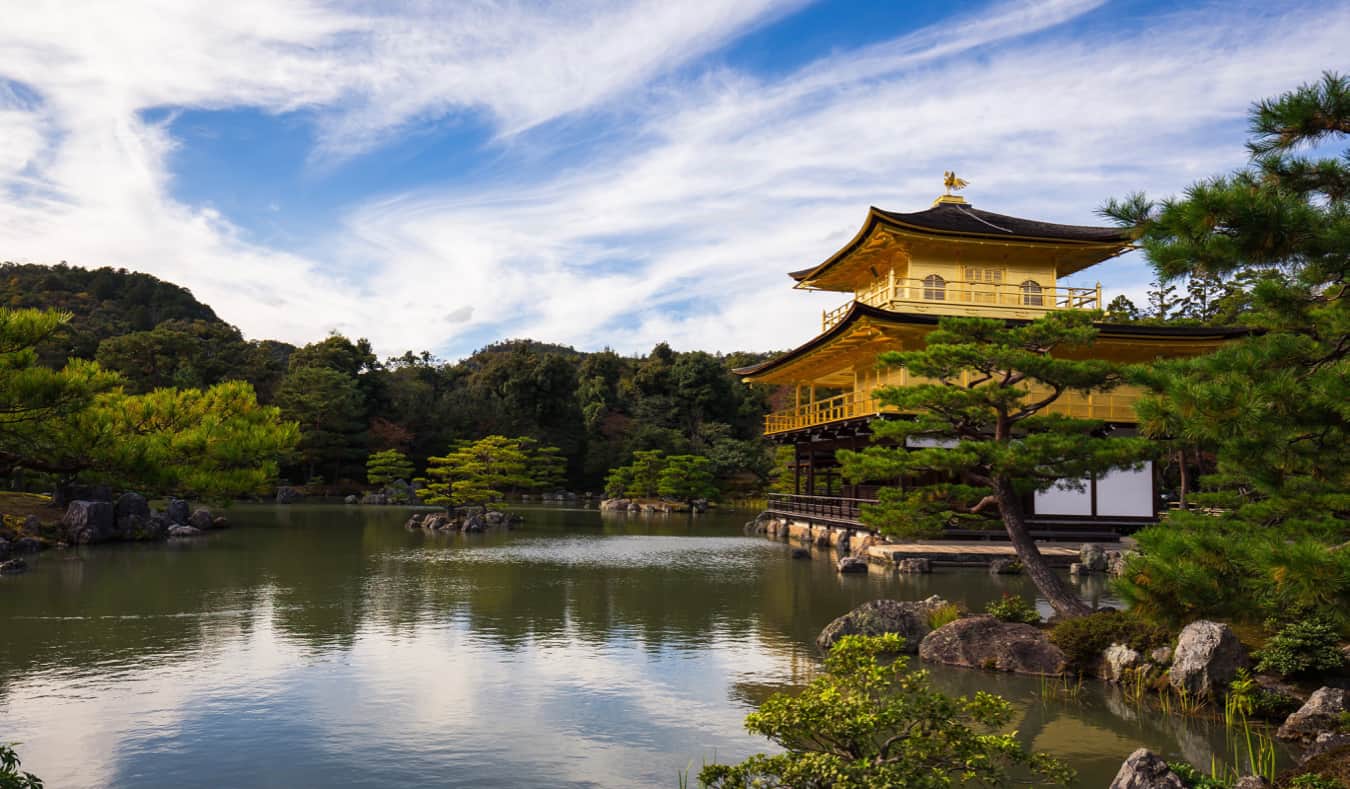
For years, I put off traveling to Japan because I was afraid of how expensive it would be. The rumors I’d heard about the country’s high prices made me hesitant to go. I’ve always loved Japanese culture, and I knew any visit would involve gorging on sushi and ramen, visits to lots of temples, and heavy train travel through the countryside.
But the thought of how much it would cost always made me think, “I’ll wait until I have more money.”
When I finally visited Japan years ago, I was shocked to discover that, while it isn’t exactly cheap, Japan isn’t the prohibitively expensive country many people think it is. In fact, I actually found Japan to be affordable and on par with (and sometimes cheaper than) countries in Western Europe .
In subsequent visits, I’ve learned to further master the country and turn high-cost Japan into an affordable place to visit.
Traveling in Japan doesn’t need to cost a lot of money. To help you plan your trip and avoid breaking the bank, here’s a detailed breakdown of how you can cut your expenses to visit Japan on a budget!
Table of Contents
How to Save on Transportation in Japan
How to save on food in japan, how to save on accommodation in japan, how to save on attractions in japan, how much money do you need to visit japan.
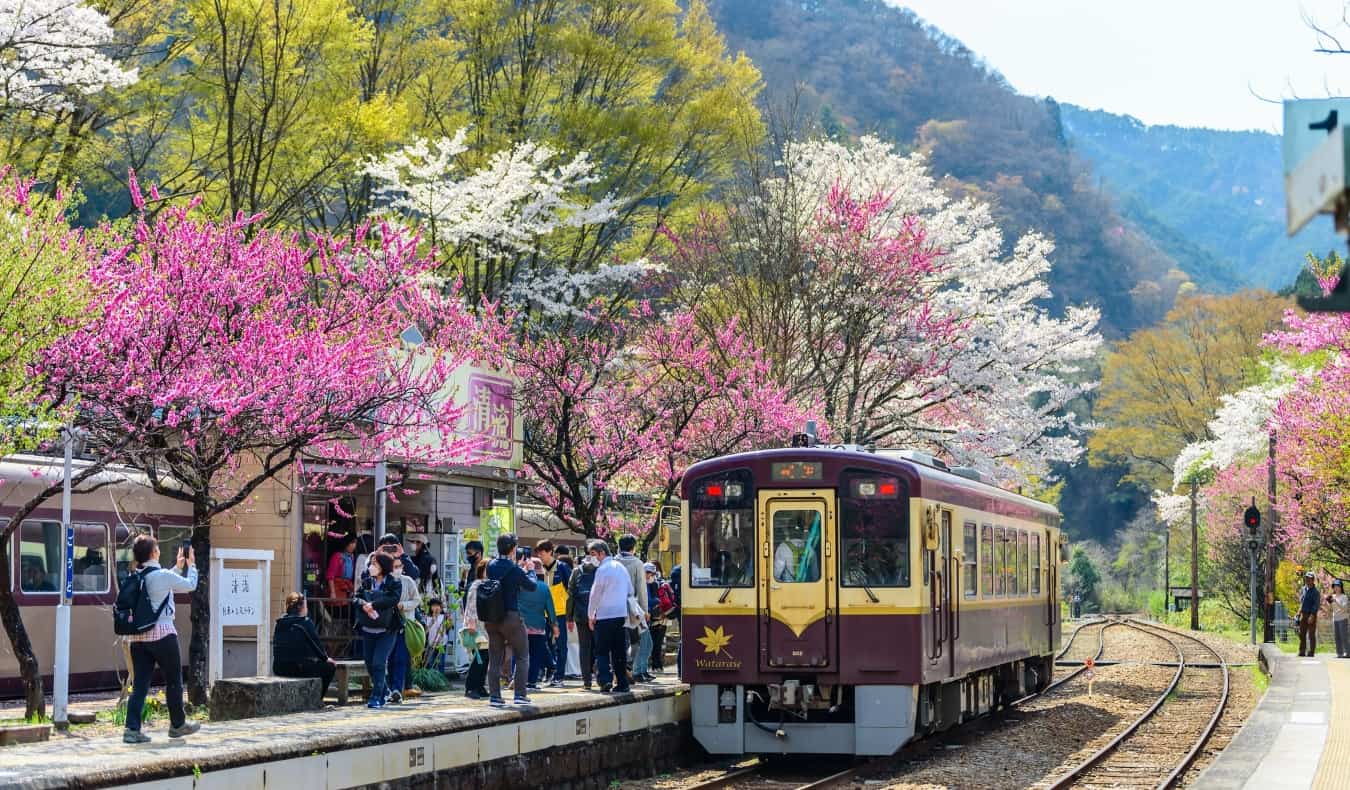
The pass has several options (each valid for consecutive days, not just travel days):
- 7 days: 50,000 JPY (70,000 JPY for a Green Pass)
- 14 days: 80,000 JPY (110,000 JPY for a Green Pass)
- 21 days: 100,000 JPY (140,000 JPY for a Green Pass)
All pass times are for consecutive travel (the Green Pass is the first-class option, though this isn’t really necessary as even standard cars are quite luxurious).
Compare that to single tickets, where the three-hour journey from Tokyo to Osaka costs around 36,000 JPY (round-trip), yet you can get a 7-day rail pass that includes unlimited travel on JR trains for 50,000 JPY. That single round-trip trip is almost the same price as the entire 7-day pass!
Moreover, these JR trains also serve local city areas and so can be used intra-city. I used my pass to get around Kyoto and Tokyo instead of buying metro tickets. So, even if you aren’t going to do much traveling around Japan, buying a pass is better than buying individual tickets. While the high price of the pass can cause sticker shock, the alternative is even worse.
While you used to be able to purchase passes in Japan, you can no longer do so. You must buy your JR pass online in advance so it can be mailed to you. Read more about how it works in my complete guide to the Japan Rail Pass .
Metro Most of the city metro tickets cost 150–300 JPY for a single journey. The price varies by distance and may often be higher. You can buy a day pass in most cities which gives you unlimited travel for 24 hours for 800-1,100 JPY.
Buses Buses are a less expensive alternative to the bullet train system in Japan, but they take more time. For example, the three-hour train ride from Tokyo to Osaka becomes a nine-hour bus ride. The price for that seat is just 4,500-8,000 JPY, but at some point, you need to think about how much your time is worth.
For me, the savings weren’t worth the extra hours of travel, since I had such limited time during my visit. If I’d had more time, I’d have taken the bus more often.
There are also bus passes available that offer unlimited travel and begin at 10,200 JPY for three non-consecutive days of travel.
Flights There are many budget carriers now serving Japan — you can find them on sites like Skyscanner . Peach and Jetstar are two of the main budget airlines available.
In general, their prices are on par with bullet train tickets. If you book well in advance, they may even be cheaper than the train. However, more often than not, they’ll be a bit more expensive and not really any faster if you’re going a short distance.
ANA also offers special last-minute fares via a hidden page on their website . It’s only available to foreigners and can sometimes be cheaper than the flights you find on Skyscanner, especially for longer routes around the country.
Just keep in mind that, by the time you get to and from the airport (and go through security), you might not be saving much time.
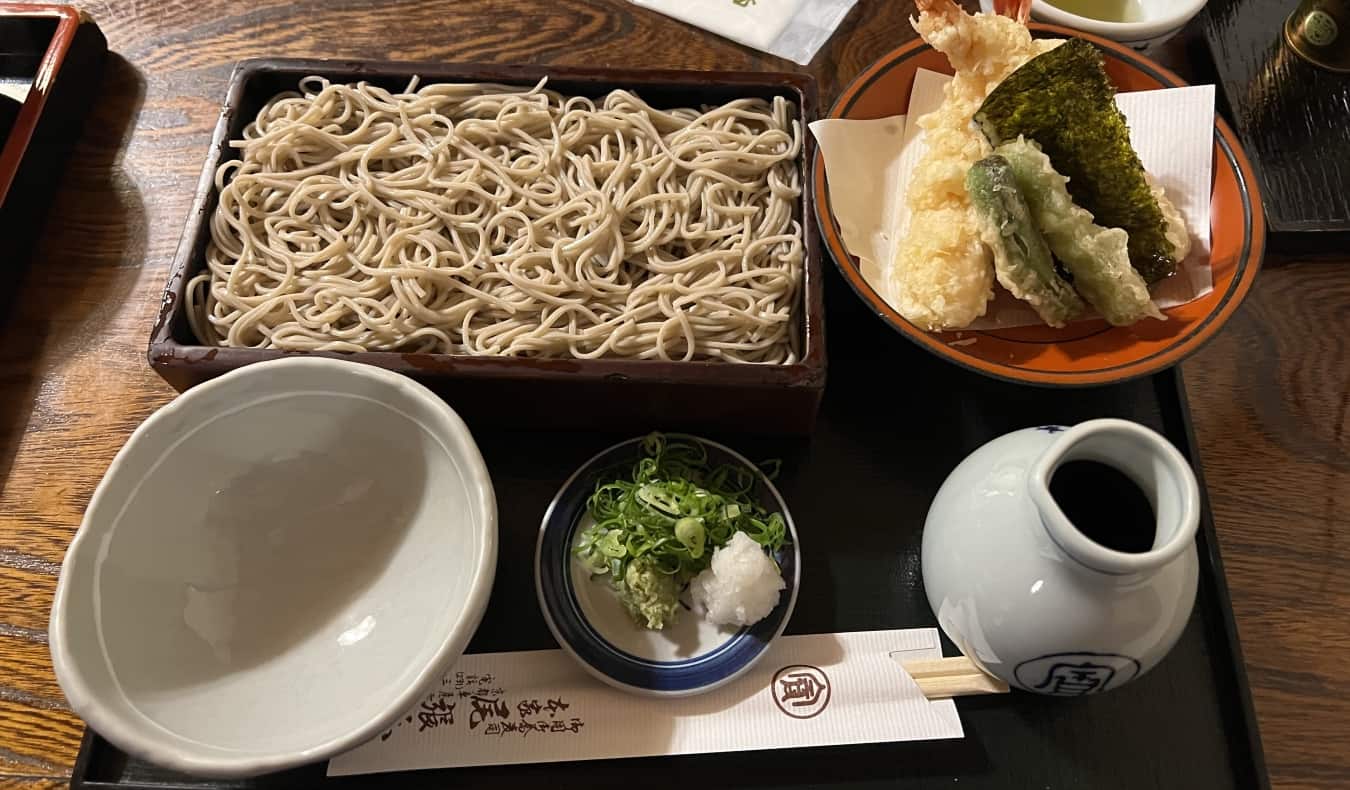
As long as I didn’t feed my sushi addiction, I found I could eat for less than 2,000 JPY per day. Some typical prices were:
- Sushi lunch sets (sushi, soup, salad): 1,600+ JPY
- Traditional Japanese set lunches: 1,500+ JPY
- Sushi trains: 125–625 JPY per piece
- Western dishes (sandwiches, burgers, pizza, etc): 1,200-1,500 JPY
- Fast food: 800 JPY
- Ramen: 1,200 JPY
- Tempura dishes: 480-1,100 JPY
There’s an array of cheap food options in the country so you don’t really need to spend much money on food (unless you want to splash out). You can save money on food in Japan by doing the following:
- Eat at “100-yen” shops – There are many 100-yen shops (the Japanese equivalent to dollar stores) in Japan, where groceries, water, toiletries, household items, and more are simply 100 JPY. I did all my shopping at these stores. Their names vary by region, so ask your hotel/hostel reception where the nearest 100-yen shop is located.
- Use sushi trains – Sushi in Japan is delicious at all levels. While I had a few fancy meals, you can’t beat the sushi trains for value. At 125-625 JPY per plate, I could stuff my face for less than 1,500 JPY most of the time. I usually just ate at sushi trains.
- Eat at 7-11 – 7-11, Family Mart, and other convenience stores have a lot of pre-set meals for under 500 JPY that make for cheap lunches. Additionally, supermarkets have many set meals at similar prices. I noticed this was a popular option for many Japanese people.
- Cook your food – Hostels (as well as many Airbnbs) have kitchens, where you can cook and cut your food expenses.
- Buy food before grocery stores close – After 8pm, many supermarkets discount their fresh food, as they have to get rid of it. You can save up to 50% on almost all ready-made meals. It’s a great cheap dinner.
- Avoid fresh fruit – The one rumor about Japan that turned out to be true was that fresh fruit and vegetables were expensive. Outside of shopping for an apple or banana at the market, I generally avoided fresh fruits and vegetables. They were too expensive.
- Eat curry, ramen, and donburi – I essentially lived off these three foods during my three weeks in Japan (on my first trip). Curry bowls and donburi (bowls of meat and rice) are the best ways to eat cheap and filling meals in Japan.
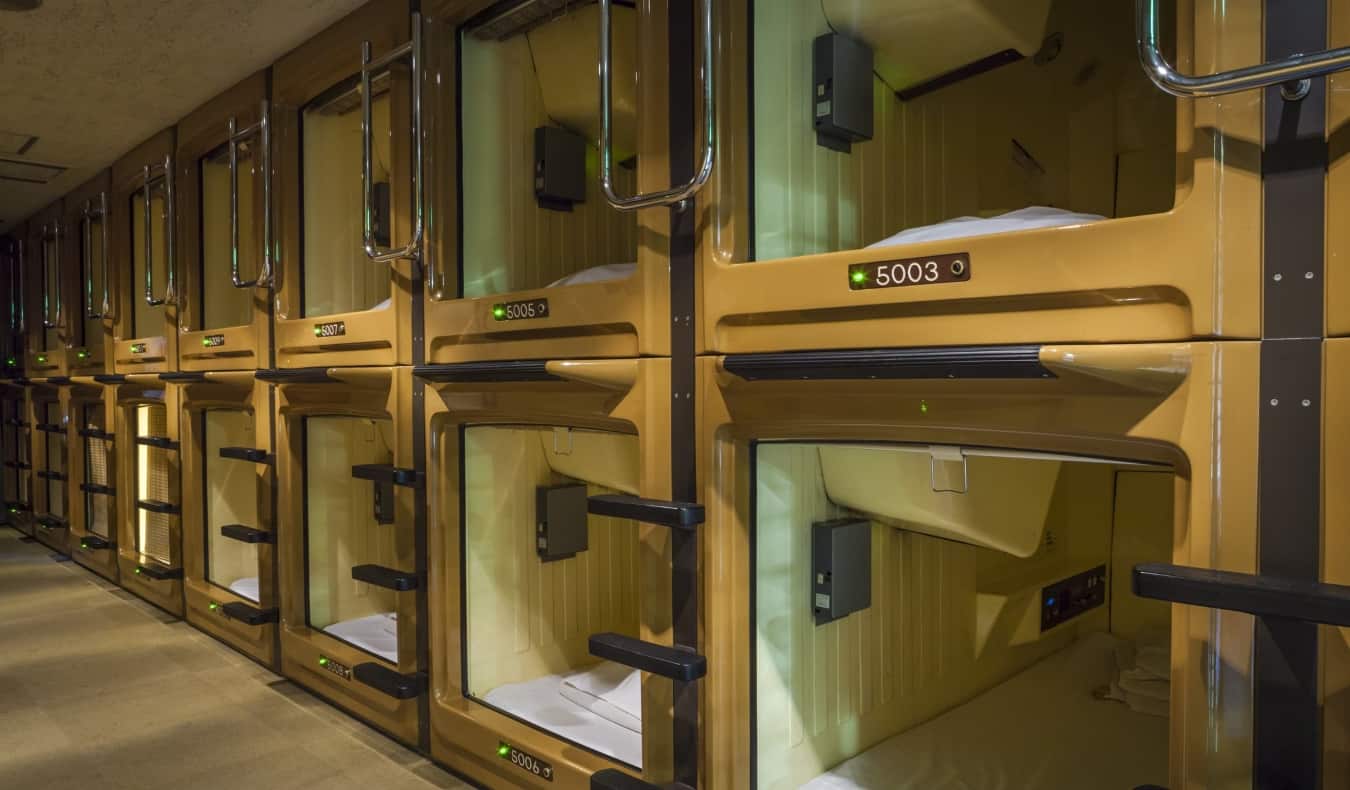
Hostel dorms typically cost 2,500-4,500 JPY per night and hotel rooms start at 6,000-10,000 JPY for a double room at a budget hotel. Capsule hotels cost between 3,000-5,500 JPY for a tiny pod that’s essentially just a bed. It’s not fancy, but it’s a unique (and very Japanese) experience.
Here are some ways to save on accommodation:
- Work for your room – Many hostels in Japan often let you stay for free if you clean for a few hours a day. Use a site like Worldpackers to find opportunities before you arrive.
- Stay with a local – Hospitality exchanges are not as widespread in Japan as elsewhere in the world, but there is a small, active Couchsurfing community here. A lot of expats enjoy hosting because it lets them get back in touch with other westerners so don’t hesitate to reach out to them as well. Just make sure you send a request ahead of time to increase your odds of success (especially in popular cities like Kyoto and Tokyo).
- Use credit card points – It’s times like these that points and miles come in handy. With the large sign-up bonuses that many hotel cards offer, you can get up to a week’s free accommodation! Here’s a list of my favorite travel credit cards!
- Capsule hotels – A step up from hostels and a step down from hotels, capsule hotels (pictured above) are tiny capsules you sleep in. You share bathrooms and common areas, and your capsule has a light, outlet, and sometimes a small television. They are frequently used by businessmen who work late. These capsules are usually around 3,000-5,500 JPY per night.
- Airbnb – Airbnb is a budget-friendly option if you’re traveling with a larger group. Airbnb in Japan is heavily regulated, meaning that prices are high (as there are less Airbnbs), and there are a few caveats for your stay. First, only hosts who have registered with the government can list accommodation. Second, you’ll need to send a copy of your passport to your host before arriving or let them copy your passport when you check in. That said, it’s an affordable choice for anyone traveling as a group/family. If you’re traveling on your own, a hostel dorm, capsule hotel, or even a budget hotel room are all cheaper.
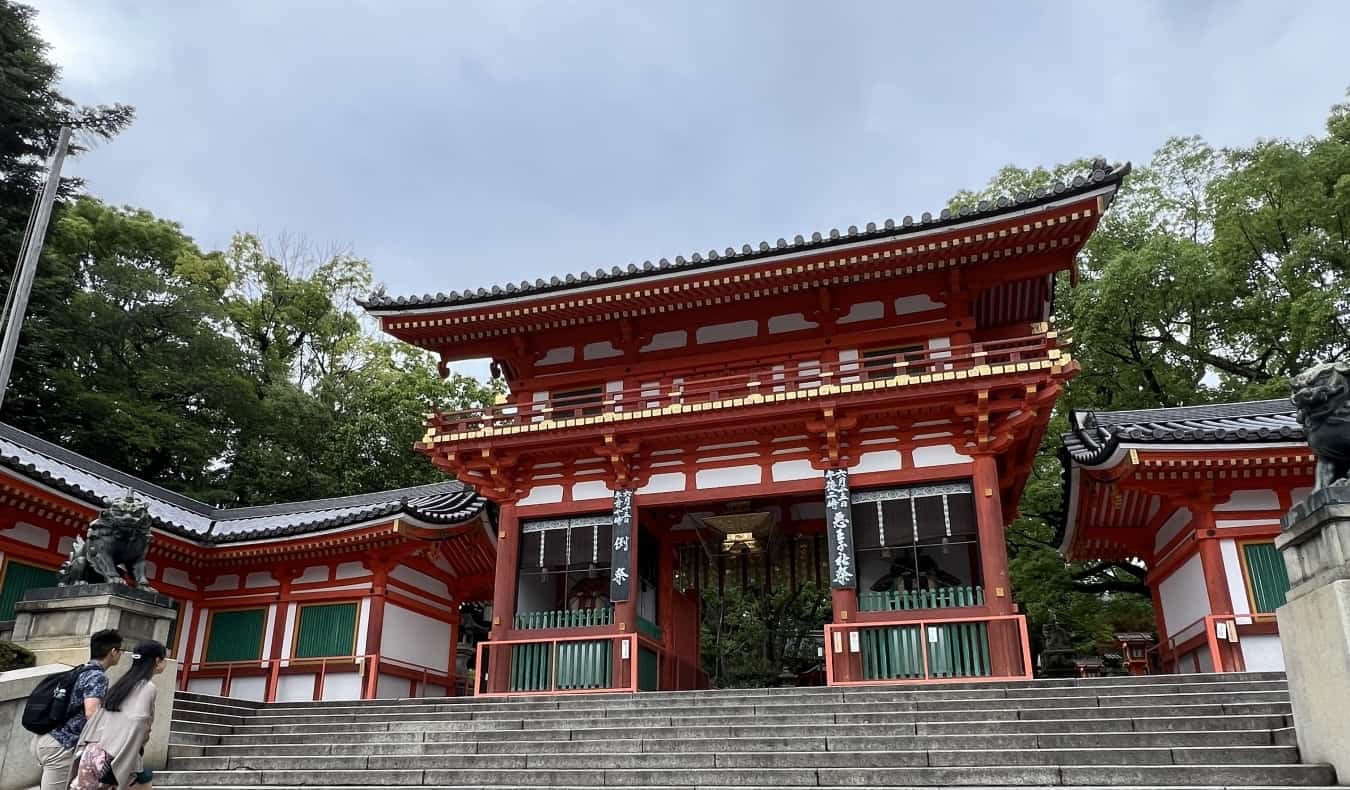
Overall, I found these passes to be the best way to save money on temples, museums, and other attractions. Additionally, there are many free gardens, temples, and parks! I hardly spent any money on attractions while I was in Japan.
If you do want to visit paid attractions or do tours (like walking tours), Get Your Guide is the best place to book tickets and tours.

Traveling around Japan can be affordable if you know what to do and keep an eye on your costs. You can save money in Japan by living like a local.
If you’re staying in a hostel, buying a rail pass , eating relatively cheap food, and visiting a few attractions, budget around 10,000-16,000 JPY per day.
However, by utilizing the tips above, I think you can travel Japan for 7,000-10,000 JPY per day. Japan shouldn’t cost you more than that per day if you don’t splurge. This would mean more bus travel, a (very) limited amount of sushi, cooking most meals, free attractions, and the occasional night Couchsurfing (or other free accommodation).
I saw lots of travelers in Japan traveling on the cheap. They did it, and it’s possible — but you’ll never feed your sushi addiction if you travel this way.
To me, budget travel is value travel. Japan is never going to be as cheap as traveling through Southeast Asia , but Japan has plenty of ways to visit on a budget. Japan will never cost $20 USD per day, but it also doesn’t need to cost hundreds either.
Whenever people go to Japan and come back, they always say, “It wasn’t as expensive as I thought.” I hope this article taught you that! Stick to the discount transit, local food, and local accommodation, and you’ll keep your costs low.
Book Your Trip to Japan: Logistical Tips and Tricks
Book Your Flight Use Skyscanner to find a cheap flight. They are my favorite search engine because they search websites and airlines around the globe so you always know no stone is left unturned!
Book Your Accommodation You can book your hostel with Hostelworld as they have the biggest inventory and best deals. If you want to stay somewhere other than a hostel, use Booking.com as they consistently return the cheapest rates for guesthouses and cheap hotels.
Don’t Forget Travel Insurance Travel insurance will protect you against illness, injury, theft, and cancellations. It’s comprehensive protection in case anything goes wrong. I never go on a trip without it as I’ve had to use it many times in the past. My favorite companies that offer the best service and value are:
- Safety Wing (best for everyone)
- Insure My Trip (for those over 70)
- Medjet (for additional evacuation coverage)
Looking for the Best Companies to Save Money With? Check out my resource page for the best companies to use when you travel. I list all the ones I use to save money when I’m on the road. They will save you money when you travel too.
Be sure to check out the Japan Rail Pass if you’ll be traveling around the country. It comes in 7-, 14-, and 21-day passes and can save you a ton of money!
Want More Information on Japan? Be sure to visit our robust destination guide on Japan for even more planning tips!
Got a comment on this article? Join the conversation on Facebook , Instagram , or Twitter and share your thoughts!
Disclosure: Please note that some of the links above may be affiliate links, and at no additional cost to you, I earn a commission if you make a purchase. I recommend only products and companies I use and the income goes to keeping the site community supported and ad free.
Related Posts

Get my best stuff sent straight to you!
Pin it on pinterest.
- Media & Industry
- Meetings & Events
- Select Language 简体中文 繁體中文(香港) 繁體中文(臺灣) India (English) Bahasa Indonesia 한국어 ภาษาไทย Tiếng Việt Singapore (English) Philippines (English) Malaysia (English) Australia/New Zealand (English) Français Deutsch Italiano Español United Kingdom (English) Nordic countries(English) Canada (English) Canada (Français) United States (English) Mexico (español) Português العربية Japan(日本語) Global (English)
- India (English)
- Bahasa Indonesia
- Singapore (English)
- Philippines (English)
- Malaysia (English)
- Australia/New Zealand (English)
- United Kingdom (English)
- Nordic countries(English)
- Canada (English)
- Canada (Français)
- United States (English)
- Mexico (español)
- Global (English)
- Fujiyoshida
- Shimonoseki
- Ishigaki Island
- Miyako Island
- Kerama Island
- Tokyo Island
- Koka & Shigaraki
- Hida Takayama
- Ginza, Nihonbashi
- Beppu & Yufuin (Onsen)
- Ginzan Onsen
- Nagasaki Islands

- Kumano Kodo
- Shikoku Karst
- Amami Oshima
- Hachimantai
- Omihachiman
- Aizuwakamatsu

- Diving in Japan
- Skiing in Japan
- Seasonal Flowers in Japan
- Sustainable Outdoors
- Off the Beaten Track in Japan
- Scenic Spots
- World Heritage
- Home Stays & Farm Stays

- Japanese Gardens
- Japanese Crafts
- Temple Stays
- Heritage Stays
- Festivals and Events
- Theater in Japan
- Japanese Tea Ceremony
- Cultural Experiences in Japan
- Culture in Japan

- Local Cuisine Eastern Japan
- Local Cuisine Western Japan
- Local Street Food
- Japan's Local Ekiben
- Japanese Whisky
- Vegetarian and Vegan Guide
- Sushi in Japan Guide
- Japanese Sake Breweries

- Art Museums
- Architecture
- Performing Arts
- Art Festivals
- Japanese Anime and Comics
- Japanese Ceramics
- Local Crafts

- Scenic Night Views
- Natural Wonders
- Theme Parks
- Samurai & Ninja
- Iconic Architecture

- Wellness Travel in Japan
- Japanese Ryokan Guide
- A Guide to Stargazing in Japan
- Relaxation in Japan
- Forest Bathing (Shinrin-yoku)

- Experiences in Japan
- Enjoy my Japan
- National Parks
- Japan's Local Treasures
- Japan Heritage
- Snow Like No Other
- Wonder Around Japan

- Visa Information
- Getting to Japan
- Airport Access
- COVID-19: Practical Information for Traveling to Japan
- Anime Tourism
- Countryside Stays
- Accessible Tourism
- Hokkaido Great Outdoors
- Scenic World Heritage in Tohoku
- Shikoku’s Nature and Traditions
- Southern Kyushu by Rail

- Traveling by Rail
- How to Travel by Train and Bus
- JR Rail Passes
- Scenic Railways
- Renting a Car
- Sustainable Travel in Japan
- Travel Brochures
- Useful Apps
- Online Reservation Sites
- Eco-friendly Accommodation
- Luxury Accommodations
- Traveling With a Disability
- Hands-free Travel
- How to Book a Certified Tour Guide
- Volunteer Guides
- Tourist Information Center

- Japanese Manners
- Spring in Japan
- Summer in Japan
- Autumn in Japan
- Winter in Japan
- Cherry Blossom Forecast
- Autumn Leaves Forecast

- Japan Visitor Hotline
- Travel Insurance in Japan
- Japan Safe Travel Information
- Accessibility in Japan
- Vegetarian Guide
- Muslim Travelers
- Safety Tips

- JAPAN Monthly Web Magazine
- Arts & Cultures
- Nature & Outdoor
- Festivals & Events
- Insider Blog
- Things to do
- Local Guides
- Food & drink
- Traditional
- Hokuriku Shinetsu

My Favorites
${v.desc | trunc(25)}
Planning a Trip to Japan?
Share your travel photos with us by hashtagging your images with #visitjapanjp
GUIDE Guide to Traveling Japan on a Budget A guide to budgeting your trip to Japan
- Stories & Guides
- Guide to Traveling Japan on a Budget
Plan in advance to make your trip to Japan affordable
You may have heard that Japan is an expensive place to visit, but don't be discouraged. With some advance planning, Japan is an affordable destination for even the most budget-conscious traveler. Take some time to decide which options best suit your budget.
There are a wide variety of budget accommodation options, transportation passes and sightseeing discounts available. Browse our list for more details.
Transportation
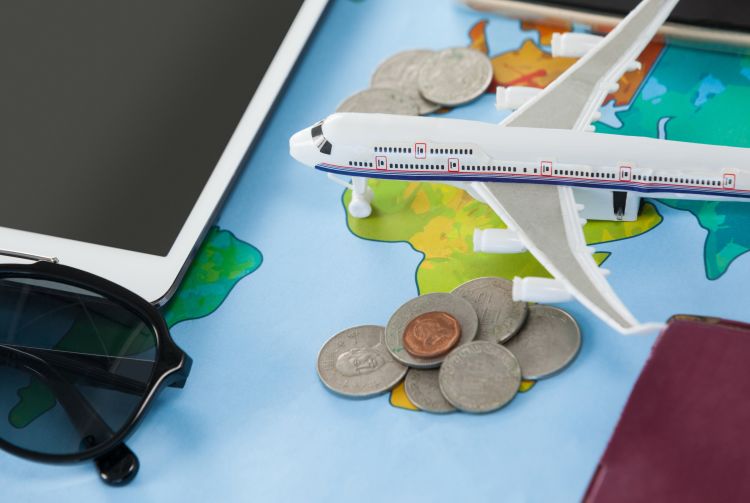
Long distance buses
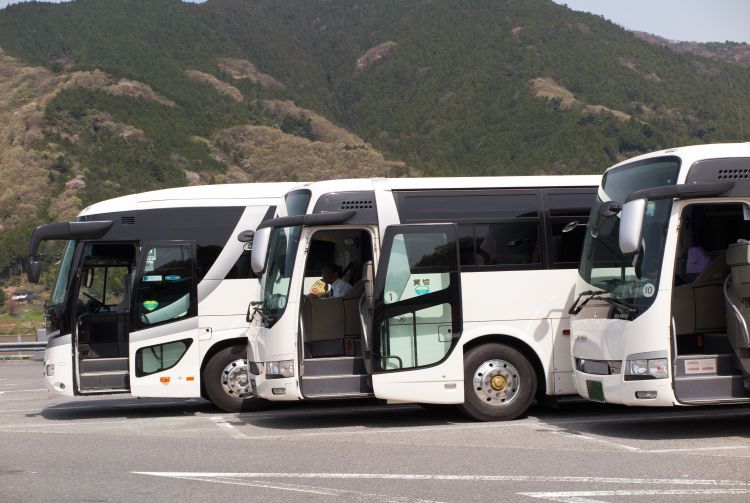
Ferries and passenger boats
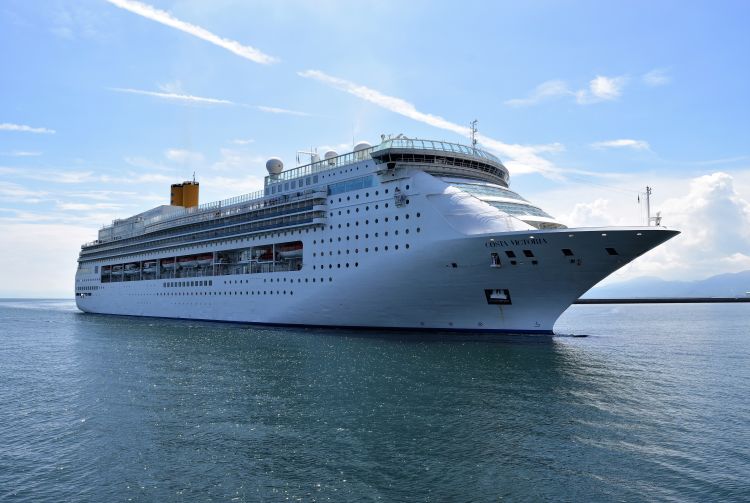
Accommodations
Dining out in Japan doesn't have to be expensive, and is often better value for money than most other world capitals. Wherever you travel, restaurants in popular tourist areas will always cost more. Follow the locals and you will generally find both lower prices and more authentic Japanese cuisine. Avoid restaurants that don't list their prices outside the door. Budget dining can usually be enjoyed at more casual establishments such as izakaya (Japanese pubs), shokudo (small casual restaurants, often with set meals), kaitenzushi (conveyor belt sushi) and okonomiyaki restaurants.
Comparing Prices
Improvements in the foreign exchange rate mean more favorable prices for overseas visitors to Japan. The price chart on this page is designed to give an idea of what you can expect to pay for a variety of everyday and travel-related items in Japan.
The latest information may differ, so please check the official website.
* The information on this page may be subject to change due to COVID-19.
- Story & Guide
- Travel Tips
Did this information help you?
out of found this information helpful.
Thank you for your feedback.
Recommended for you.

Please Choose Your Language
Browse the JNTO site in one of multiple languages
- Philippines
- South Korea
- National Parks
- Travel Stories
- How Much Does It Actually Cost to Travel the World?
- What’s In My Backpack: The Ultimate Long-Term Travel Packing List
- My Favorite Non-Fiction Travel Books
- All Budget Travel Resources
- Writing Portfolio
15 Tips For Visiting Japan on A Budget (How to Travel Cheap in Japan!)
This post may contain affiliate links. This just means I may receive a small commission at no extra cost to you for helping them promote their product or service. I don’t endorse any services I don’t personally use or recommend.
Japan is widely known as the most expensive destination in Asia. I’m not going to contest that fact, but I am going to show you how to save LOTS of money on your next trip. Because Japan is one of those places that everyone wants to visit. A bucketlist destination if you will. While it wasn’t cheap, it was also not nearly as expensive as we had originally thought. And with these tips for visiting Japan on a budget, it can even be a rather affordable destination open to exploration by all kinds of travelers.
This list isn’t going to include any Workaway or long-term travel tips for those staying months in the country. Instead, it’s going to focus on actionable easy budget-saving tips that people on a short trip can use to save bigtime in Japan.
15 Tips For Visiting Japan On a Budget
Transportation is by far the most expensive cost for travelers in Japan. We’re gonna start with ways that you can save while hopping from destination to destination in the country.
1. The big question: Japan Rail Pass or no Japan Rail Pass?
I actually wrote an entire post detailing my decision NOT to buy the Japan Rail Pass for $370 per person. The low-down is that we saved about $100 each by purchasing bullet train tickets on our own. We didn’t have to do an immense amount of research either. We just turned up and bought tickets.

Check out my full post to see everywhere we went so you can compare your itinerary and make sure that buying the Japan Rail Pass isn’t right for you.
2. Get Unreserved Train Seats.
When you’re purchasing your Shinkansen (Bullet Train) tickets be sure to specify that you want unreserved seats. This means you’ll be sitting somewhere in cars 1-6 and left to choose your own spot. These are much cheaper. If you’re traveling as a duo you’ll most likely still be able to find seats next to one another.
3. Choose buses.
Buses are cheaper than trains & astronomically cheaper than bullet trains. If time isn’t a constraint for you (or if you can plan for these travel days) choose at least a few buses to save hundreds of dollars.
4. USE the Metro!
I probably don’t need to tell you that Japan has impressively clean, well-connected metro and train lines in each major city so you’ll never need to use a taxi. You can reach every single destination by metro, bus, or walking. I promise. In slightly smaller cities biking is a great way to get around and is very popular among Japanese people.
Keep in mind that most metro stations (and all buses) require cash to purchase tickets.
5. Skip the SIM.
Everyone told us you need a SIM card to travel in Japan. But honestly, we found Japan super easy to travel without one. There’s free wifi everywhere (buses, trains, some towns) and maps.me has accurate metro info for offline use. All kiosks for restaurants and metro use had English language options and for the few menus that didn’t— use can download Google translate offline.
6. Book your accommodation ahead of time.

Budget-friendly places fill up first. Unfortunately, Japan is one of those countries where planning ahead is going to save you lots of money. Our guesthouses and hostels were all booked on Booking.com and Hostelworld.com for anywhere from $7.50-$23 per person. Hakone and the areas around Mt Fuji are the most expensive regions while Osaka had a $15 private room (not a great one but hey, what can you expect).
You’ll probably need to book at least a month ahead for the high season.
7. Where you stay in Tokyo matters.
Tokyo is huge. Sprawling. But luckily there are lots of interconnected metros including one circular JR line that rings the best part of the city. We stayed in Nippori. This is in the far northeastern part of the city. Most of the places we wanted to see were located in the West and Southwest. This meant lots of metro trips, most 40 minutes or more.
If you plan to stay less than 4-5 days in Tokyo, instead of simply choosing the cheapest place to stay, look for a conveniently located neighborhood. Otherwise, you’ll spend a lot of time and money on the metro.
Consider the 24-hour Tokyo Pass (cost: 800 yen) on days you’ll do LOTS of sightseeing in various neighborhoods. You can purchase it at all the major metro stations.
8. Don’t visit ANYWHERE on a weekend.
Obviously, you have to do something on a weekend. Make sure it’s Tokyo, Osaka, or another major city. Tourist cities like Hiroshima, Kyoto, Magome, Hakone, and more are absolutely flooded with local tourists. I mean A LOT of tourists. It’s kind of insane. You’ll have to wait in incredible lines. Plan accordingly.
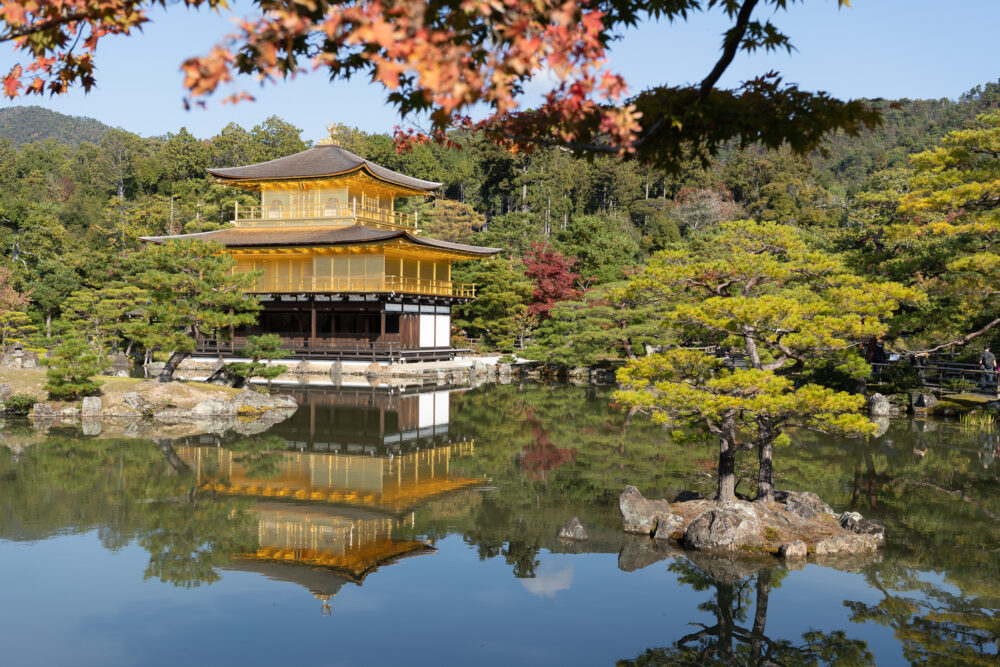
9. Kyoto is all about picking and choosing.
To keep Kyoto budget-friendly you can’t see everything. Many Buddhist temples in the city charge an $8-$15 entrance fee. This is probably to combat overtourism in an area that sees an incredible amount of visitors. We found that the free shrines were often the best because they saw fewer people and it wasn’t just massive crowds jostling for a photo op. Shoren-in Temple even has a tea ceremony that’s authentic for half the price of typical touristy tea ceremonies. I wrote about how to attend it here.
I recommend making a list of a few attractions and sticking to those rather than trying to see everything. These are our favorite things in Kyoto.
- Bike to the Bamboo forest just out of town early in the morning.
- Hike to the top of Fushimi Inari Taisha, not just a quick photo op visit.

If you’re looking to splurge on food in Kyoto, and it’s got some excellent options, definitely pay Teppan Tavern and La Bac a Sable a visit. Teppan Tavern serves Wagyu A5, traditional Kyoto bites, and homemade Umeshu (plum wine) that’s better than anywhere else for dinner. Seriously, this is the highlight of Japanese hospitality and it won’t break the bank. We spent $40 on a full meal with a few drinks. The French bakery is the perfect lunch pick-me-up.
10. 7/11, Family Mart, and Lawsons.
These are convenience stores scattered all over Japan. They have the cheapest beer and chu-hi, the cheapest coffee, and a wide array of Japanese snacks and desserts. But the best part is the bento boxes and hot food. You might be put off by the sushi, pizza or curry stuffed bao, habanero chicken strips, and tonkatsu meals but they are actually excellent and good quality! It’s a very popular stop for commuting Japanese residents. Keep in mind that hot food is usually restocked just before popular meal times.

In my professional opinion, the best food goes to Family Mart— but the best coffee goes to Lawsons.
Most restaurants don’t open until 10-11 AM and few hostels offer breakfast which leaves you out of luck. But these stores are a great cheap option for breakfast. Or late night meal. Or lunch.
11. Another cheap meal option? Conveyor belt sushi.
These places are the best. And they happen to be the most budget-friendly restaurants for great traditional Japanese sushi. You can typically get 10 plates between $8-15 depending on the items you select. This is a great way to familiarize yourself with sushi menus and sample new things too without having to commit to a whole set.

12. Share meals!
Unlike South Korea , a country we visited just before Japan, it’s very easy to order one dish and share. In Korea, you often pay by the person for popular meals like Korean BBQ. A major pain in the wallet for budget travelers looking to sample a lot of different items. Japan, fortunately, does not follow this rule and it’s quite easy to share several small plates for cheap.
13. Buy food for your Magome excursion.
I wrote an entire post detailing everything you need to know about hiking from Magome to Tsumago. I highly recommend this trip but since all restaurants close by 5 PM and I found most to be overpriced in the area— be sure to buy your own food from a Family Mart before you head to the mountains. Don’t forget trail snacks!
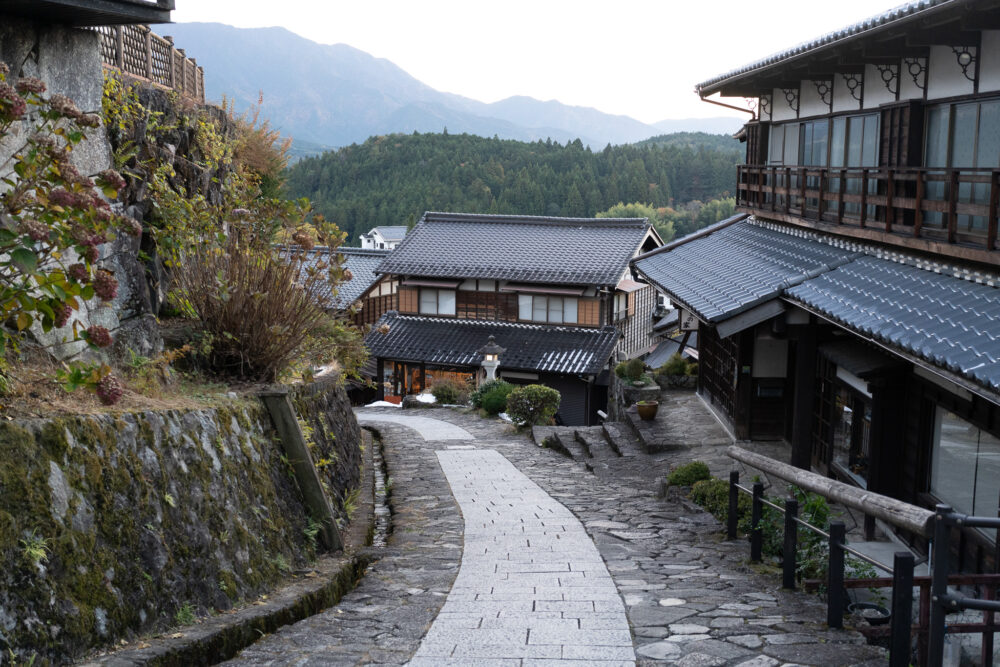
14. Beer is the most expensive alcohol in Japan.
Skip the beer and instead opt for Japanese Whisky highballs, Plum Wine, Shochu, and sake for cheaper drinking options.
15. Choose Omoide Yokocho over Golden Gai for a night out.
If you are looking for Tokyo drinking hot spots and nightlife, Omoide Yokocho is cheaper and more authentic than the late-night Golden Gai district. In Golden Gai, the drinks aren’t as strong and you’ll often have to pay a cover to even sit at the bar. It was still worth wandering through the alleys of each but I much preferred Omoide for dinner and a night of drinking.

How much did we spend in Japan on a Budget?
Let’s look at a quick budget breakdown of what we spent while visiting the country. Keep in mind, we only took trains and bullet trains because we had a short amount of time. We also didn’t know many of the above tips beforehand and would have booked our Magome accommodation much further in advance. So basically, I think you could save hundreds by following our tips above.
How much we spent in total for 19 days for two people: $2,687.55
How much we spent per day per person: $70.72 per day per person!!!
I hope this information helps you feel more confident to visit Japan on a budget and save lots of money while you do so! This was our most expensive trip BY FAR and with these tips, we could have easily cut costs by hundreds of dollars. Let me know in the comments if you think you have any Japan budget travel tips to add to my list.
Save This Post For Later!
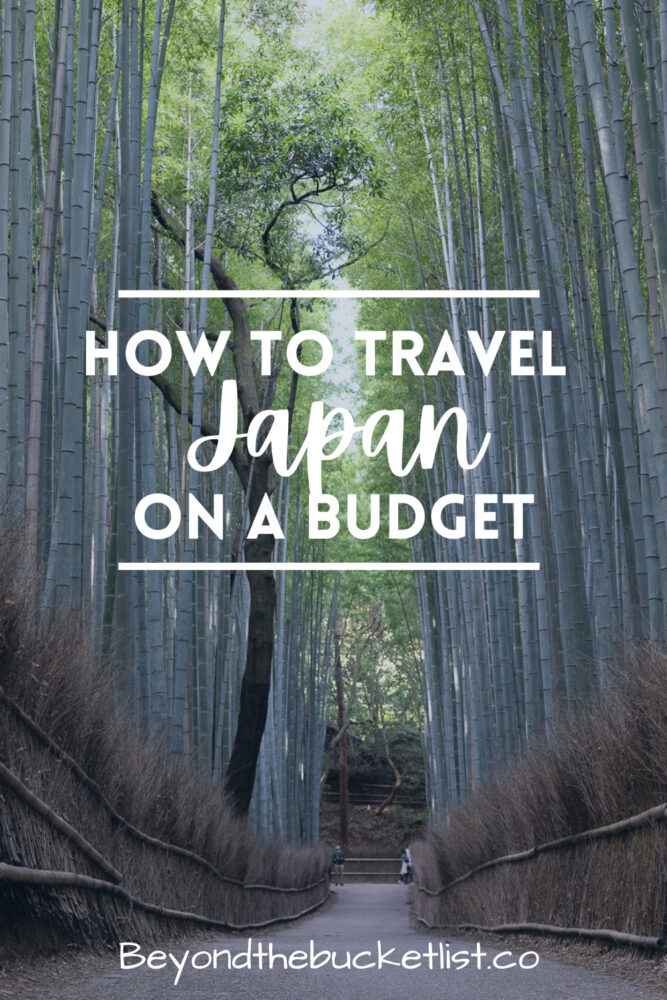
Further Reading...

5 Savvy Money-Saving Tips to Save You Hundreds Abroad

How to Save More Money for Travel & Tips to Make Your Dream Trip Cheaper
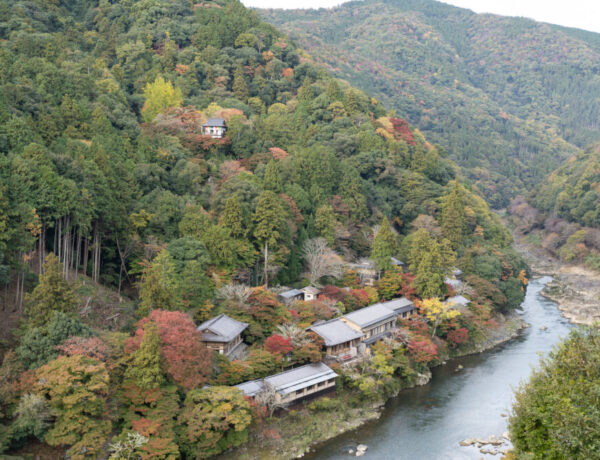
Is the Japan Rail Pass Worth It? Why I DIDN’T Buy One.
You suggested to hike to the top of Fushimi Inari Taisha. While I agree hiking up is really cool, I was underwhelmed because there really aren’t any great views so doing the entire top loop felt a waste. I did it at night which was totally cool, but eerie. You could hear but not see the monkeys in the trees.
Leave a Reply Cancel Reply
Save my name, email, and website in this browser for the next time I comment.
Notify me of new posts by email.
Sign up to our newsletter!
This site uses Akismet to reduce spam. Learn how your comment data is processed .
10 Days in South Korea: A Mini Travel Guide (2023)
How to experience a traditional japanese tea ceremony in kyoto, beyond_the_bucketlist.


Budget Travel in Japan – Ultimate Backpacking Guide [2024]
- Last Updated: February 5, 2024
From seeing up close the famous Mt Fuji, exploring the architecture of Japanese castles to slurping down the best bowl of ramen you ever had, all these epic memories to-be-made are possible even with our guide to budget travel in Japan .
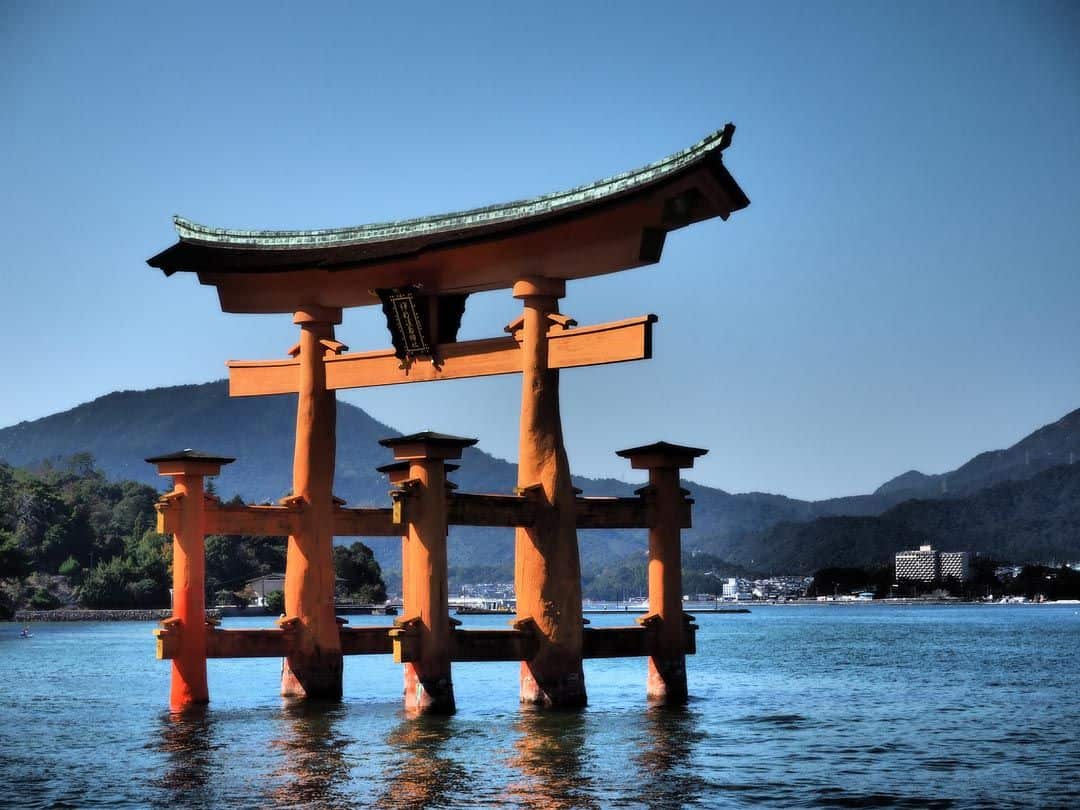
Today’s Japan is a fascinating example of blending the ancient traditions and modern day culture.
Throughout the country you’ll witness dynamic mountainscapes in stark contrast to futuristic cities that are inspiring new trends in architecture worldwide.
It’s also thought of to be notoriously expensive but we managed to travel to Japan on a budget, and so can you.
Table of Contents
Get A JR Rail Pass
Take some flights, deals in hiroshima, deals in osaka, deals in kyoto, deals in tokyo, cheap eating and drinking in japan, save this pin for later, budget travel in japan.
Japan has had a reputation as being expensive for a very long time, people paying hundreds of dollars for a piece of Kobe beef or a sliver of the finest blue fin tuna.
Prices of hotels can be among some of the most expensive in the world. Public travel, whilst incredibly reliable, can sometimes be quite expensive.
Well, some of this is true and some of it is a little more than a rumour that we have all perpetuated. Many people are put off traveling around for a long period of time because of the belief that the costs will be astronomical.
This isn’t always the case.
We have just finished 1 month of travel in Japan and it is comfortably cheaper than Australia, New Zealand, Western Europe and in some cases is even cheaper than China!
It sounds crazy, but here are a few really simple tips for budget travel in Japan that will save you some dollars on your next trip.
Note – At time of travel $1 USD was equal to about 110 Japanese Yen.
READ MORE: Don’t miss our brand new complete guide to help you travel to Japan!
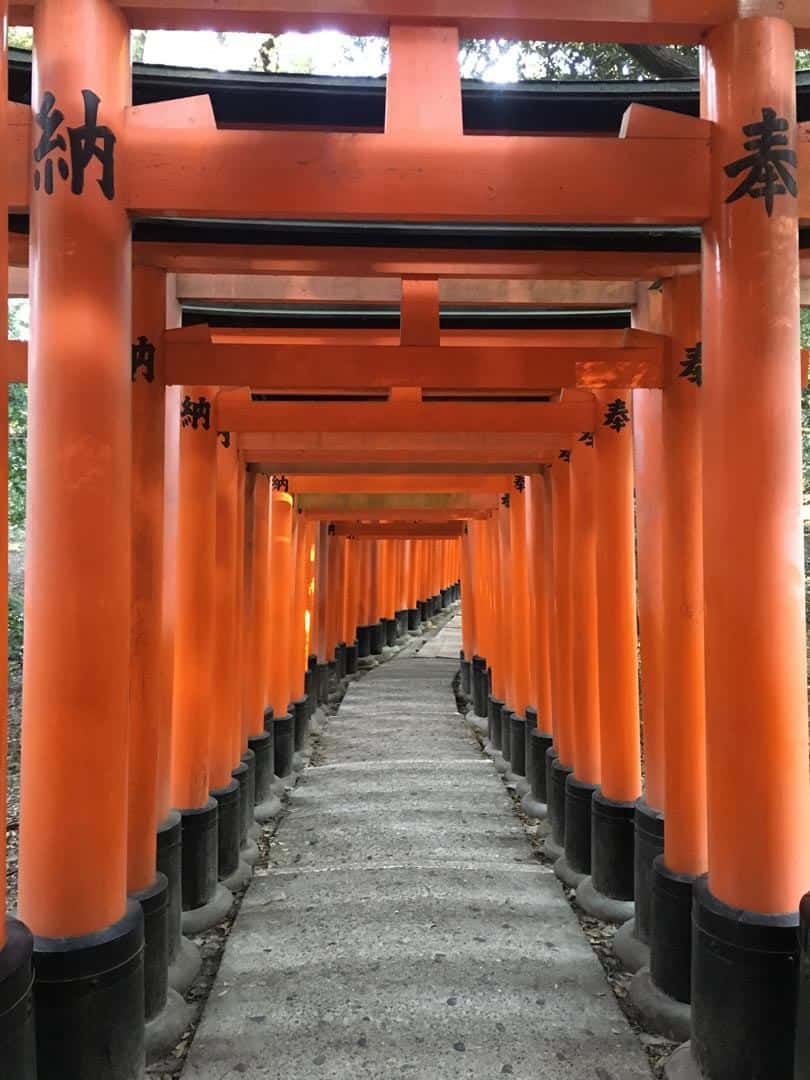
This is a no-brainer. Anyone travelling between cities in Japan should consider investing in one of these.
However be very careful about which JR pass you choose as you could end up spending more than you need to.
I’ll use our situation as an example.
We spent our first 12 days figuring out an excellent Hokkaido itinerary , which is absolutely incredible and definitely our favourite part of Japan. From Sapporo we flew down to Hiroshima .
From here we planned to go on to Miyajima, Osaka, Himeji, Nara, Kyoto and Tokyo.
A few of these were day trips and a few were for a bit longer, but as you can see we had a lot of travel ahead of us.
A regular JR pass that allows travel across the whole country costs 29,100 yen. This is incredibly reasonable. If you take a train from Tokyo to Kyoto, throw in a day trip to Nara and you’ve started saving money.
Our plan was as follows:
- 3 days – Hiroshima and Miyajima
- 2 days – Osaka
- 1 day – Himeji
- 1 day – Nara
- 4 days – Kyoto
- 5 days – Tokyo
We decided to purchase a Kansai-Hiroshima pass through JR West for 13,500 yen per person.
We activated this when we travelled from Hiroshima to Osaka. We used it for our day trips to Himeji, Nara and our trip to Kyoto. We then travelled from Kyoto to Tokyo by night bus for 6500 yen per person.
A total of 20,000 yen, 9000 yen less than a 7 day rail pass.
We would not have had time to do everything we wanted to do around Kansai and get to Tokyo in 7 days. Hence why we elected to go this route.
The JR pass website states that a JR pass cannot be used on the Nozomi or Mizuho trains. However if you purchase ANY JR west railway pass, which ours was, you can use these trains. This is great for longer routes, notably Hiroshima to Osaka/Kyoto.
Plan where you want to go and what you want to see and then search on the Klook website to find the pass that best fits your plan.
You could end up saving yourself a lot of money.
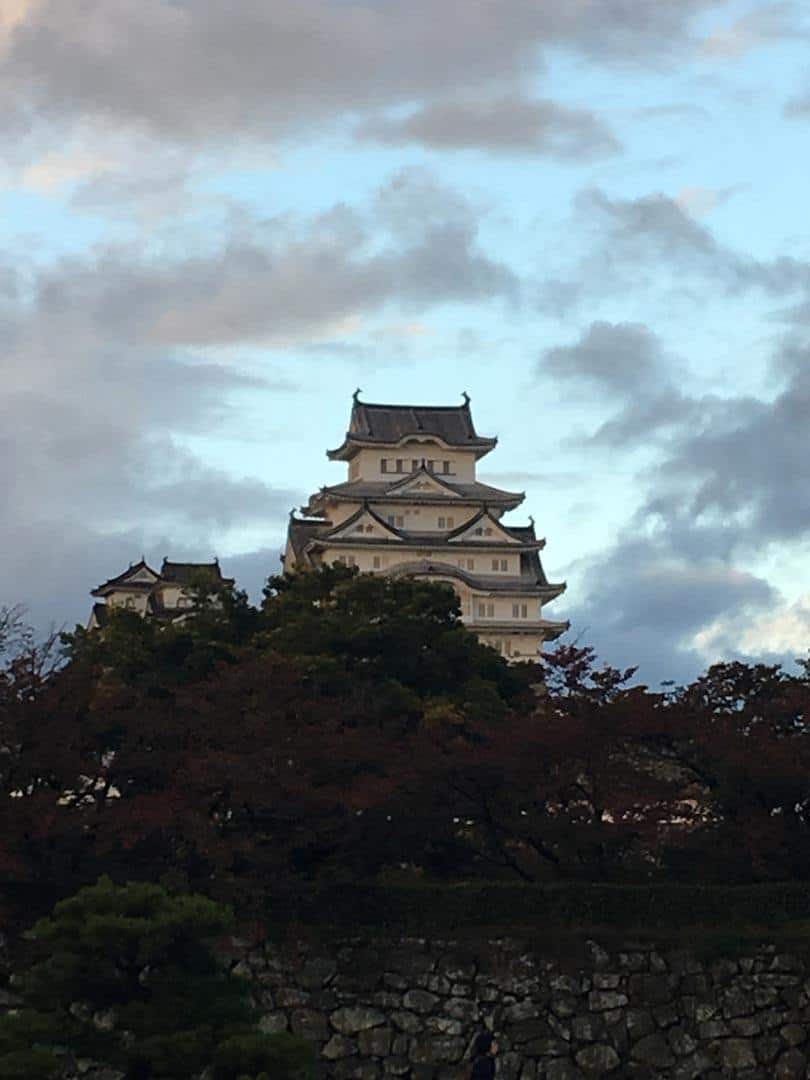
I read about this little deal on the amazing website Japanguide , a must for anyone planning a trip to the land of the rising sun.
In essence, this deal covers cheap flights all over Japan for any visitors to the country. It’s advertised as a 10,000 yen deal however there are some flights that are cheaper and some that are slightly more expensive.
We paid 10,000 yen each to fly from Sapporo to Hiroshima. If we were to booked these flights without this deal it would cost us closer to 50,000 yen per ticket.
There are two airlines that participate in this amazing deal: JAL and ANA. We ended up flying with ANA and it was great.
One thing to remember is that for this to work you usually have to book from outside Japan. As always in Japan there are a variety of deals.
The deals that we researched are linked below, but the link above has information on all of the deals available.
- JAL – Japan Explorer Pass
- ANA – Experience Japan
Both of these links take you straight to the booking page where you can research and compare prices. This deal is a must for anyone looking to get away from the Tokyo-Kyoto-Osaka route. This saved us a huge amount of money.
Day Passes for Attractions
Many of Japan’s cities have a variety of day passes allowing giving unlimited rides and even discounts to various attractions. This is a lifesaver for budget travel in Japan.
In Hiroshima you can purchase a 1 day street car and ferry pass for 840 yen. This is a great option if you are doing Miyajima as a day trip.
- Street Car to Miyajimaguch i = 280 1 way – total of 560
- Ferry to Miyajima = 180 yen 1 way – total of 360
- 560+360 = 920
This also means that you can use the streetcars to get around in the evening as your legs will be knackered after a day in Miyajima.

In Osaka you can pick up the “Osaka Amazing Pass” that covers subway and entry in a huge number of attractions for one day.
When we used it we headed to Osaka Castle, did the HEP5 ferris wheel, went to the top of the Umeda tower and took in an evening cruise (which was not that great to be honest).
It costs 2500 and it ended up saving us 2500 yen in transport and entrance fee’s definitely worth it.
Possibly the most popular tourist destination in Japan (it certainly felt that way when we were there).
Kyoto’s subway system is quite useful for accessing Northern Higashiyama and the city centre, but other than that it’s the bus and JR that are king.
However the JR routes to Arashiyama and Inari are very cheap so it’s not worth activating a rail pass just for this. Save it for intercity travel.
Kyoto’s bus network is both extensive and convenient. For 500 yen you can pick up an all day bus. You end up saving money if you take 3 or more buses. With Kyoto’s sites spread all over the city, this will not be a problem.
Here’s our list of the best things to do in Kyoto .
Japans greatest urban metropolis has one of the most impressive and confusing transportations systems on planet earth. The truth is there are huge number of tickets. Outlines of all of them are listed here .
Suica: This is just a simple subway card, like the oyster card in London or the octopus card in Hong Kong. You need to pay a 500 yen deposit for the card, but this is returned to you when you return the card at the end of your trip. Also the fares a few yen cheaper than if you buy tickets at the machine. They can be used on every line in Tokyo.
All Day Pass: There are 2 all-day pass options. The all-day metro card for 600yen which can only be used on the Tokyo metro, or you can include the Toei lines for 1500yen.
We found the all-day metro card fantastic value. If you take 4 trips you will be saving money. Just remember, neither of these passes include the JR lines, so sometimes the journeys are a little longer.
While you’re at it, check out these great things to do in Tokyo.
Eating out in Japan can be extremely cheap, in some case it was far cheaper than eating similar food in Beijing. Obviously eating out can be as cheap or as expensive as you wish, but here is a very rough price guide based on 2 people eating.
- 500-1000 Yen – Bento boxes – can be brought from any convenience store
- 1000-1500 Yen – Ramen and Udon
- 1500-2000 Yen – Katsu Curry
- 2000-3000 Yen – Tempura Sets
- 3000-5000 Yen – Yakiniku (Japanese BBQ), Izakaya/Yakitori (Japanese style pub serving sticks of meat, sashimi and other wonderful delights), Sushi and Sukiyaki (type of Japanese hot pot)
This is not a definitive list, but it’s generally a good guide as to what type of food is generally cheaper or more expensive.
The big thing that raises the cost of meal is alcohol. A couple of draft beers would generally add at least 1000 yen to the bill. So an easy way to save is to limit your alcohol intake.
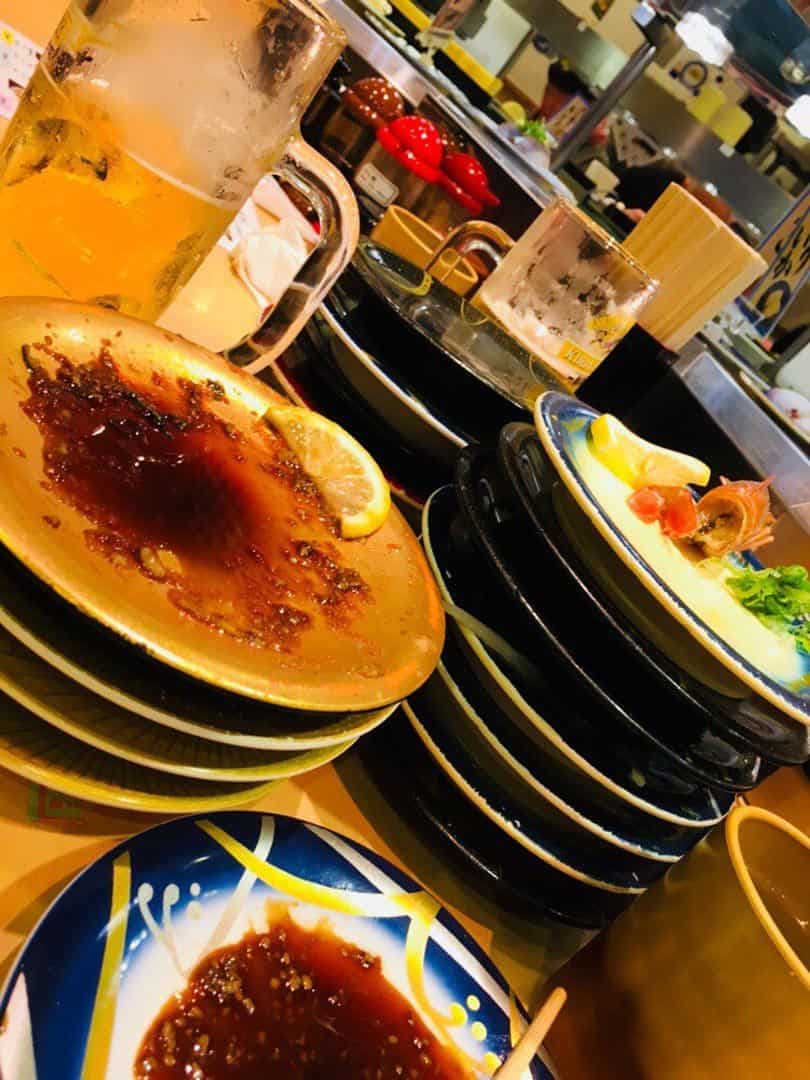
Budget Accommodation in Japan
Accommodation is usually the most expensive part of any trip.
Hokkaido – Booking.com and agoda.com offered us the best rates for anything outside Sapporo. In this region of Japan AirBnB is can be pretty pricey. In the national parks it can be around 9000yen per night, with breakfast included. However this is offset by the cost of food being much cheaper than other parts of Japan.
Hiroshima to Tokyo – Here AirBnB was generally cheaper and that was what we used the majority of the time. We managed to rent entire apartments for half the price of a hotel room in Hokkaido.
Another thing to be aware of is that paying for 2 beds in a dorm is usually more expensive that getting a room in a hotel or guesthouse, so plan accordingly.
Sign up using our AirBnB link to get $50 credit to go towards your first booking and make help make your trip even cheaper.
In truth Japan is much more affordable than people would believe. Hope you found this useful. Head over to www.abearandapig.com to see more of what we do.
That’s it for our guide to budget travel in Japan. Please leave a comment below if you found this article useful, or if you have anything else to add.
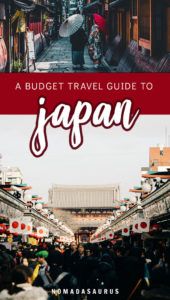
Richard Barnes
Hi, We’re Alesha and Jarryd!

We’ve been traveling the world together since 2008, searching for the planet’s best destinations and adventures.
Love Travel?
Sign up for our free weekly newsletter for the best travel tips, ideas and deals!
We respect your privacy. Unsubscribe at any time.
READ MORE...
19 BEST Things to Do in Osaka, Japan [2024 Edition]
The Perfect 3 Days in Tokyo Itinerary
The Best Day Trips from Every City in Japan [2024]
Related Posts
The perfect 3 days in osaka itinerary [2024 guide], the ultimate travel guide to chino in nagano, japan, the perfect yokohama itinerary for 1, 2 or 3 days (2024), 19 cool things to do in nagoya, japan, 6 thoughts on “budget travel in japan – ultimate backpacking guide [2024]”.
People may think that Japan is very expensive, but there are many ways to travel in there very cheaply if you know some “secrets” like right organizations where you can get some very unbelievable travel deals 😉
What kind of organizations would those be?
Thanks for sharing this kind of information Thanks for the tips I’ve always enjoyed traveling, the idea of seeing the world fascinated me, but I was never able to take a very long trip
Thank you for your comment Luana. Travelling is definitely amazing in so many ways. Hope you can travel where you want to soon and stay for a long trip and immerse yourself in the country and the people. Happy travel planning 🙂
I love to visit this places in japan this year..Thanks for sharing such kind of information..I think Travelling is the most important way to enjoy life and know something different from your routines..
We agree. Travel is amazing. Have a great trip.
Leave a comment Cancel reply
Save my name, email, and website in this browser for the next time I comment.

A local’s guide to visiting Japan on a budget
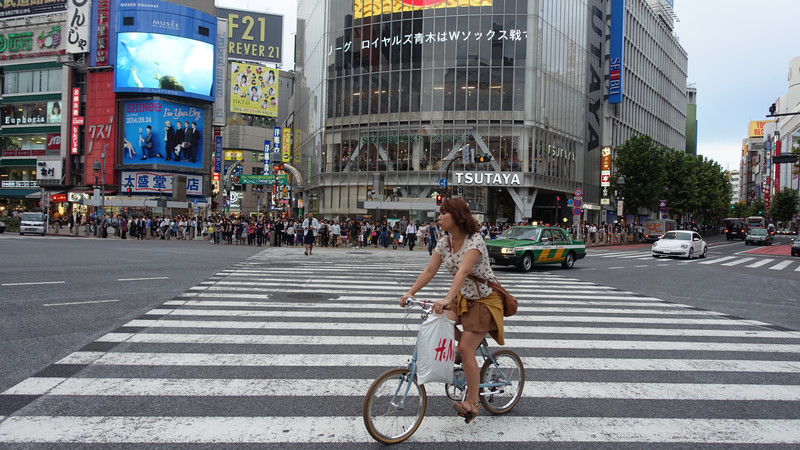
Japan is a dream destination for many travellers, yet all too often people delay or put off their trips entirely because of one looming fear: the cost.
Perhaps it’s the image of Japan as a futuristic tech hub, the Lost in Translation -esque city view bars where the cocktail prices are enough to warrant another ATM visit, or the idea of those $100 department store melons that seem to make the rounds of the Internet every so often.
The first time I visited Japan, I came with the same stereotypical expectations. I thought Japan was going to burn a hole through my pocket, and in some ways it did, simply because, as a tourist new to the country, I didn’t know the local alternatives.
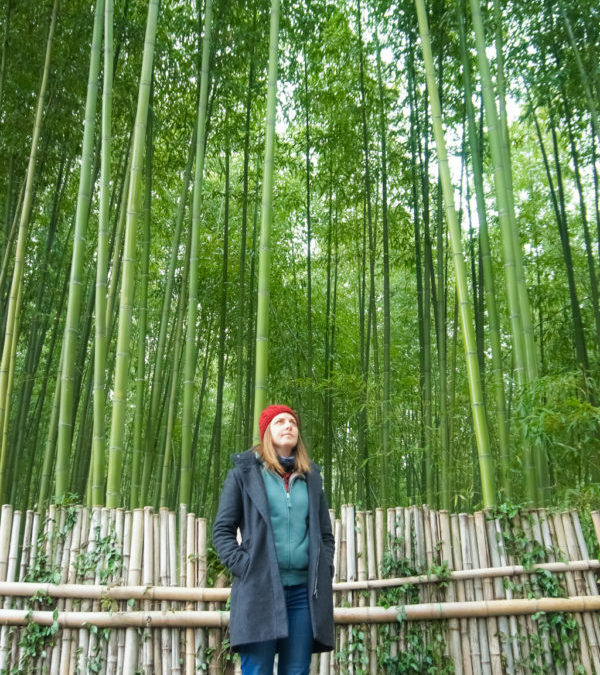
The Sagano Bamboo Forest in Arashiyama, 15 minutes from Kyoto by train, is one of Japan’s most photographed sights.
After 8 years based here, I can say that Japan rivals many developed nations with its budget friendliness, and today I’m on a mission to show you just how affordable it can be with some of my favorite travel hacks for sightseeing and dining. So let’s travel Japan on a budget.
Take advantage of free attractions and events
It may come as a surprise, but a lot of major attractions in Japan are actually free. With the notable exception of Kyoto, most temples and shrines around the country are free of charge. As are most natural sightseeing spots – like the deer park in Nara, the bamboo forest near Kyoto, cherry blossom viewing areas , and even Mt. Fuji.
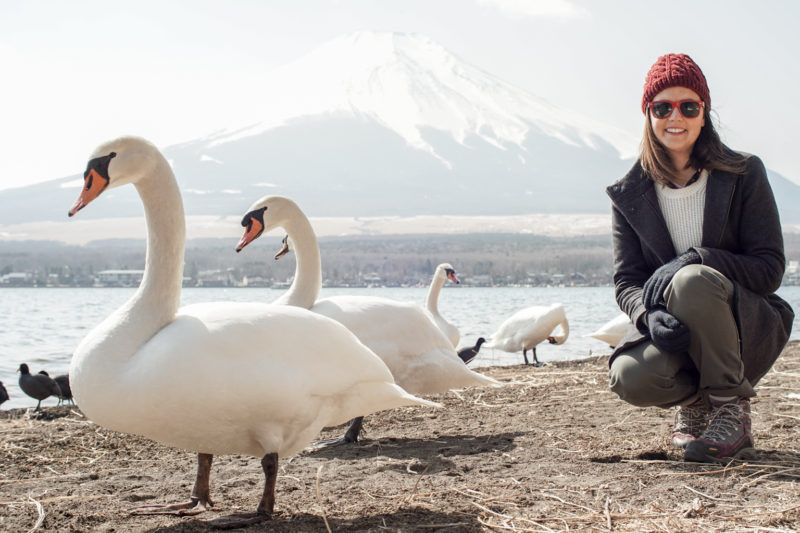
Visit Mt. Fuji and the surrounding Five Lakes area for some of the most iconic scenery in the country.
Traditional festivals are free too and are a fascinating window into Japanese culture. Summer is peak festival season , but you can find them all year round.
READ: THE ULTIMATE GUIDE TO 7 DAYS IN JAPAN BOOK: A BUDGET-FRIENDLY EXPRESS TOUR OF JAPAN
Sightseeing combo tickets & special offers for foreign tourists
Japan has an insane number of sightseeing tickets that include discounted transportation, and even entry tickets, meals or other services as a combo deal. There are some that run year round, while others change depending on the season or during special events.
A great place to start your search is by checking the ‘free passes’ available. They aren’t actually free but they usually refer to unlimited travel within certain areas. One of the most popular is the Hakone Free Pass, which allows you to explore the this popular hot spring area near Mt. Fuji with unlimited use of Odakyu-affiliated buses, trains, boats (it looks like a pirate ship, by the way!), cable cars and ropeways, and also includes discounts on various attractions.
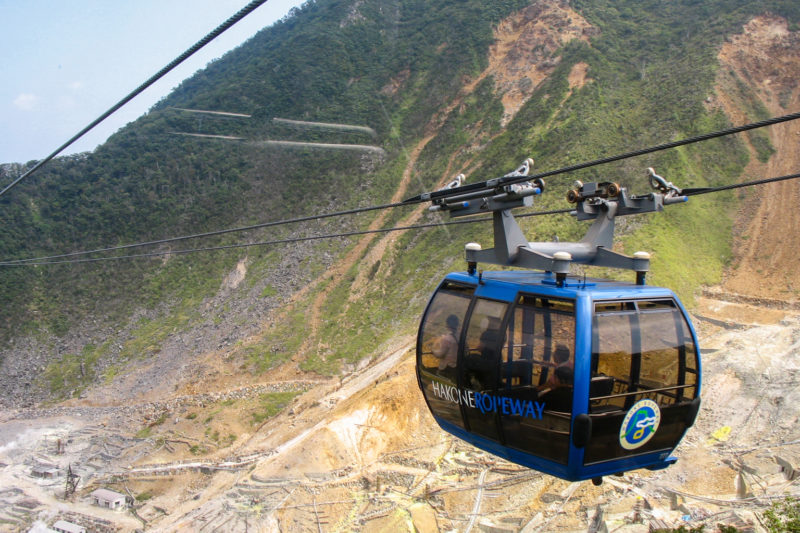
Explore Hakone on its variety of transportation offerings for an all-inclusive price.
To find out about the multitude of deals on offer, head into one of the tourist information offices or ticket centers at or near train stations. Many of the best discounts are foreign tourist specific, so remember to bring your passport with you to prove you are visiting Japan as a tourist.
SUBSCRIBE TO INTREPID’S NEWSLETTER FOR TRAVEL HACKS, INSPO, COMPETITIONS, GIVEAWAYS & MORE
Skip paid towers and go to free observation decks instead
The thing about popular towers is that they can be expensive, you often spend ages in line and then the view is so weather dependent.
Instead of Tokyo Skytree or Tokyo Tower, head to the Tokyo Metropolitan Government Building for a free city view instead – go to the south tower for the best panoramic view. In Kyoto, consider the station’s free Sky Garden, rather than the paid Kyoto Tower across the road. Bonus: you can capture these towers in your photos!
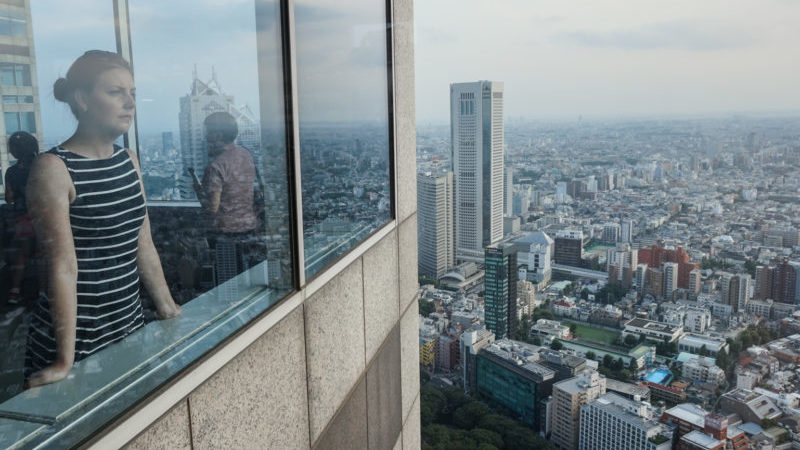
Looking out at the view from Tokyo’s Metropolitan Government Building in Shinjuku.
Visit attractions on free admission days or at a discount
Many museums will have a free admission day, either once a month or for special holidays or events. It’s worthwhile checking the websites of the places you want to visit and planning your sightseeing around free days or discounted times.
Insider tip: If you’re short on time but are looking for an authentic cultural experience, check out Urban Adventures for a local-led day tour. They have itineraries in Tokyo , Kyoto and Osaka !
High quality Japanese food at a good price
When I’m hungry and want to eat good quality Japanese food, I love to go to Ootoya . It serves delicious teishoku style food – a traditional Japanese set meal with rice, miso soup and pickles – and is a must-try on any trip to Japan. One of my favorite dishes is the black vinegar chicken and vegetables. You can expect to pay around $8-10 for a meal here in a comfortable, restaurant-style setting.
If you’re really hungry or just a big eater, request your rice oomori for a larger than average serving of rice at no extra cost. Ootoya is a chain that you can find all over the country.
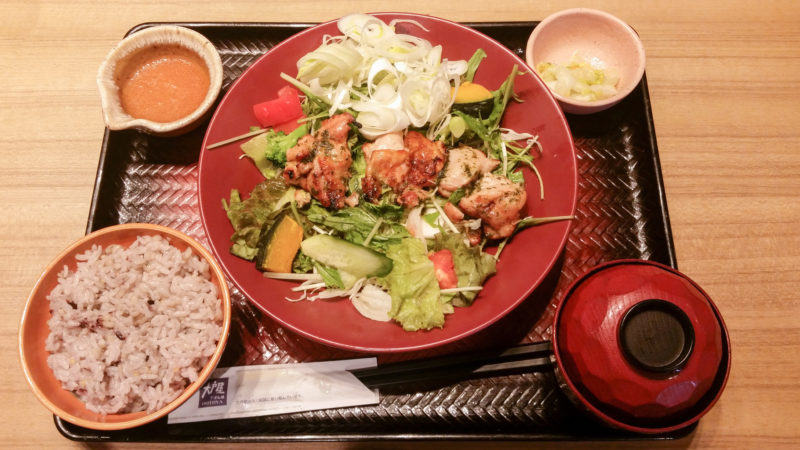
One of my other Ootoya picks, this one for a meal on the lighter side: the charcoal grilled basil chicken and vegetables.
Take advantage of lunchtime specials
Lunchtime is king for good-value meal deals. Japanese restaurants are renowned for having multiple menus. Be sure to sift through them all and locate the one with the daily lunch specials – usually called higawari ranchi. You can often find a set meal that also includes a drink and maybe even a small dessert for $5-7.
LOVE JAPANESE FOOD? CHECK OUT THIS 12-DAY CULINARY TOUR OF THE COUNTRY
Grab a ticket for a cheap meal
For a cheap meal on-the-go, you can try a vending machine restaurant.
Simply buy a ticket at the machine and then present it to the staff in exchange for your meal. Popular dishes at such restaurants include udon and soba noodles, and Japanese curry. You can find them everywhere and can easily get a meal for $3-4.
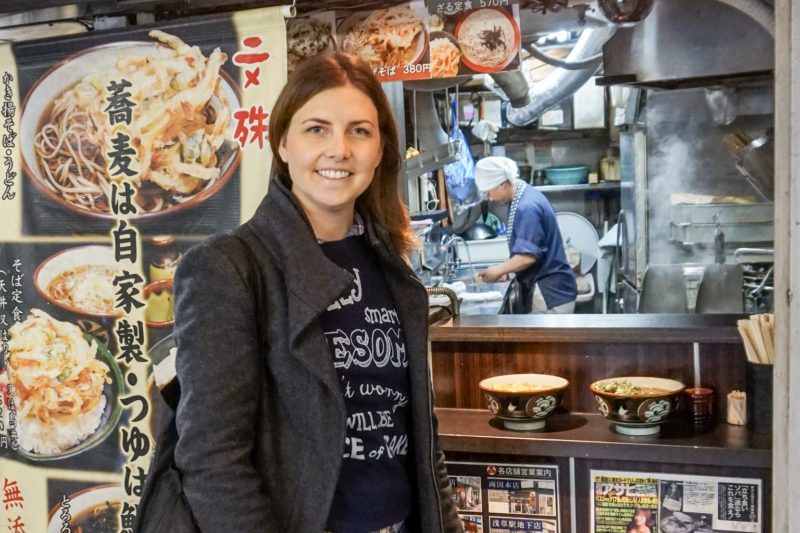
Waiting for my meal at a station vending machine restaurant.
Here’s an example of a typical set meal you can find at vending machine restaurants. It is a cold soba (great for the hot summer season!) with tempura prawns.
Did someone say free beer?
Yep, you can even try alcohol for free by taking advantage of the various free tours offered by Japanese breweries and distilleries. One example is the Suntory tour in Tokyo where you can get a free tour of the beer factory (in Japanese) that concludes with a tasting of three of their beers.
A free shuttle bus is even provided from the south side of Bubaigawara train station, near the horse-mounted samurai statue.
RELATED: 13 JAPANESE SNACKS YOU HAVE TO TRY

Conveyor belt sushi restaurants
For a sushi fix that won’t break the bank, head to a conveyor belt sushi restaurant, where you can get a plate for around $1.
Plates usually include two pieces of sushi and allow you to try all kinds of sushi varieties that you may not have the chance to experience back home. I never spend more than $10, including a drink and miso soup, and always leave extremely satisfied.
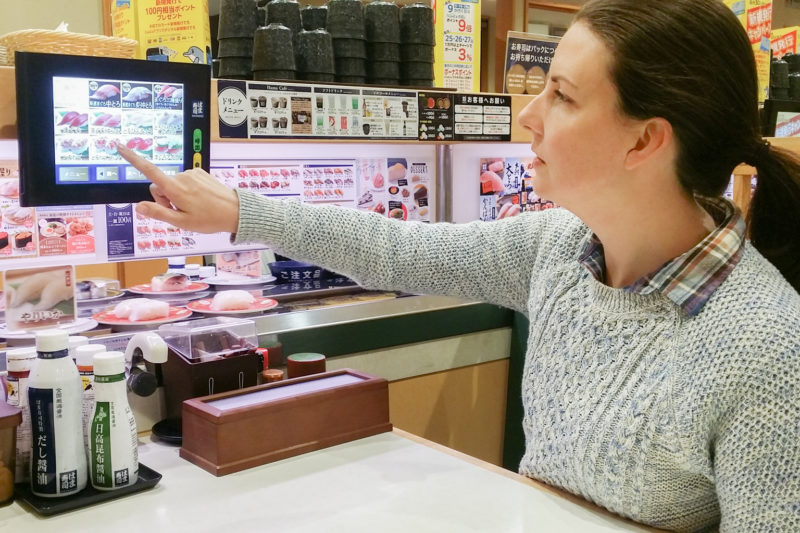
ANOTHER INCREDIBLE JAPANESE CULINARY EXPERIENCE: CONVENIENCE STORE FOOD
Eat street food
Grabbing a bite at street food stalls is not only fairly friendly on the wallet, but it allows you to literally taste Japan through its variety of snack foods. Osaka is one of the best places for street food in the country. (Check out this definitive guide to Osaka’s food scene.)
You absolutely cannot leave without trying takoyaki , balls of batter filled with octopus, and okonomiyaki , a savory Japanese-style pancake. Expect to pay around $5 for a light meal.
The experience is made all the more interesting with the gaudy, singing and moving sign displays along and around the Dotonbori shopping strip.
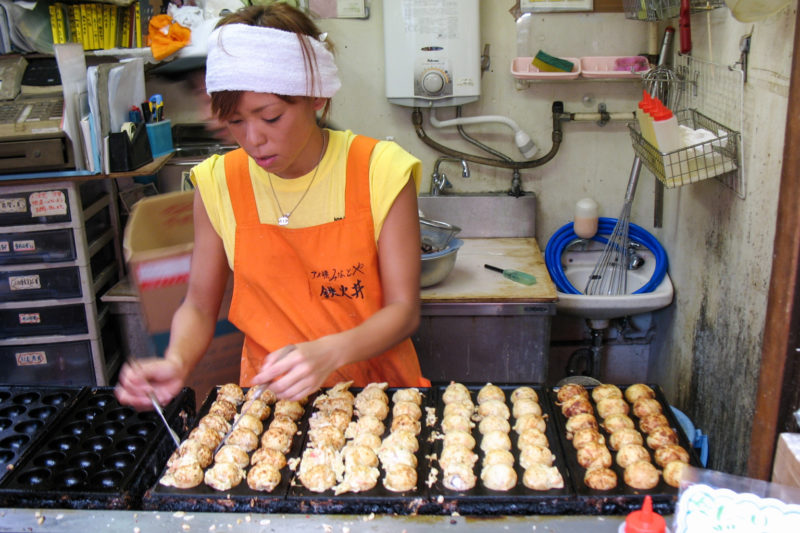
Takoyaki on the hotplate – one of my all-time favorite Japanese snacks!
Go to “family” restaurants & get the drink bar
Famiri resu are not just for families. They are often bustling at lunch and dinnertime with students, workers and couples because they provide some of the best value meals around. My favorite one is Italian style Saizeriya , where you can get pizza and pasta for less than 4 bucks a pop.
For less than $2, you can add the drink bar , which you’ll find at similar restaurants all over the country. This allows you unlimited soft drinks, juices, teas and coffees, including machine brews like lattes and cappuccinos.
Saizeriya also have the cheapest restaurant alcohol I’ve found anywhere – a glass of the house white or red is less than a dollar and 500ml decanters are around $3.60. Share a bottle of some of their ‘nicer’ wines with friends for just $10.
Tempted to visit this awe-inspiring country (even on a budget)? Check out our range of small group adventures in Japan.
(Hero image c/o Luke Attard. All other images c/o Jessica Korteman at notesofnomads.com)
Feeling inspired?
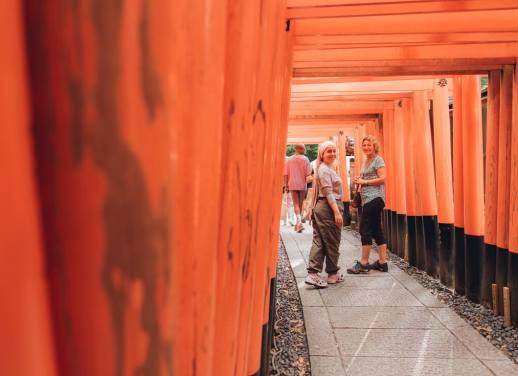
Jessica Korteman
Jessica Korteman is a travel writer based in Tokyo, Japan. Never without a pen and paper, you'll most often find her delving into the world of festivals and culture, and on the search for what makes a destination truly unique. Find her latest adventures on her blog, notesofnomads.com
You might also like
5 places to escape the crowds in italy..., is australia safe everything you need to know, 10 fun facts you might not know about..., exploring the world through tea, 12 facts you probably don’t know about guatemala, the 7 best places to go on a..., 5 reasons to visit sri lanka in the..., why 2024 is the best year to see..., yellowstone vs yosemite: which national park to visit, 6 unique experiences you can have in el..., from delhi to udaipur, here are the five....

The Cost of Travel in Japan: My 2024 Budget Breakdown
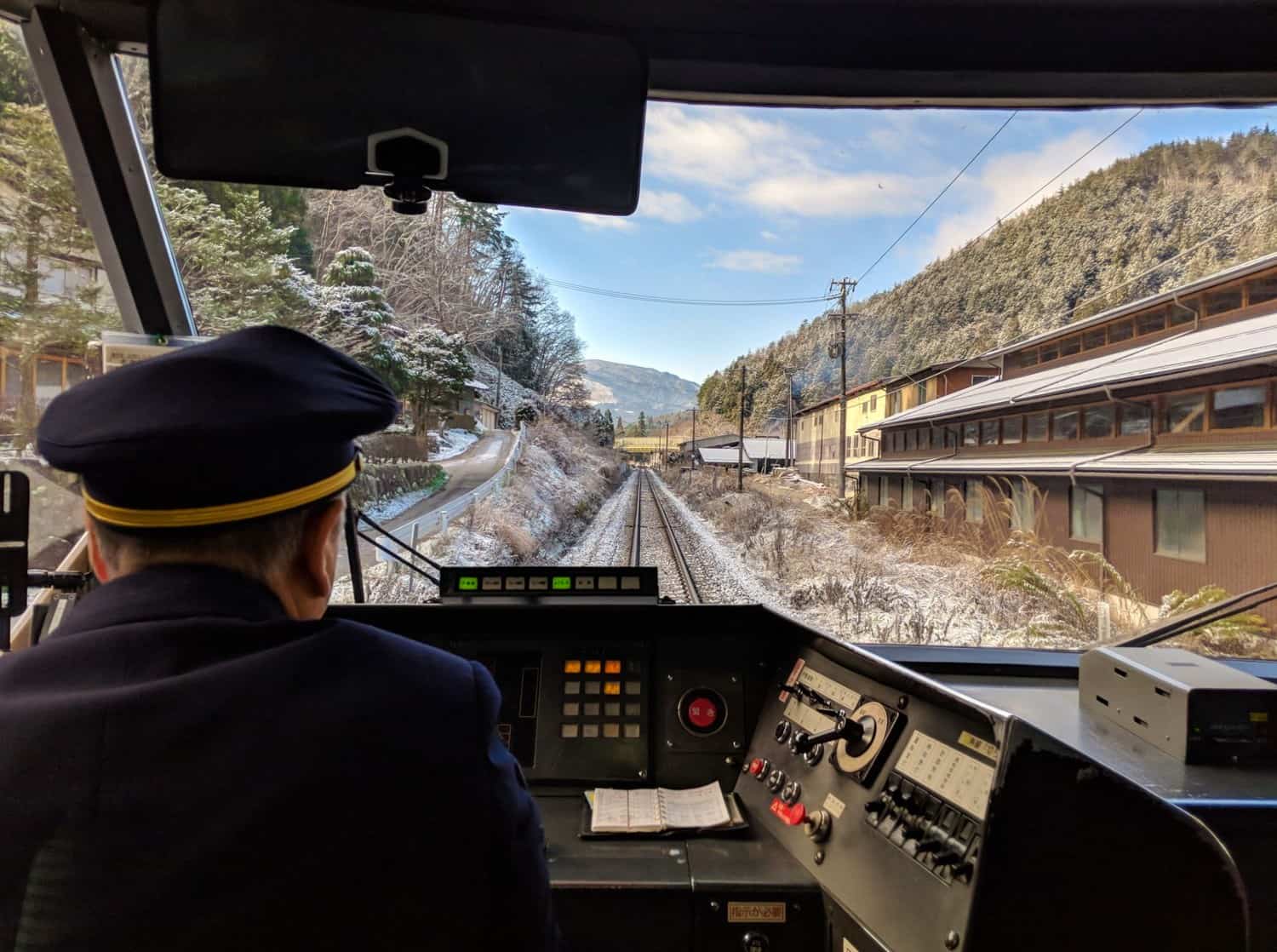
It took me six years to get to Japan.
I didn’t think I could afford it.
Every time I seriously looked into visiting, I would wince at the high cost of the train passes, read about how the hotels were super-expensive, and then fly to Vietnam instead. Or Taiwan. Or even Australia. Japan was simply too expensive for a budget traveller, so I decided to save it for when I was rich.
With that not happening any time soon, I decided to blow my money anyway, because I wanted to go and the gushing blog posts from travel writer friends had convinced me it would be worth the splurge.
Imagine my surprise, then, when I discovered that it really wasn’t that expensive.
I arrived in Japan fully expecting it to be the priciest country I’ve ever been to, but I discovered it’s more on a par with Western Europe or North America, and cheaper than Australia. It was way more affordable than Namibia , where my daily expenses came to $132, and way, way, way more affordable than the Democratic Republic of the Congo , where I averaged, um, $550 a day.
Anyway! This is about the cost of travel in Japan rather than my poor financial decisions, so let’s get started!
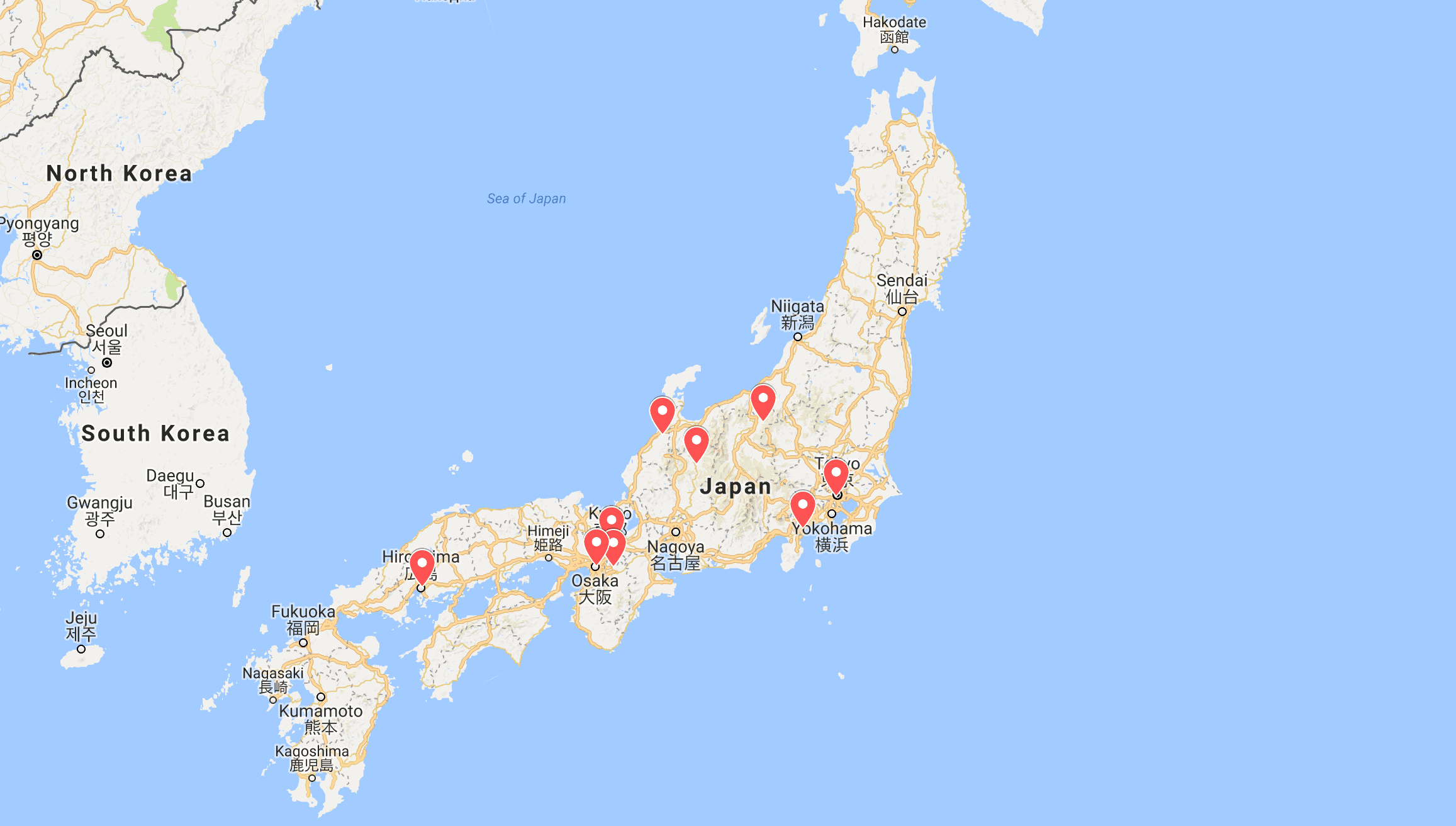
My 16-Day Japan Itinerary
Here’s a brief rundown of where I visited over my 16 days in the country — I think I managed to put together the perfect itinerary for first-time travellers to Japan .
Tokyo: 4 nights Hakone: 1 night Yudanaka: 1 night Kanazawa: 2 nights Takayama: 1 night Kyoto: 3 nights Hiroshima: 1 night Osaka: 3 nights
What’s Included in this Post
This budget breakdown covers how much I spent on accommodation, transportation, activities, food, and whichever miscellaneous items popped up while I was in country.
I’ve not included my flights into and out of Japan because this is going to vary significantly based on where you’ll be arriving from. In case you’re interested, though, I paid $320 for a return flight from Rome to Tokyo, which I scored through browsing my favourite site for flight bargains, Secret Flying .
The amounts in this guide are listed in Japanese Yen and U.S. dollars, simply because the vast majority of my readers are from the U.S. And finally, these are the three rules I always abide by on this site:
- I do not accept sponsored trips, so everything listed in this post is something I personally paid for with my own money
- I travel anonymously to ensure my experiences accurately reflect what yours will be. I don’t want special treatment!
- Every single word of this article was written by me, based on all of my own experiences. I strictly do not use AI to compose my guides.
Okay — let’s get started with my expenses.
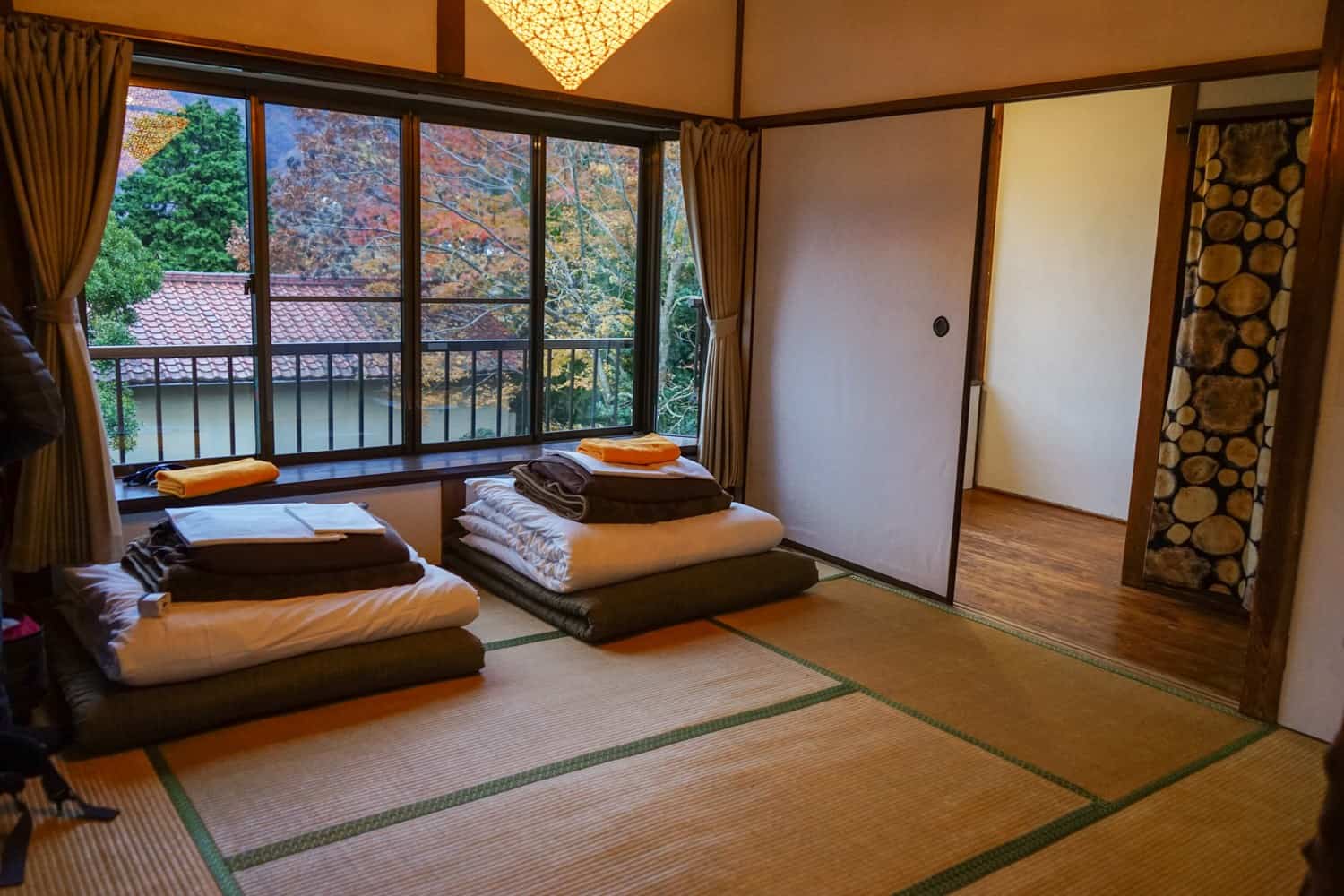
The Cheapest Accommodation Options in Japan
Like practically every country in the world, prices in Japan have increased post-pandemic.
In 2024, you’ll be paying a little more for everything than you would have done a few years ago — in fact, prices almost doubled between my first trip in 2017 and today! — however costs are still on a par with most Western countries. Travel in Japan shouldn’t be too devastating to your travel budget.
I’ll start on the lower end of the spectrum. If you’re willing to put in the time and effort, it’s possible to avoid paying for accommodation entirely.
Couchsurfing exists in Japan and allows you to stay with a local for free , usually sleeping on their sofa and enjoying a local’s insight into life in their country. Yeah, it’s not the most comfortable of living situations, but if your budget’s tight, it’s worth sending out a few requests to hosts to see if anything comes of it. You can browse through the 300,000+ Japanese hosts on the Couchsurfing site — just be sure to read the references of anybody you choose to stay with.
Housesitting is a more upmarket option, aimed at mid-range and luxury travellers. Housesitting involves taking care of somebody’s house for free while they’re away, often (but not always) looking after their pets, too. It’s best for long-term travellers or retirees, as you can’t pick and choose dates and destinations, so you’ll need to have a lot of flexibility as to where you go and at what time of year. If you do have that freedom, though, it’s a wonderful way to cut down your travel expenses, soak up some home comforts, and live like a local for a while. Trusted Housesitters is the main site for getting started with housesitting, as they have the highest number of listings.
Finally, when it comes to free accommodation, you could take a look at WorldPackers in Japan , where you’ll be able to volunteer for locals in exchange for food and board. There are some seriously cool options available on the site right now, from helping harvest honey for a bee farm in the countryside to lending a hand in the garden of a Buddhist temple. Readers of this site get a $10 discount for WorldPackers with the promo code neverendingfootsteps .
If you’re not looking to travel for free and just want a clean and comfortable room to sleep in, there are plenty of great budget options, too.
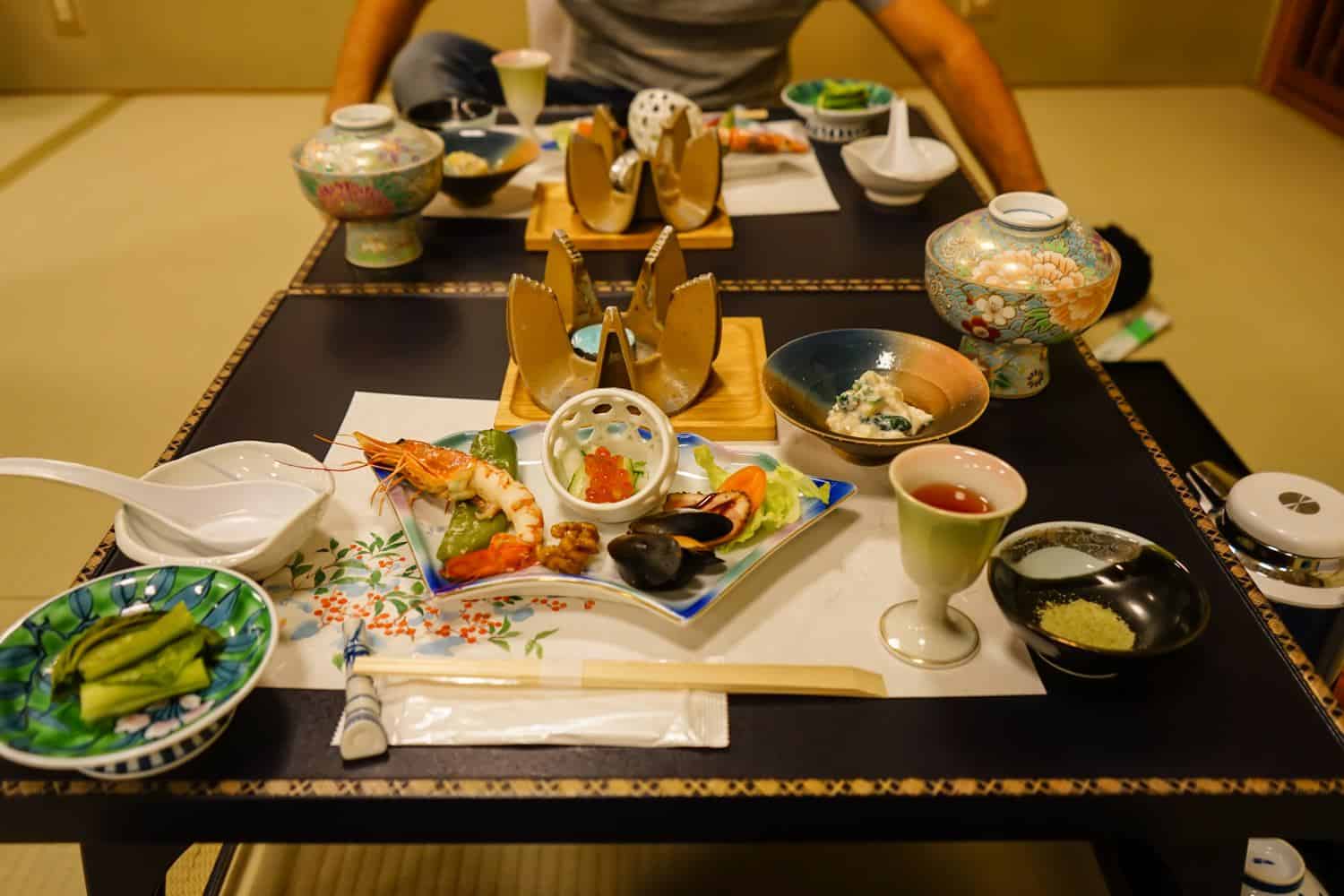
And then we have hostels . In Japan, you’ll come across hostels all over the country, finding them on tiny islands, large cities, and even within the national parks. They’re one of your best options for saving money.
Hostels in Japan are on a par with the rest of major cities in East Asia, and you can expect to spend $25 a night for a dorm bed for a well-reviewed hostel, with the price increasing slightly to around $45 a night for the absolute best of the best.
When it comes to private rooms in hostels, you’ll be looking at $50 a night for a clean, basic room in a good location, so if you’re travelling with friends or with your partner, you may find it cheaper to grab some privacy over settling for two beds in a dorm room. $90 a night will get you an exceptionally well-reviewed private room in a hostel.
I use HostelWorld to find the cheapest hostels, as they tend to have the greatest number of listings at the lowest prices.
And then there are hotels, which I’m going to jump into next.
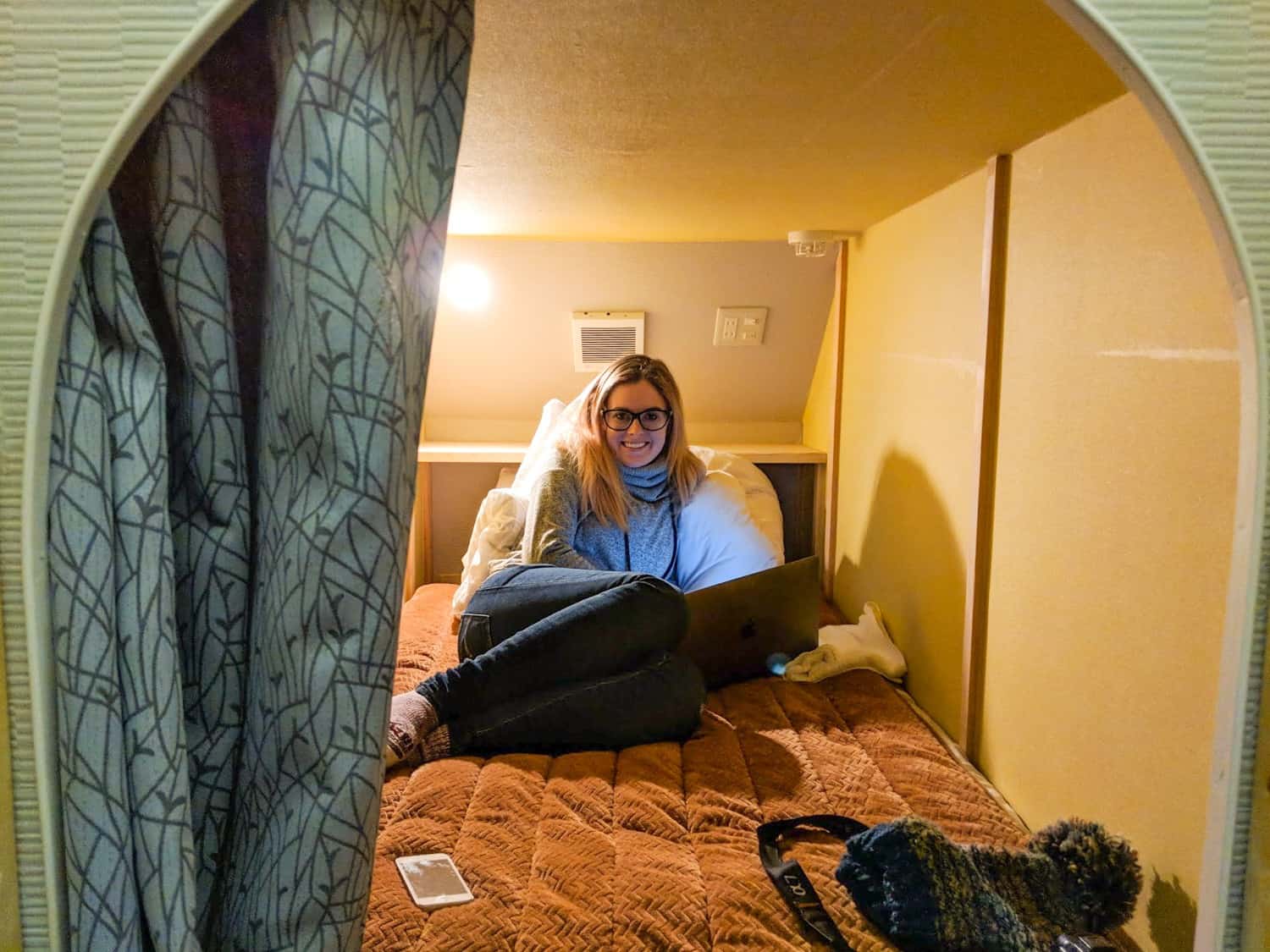
The Cost of Accommodation in Japan
There are so many different types of accommodation in Japan! I attempted to experience as many as possible while I was in the country.
I stayed in a capsule hotel, prioritised hunting down a ryokan, slept on a tatami mat floor, stayed in family-run guesthouses, and checked out some pretty cool hostels. While I did attempt to save money by staying in some cheaper places, I was also happy to splurge on extremely well-rated rooms, too.
As always with these budget breakdowns, I like to share the prices of where I personally stayed, along with a description of the property and whether I’d recommend choosing it, too — hopefully this helps make your trip planning easier!
I visited Japan with my partner, Dave, and we travelled on a mid-range budget; searching out good value accommodation that was highly-rated and in a central location. We prioritised locally-run properties that weren’t too flashy or fancy; for us, a cosy vibe, unique furnishings, and welcoming staff are far more important than the generic decor of a hotel chain.
(Oh and just a quick note: hotels do charge different prices across a range of dates, depending on how busy a certain travel period is going to be. Because of this, it’s hard to be super accurate in the costs that I list. To get to the quoted prices below, though, I looked at the rates across the next six months and took the average: it could be slightly cheaper or more expensive, depending on when you’re visiting.)
Tokyo: $135 a night Odds are, you’re probably going to kick off your Japan adventures in Tokyo, and if so, it only makes sense to really throw yourself into the local experience. That’s why we decided to stay at this lovely onsen-ryokan in Shinjuku. (Whenever readers ask me which neighbourhood to choose in Tokyo, I always recommend Shinjuku or Shibuya.) The reason why I loved this specific property, though, is because it’s a ryokan (traditional Japanese Inn) that also has an onsen (hot pool). It’s a great way to jump immediately into all things Japanese.
And it was wonderful; my favourite hotel in the country. The rooms were small and cosy and felt super-traditional and calming. The views over Tokyo at night from the window were incredible. And the rooftop onsen? With free popsicles afterwards? So good. It’s located in a quieter neighbourhood, but still only a 10-minute walk to the subway. I really recommend this one!
Hakone: $80 a night In Hakone, we opted for a private room in a lovely guesthouse , with a tatami mat floor to sleep on and a private onsen on-site. The photo of the tatami mat room above is of our room here. It ended up being another one of our favourite stays in Japan! The staff were lovely and there was a restaurant/bar that served up fantastic pizzas. It had a cosy and chilled-out atmosphere, with great food and wine, and lots of blankets to snuggle up with as we ate. It was also worth staying here just to experience the private onsen — we got to go in as a couple!
Yudanaka: $105 per night In Yudanaka, we opted for a stay in a wonderful little ryokan ; this one was even more traditional than the one in Tokyo! Often, ryokans can be super-expensive in Japan — as much as $500 a night for the experience — so I was thrilled to have stumbled across a more budget option in Yudanaka. It was run by an adorable Japanese couple and their house came with a private onsen, return transport to see the snow monkeys , and one of the most extravagant meals of my life. A kaiseki is a multi-course (like, 20 courses) meal that will see you eating roughly a week’s worth of food in a single night, sampling fresh, local-to-the-region Japanese cuisine. It was phenomenal, and I loved having no idea what anything was. It even included homemade plum wine, which was so good! I highly recommend the experience (although strongly advise you not to add breakfast to your booking — we were still so full that we couldn’t eat any of it!)
Kanazawa: $65 per night Kanazawa is home to some seriously cool accommodation! We had a hard time choosing where to stay because every property looked so cosy and inviting. In the end, we settled on this minimalist, modern set-up — it was great value for money relative to most other places we stayed in Japan, especially when you consider it’s only been open a year. It’s in a great location, right outside Omicho Market, where you’ll sample the best sushi of your life. Also within walking distance is Kanazawa Castle and Kenroku-en Garden, so you’re really staying in the heart of it all. I recommend signing up for the traditional Japanese breakfast, as you’ll likely not have had anything else like it before! There’s also an onsen and laundry facilities (always appreciated mid-trip!), and the staff were so sweet and kind.
Takayama: $76 per night In Takayama, we stayed in a small, locally-run guesthouse in the centre of town. It felt like particularly good value for Japan, as it was one of the few places we stayed that you could describe as spacious! It even had a kitchen and washing machine. The beds were comfortable and the hotel was within walking distance of everywhere, including the train station. It was quiet, the staff were lovely, and overall, it made for a comfortable stay!
Kyoto: $84 a night In Kyoto, we stayed in a cosy hotel in the heart of town — we loved this place so much in 2017 that when we returned to Japan this year, we knew we’d have to stay there again! The property was in a fantastic location for exploring Kyoto and the bathrooms were nicer than anywhere else we stayed. It’s one of the top-rated guesthouses in the city — while also being one of the cheapest — so when you take that into consideration, I’m convinced you won’t find anywhere better to stay in Kyoto.
Hiroshima: $40 per bed In Hiroshima, we opted for a capsule-style hostel because I didn’t want to leave the country without trying one — you can see a photo of the “capsule” at the top of this section. Fortunately, we found ourselves in a room with only two other people staying there, so our capsule room with 20-odd beds was light on snorers. The owner of this place was ridiculously lovely and it was within walking distance of all of the monuments and activities. Really great bathrooms, a fun common area, and a cheap price: surprisingly, I would have stayed another night!
Osaka: $108 a night I rounded off my time in Japan with a little bit of a treat, opting for this four-star hotel that offered a ton of freebies. It’s all about the onsen here — it’s open all day and is simply beautiful. After you’ve finished your daily bathe, there’s free ice cream to eat, free comics to read, massage chairs to relax in, and even free ramen to slurp on. Yes, really! It was in a great location for Osaka — just a couple of blocks from the nearest metro station. The decor was calming and traditional; the perfect way to say goodbye to Japan.
In total, I spent an average of $97 per day on accommodation over my 16 days in Japan.
The Cost of Transportation in Japan
Okay, so let’s talk about transportation now. And specifically transportation post-2024.
It used to be the case that practically every visitor to Japan would invest in a JR pass (a train pass that grants you unlimited rides over a certain time period). After all, the best way to explore this country is by train, and by buying said rail pass, you’d be saving a significant amount of money on your trip — especially if you were taking a similar route to my one. A JR Pass pre-October 2023 would have saved me a whopping $175 over buying individual train tickets.
Seems like a no brainer, right?
In October 2023, the Japan Rail Pass skyrocketed in price. No exaggeration here: prices increased by an incredible 70% .
What a baffling decision.
What that means is that it’s not such a clear-cut decision anymore. The Japan Rail Pass still holds some benefits: If you’re a first-time visitor to Japan and don’t feel too confident about buying multiple single-journey train tickets, the pass will make it a lot easier: you just show it at any station and get on a train. You won’t need to worry about any extra charges and will have the flexibility to take train-based day trips whenever you want.
For most travellers, however, the value proposition is simply no longer there. For example, my recent 16-day itinerary (Tokyo – Hakone – Tokyo – Nagano – Kanazawa – Takayama – Kyoto – Nara – Kyoto – Hiroshima – Osaka) cost me 50,000 Yen ( $350 ) with single tickets. However, a 14 day rail pass is priced at 80,000 Yen ( $530 )!
Alas, the Japan Rail Pass is no longer something I recommend — unless you’re going to be taking enormous, lengthy rail journeys (like across the whole country) in a short period of time. Alternatively, if you do want that added sense of security and ease by not having to juggle a dozen train ticket bookings, you may find the extra price worth it.
So with all that being said: you’re most likely going to be using the JR West website to book your single train tickets online. This covers the entirety of Japan that’s west of Tokyo (all of the places I visited were west) and allows you to book your train tickets all in one place — and then you can reserve a seat on said train one month before its departure date. Honestly, it’s pretty easy to use, book, and reserve — and being able to do it all online means you can get everything sorted before you step foot in the country.
Let’s take a look at the some of the prices that a typical train journey in Japan costs — in this case I’ll use my itinerary mentioned above to plot out the costs:
Tokyo – Hakone: 2,500 Yen ( $17 ) Hakone – Tokyo: 2,500 Yen ( $17 ) Tokyo – Nagano: 7,500 Yen ( $50 ) Nagano – Kanazawa: 8,500 Yen ( $57 ) Kanazawa – Takayama: 5,000 Yen ( $33 ) Takayama – Kyoto: 9,000 Yen ( $60 ) Kyoto – Nara: 700 Yen ( $5 ) Nara – Kyoto: 700 Yen ( $5 ) Kyoto – Hiroshima: 10,500 Yen ( $70 ) Hiroshima – Osaka: 10,000 Yen ( $67 )
So if you were to replicate my Japan route exactly, you would end up spending $381 on rail tickets. It sounds like a lot of money but I do want to stress that the trains in Japan are some of the best in the world. They’re spotless, comfortable, modern, and lightning-fast. You will feel like you’re travelling in luxury.
If you’re not down to spend hundreds of dollars on trains, then the buses are going to be your best option. They’re cheaper, slower, less comfortable, often run overnight, and are complicated to book. The best sites I’ve found for booking long-distance buses is Willer Express and Japan Bus Online — but even they don’t run buses for several of the routes I took on my trip.
I thought it would be a good idea to share the cost of buses for the trip I took, so that you can compare them to the train and see how much money you could save.
Tokyo – Hakone: 2,250 Yen ( $15 ) Hakone – Tokyo: 1,800 Yen ( $12 ) Tokyo – Nagano: 2,200 Yen ( $15 ) Nagano – Kanazawa: No bus for this route Kanazawa – Takayama: 3,300 Yen ( $22 ) Takayama – Kyoto: 3,800 Yen ( $25 ) Kyoto – Nara: No bus for this route Nara – Kyoto: No bus for this route Kyoto – Hiroshima: 4,300 Yen ( $29 ) Hiroshima – Osaka: 4,000 Yen ( $27 )
As you can, see prices are generally around half what they are for the trains. You’d be looking at paying $212 in total for taking the bus, with three trains replacing the routes where I couldn’t find any existing buses.
We’ve covered the main ways to get in between the destinations, so now it’s time to take a look at how much you could spend on transportation within the cities.
Fortunately, this was where I found Japan to be really affordable. I love to explore cities on foot and I found many of the places I visited to be surprisingly walkable. In total, I spent $6 on the metro in Tokyo, $7 on the metro in Osaka, and $2 on the metro in Kyoto! Everywhere else, I just walked.
A reasonably big expense was our Hakone Free Pass (spoiler: not free), although this was more of a combined transportation and activity cost. At a cost of 6,100 Yen, or $41 , It provides you with unlimited transport around Hakone (where you’ll find Mount Fuji), and discounted entrance to all the attractions in town. If you’re going to Hakone, this will save you money because it covers everything you’ll definitely do there.
The Cost of Food in Japan
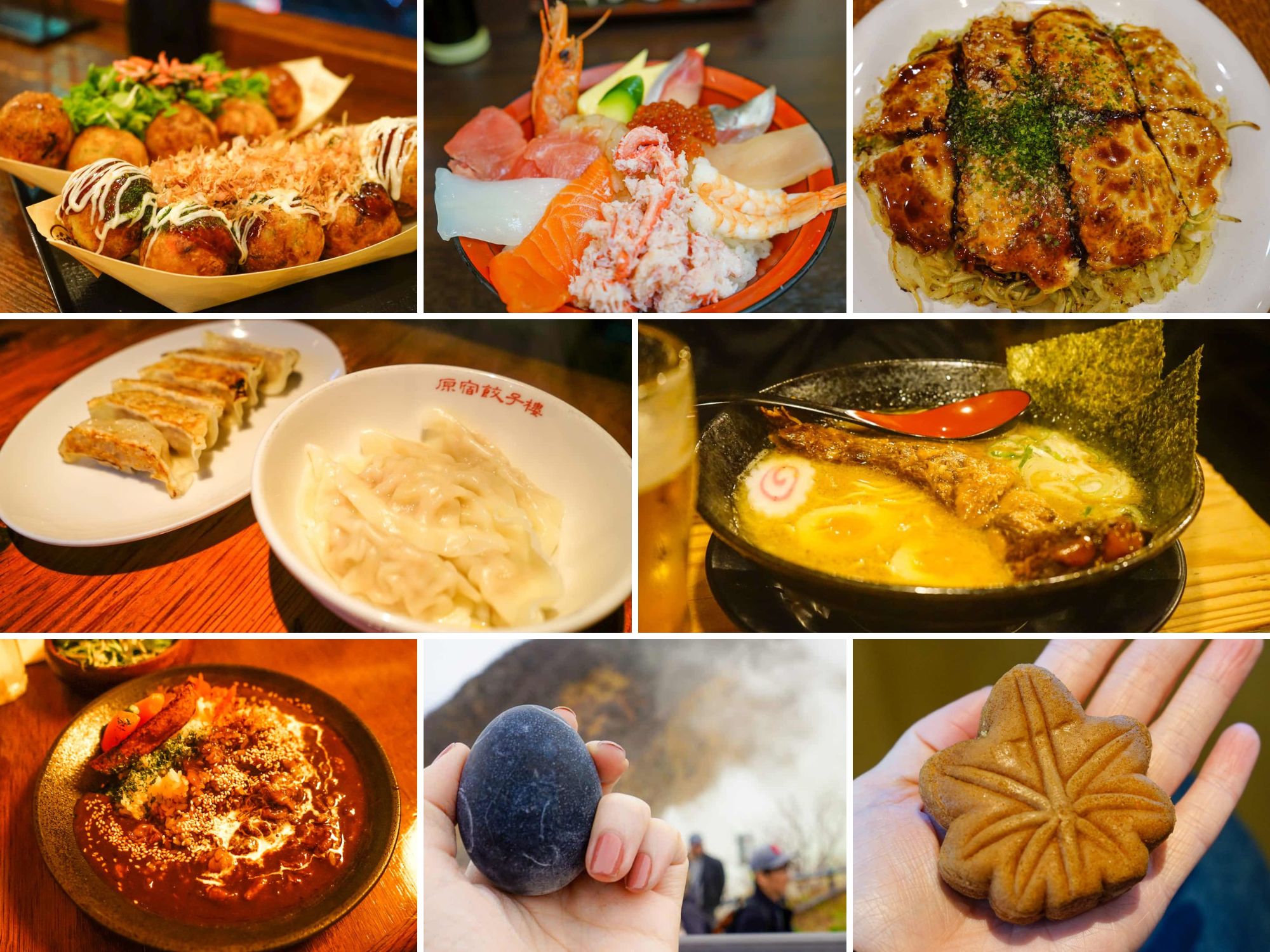
If you love Japanese food but have yet to travel to its homeland, you have such a treat in store for you. The food in this country is phenomenal; packed full of flavour and surprisingly inexpensive. It’s true: eating out is the easiest way for you to cut costs in Japan.
In fact, the vast majority of my meals in this country came to less than ¥1000 ($6.50) .
I’ll start first by breaking down the typical costs that you can expect to spend on the most well-known of Japanese dishes. Then, I’ll cover what you’ll be likely to eat for breakfast, lunch, and dinner, along with the costs associated with each of these meals. Finally, I’ll round out the section off by sharing some of my favourite food experiences in the country and describe which options are worth a splurge and which ones you can happily skip.
You can’t think of Japan without picturing sushi, so that feels like the most logical place to start. If you eat fish, this is going to be such a revelation for you! The sushi and sashimi in Japan is better than any I’ve had in the world and it was here that I finally understood how raw fish could ever be described as buttery.
To combine your sushi/sashimi-eating with a cultural experience, head to Tsukiji Outer Market in Tokyo or Omicho Market in Kanazawa. For a bowl filled with a selection of sashimi, like in my photo above, you’ll pay between ¥1,800 and ¥4,000 , depending on the size and quality of the fish. That’s the equivalent of $12-$25 .
Slurping on a steaming bowl of ramen is my personal definition of a true travel joy, so I opted for this cheap and cheerful dish most evenings as a way to save money. Note: the ramen in Japan is incredible , so don’t interpret my frugality as a hardship. Once you’ve tried the ramen here, I’d be surprised if you didn’t immediately start planning a return visit.
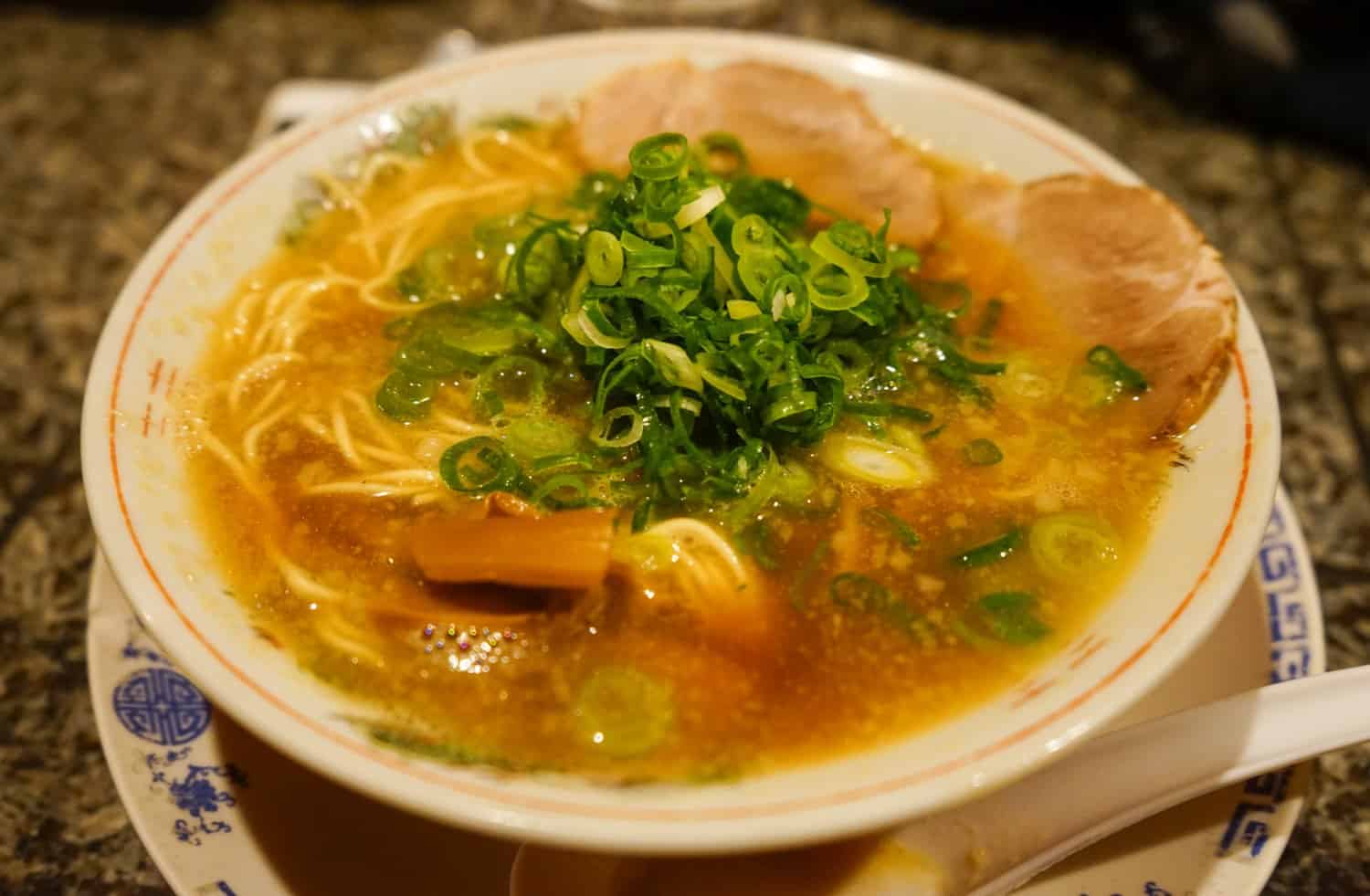
One of my favourite aspects of ordering ramen in Japan is how you’re given the option to customise the dish to your own tastes. It’s not uncommon to be handed a small slip of paper where you’ll get to mark down all of your preferences. Do you want your broth to be rich or light? Your noodles to be firm or soft? Added spiciness or none at all? Extra spring onion? A hard- or soft-boiled egg? Most options come out to ¥1000 ($6.50) for a bowl of pork ramen.
Speaking of cheap and delicious food options, I highly recommend sampling a couple of versions of okonomiyaki while you’re in town. This savoury pancake dish is so delicious, extremely filling, and inexpensive at just ¥1000 ($6.50) – ¥1500 ($10) . The cities of Osaka and Hiroshima each offer up their very own version of okonomiyaki and strong opinions are held by many over which is best! If you’ll be heading to both destinations, make sure you try one of each and let me know which is your favourite.
A dish that I tried for the first time while I was in Japan was Japanese curry and what a wonderful experience that turned out to be! In comparison to Indian curries, I found the Japanese version to be richer, sweeter, and less creamy, with plenty of umami vibes. Once more, you can expect to pay ¥1000 ($6.50) for a plate of katsu (pork cutlet) curry.
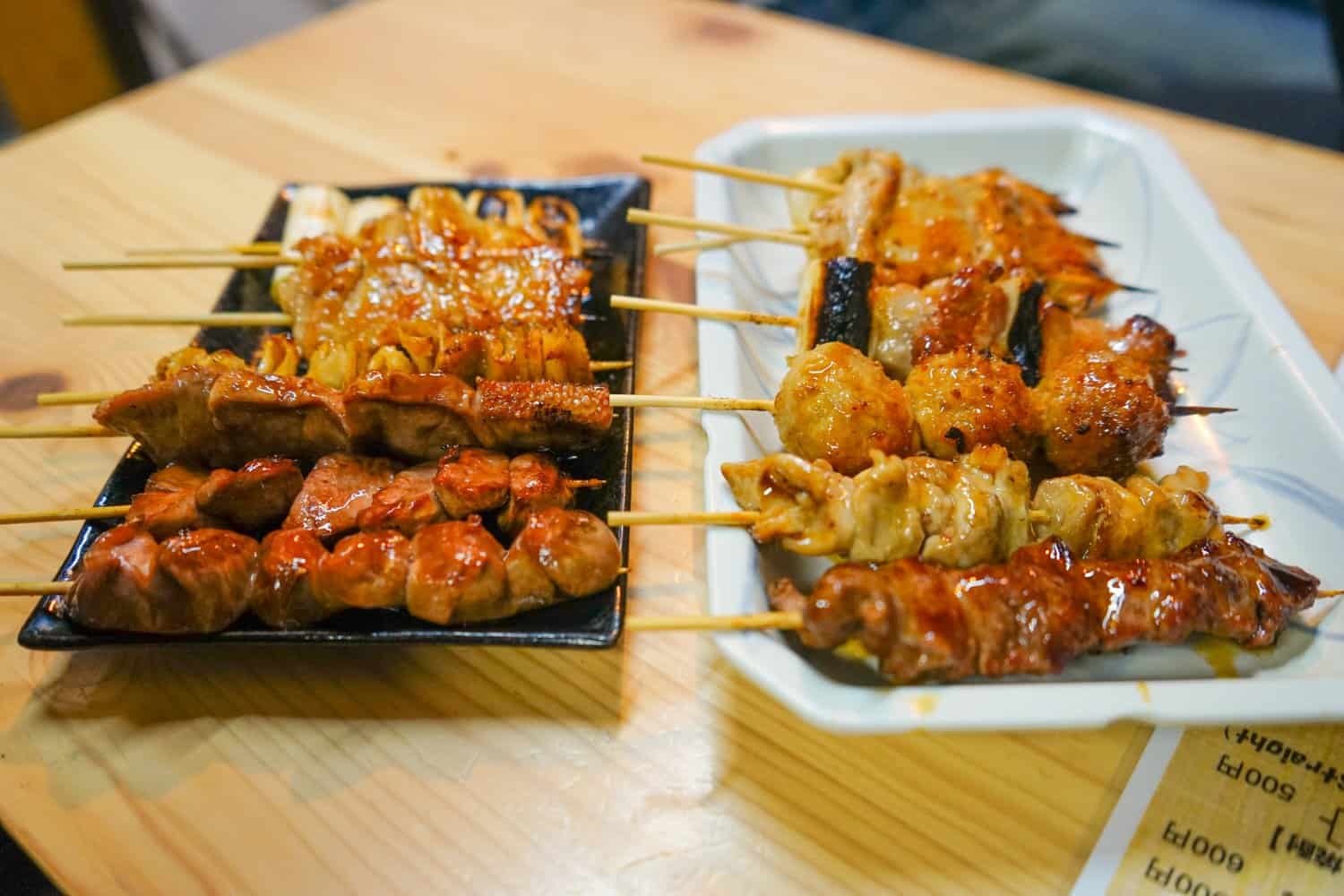
One of the most delightful aspects of my Japanese eating experiences was sampling all of the different snacks in the country.
Street snacks like takoyaki were ¥500 ($4.50) . We splurged on our kaiseki experience at our guesthouse in Yudanaka and paid ¥4000 ($36) for our food extravaganza. It’s a budget option compared to many other kaisekis, which can easily come to $100 for the experience, but still our most expensive meal. Another splurge was on sushi in Kanazawa, which I paid ¥2000 ($18) for.
Whether you’re on a budget or ready to splurge, it’s essentially impossible to eat badly in Japan. If you’re on a really tight budget, you can even get surprisingly decent food from 7-Eleven !
My total cost of food in Japan averaged out to $23.20 per day.
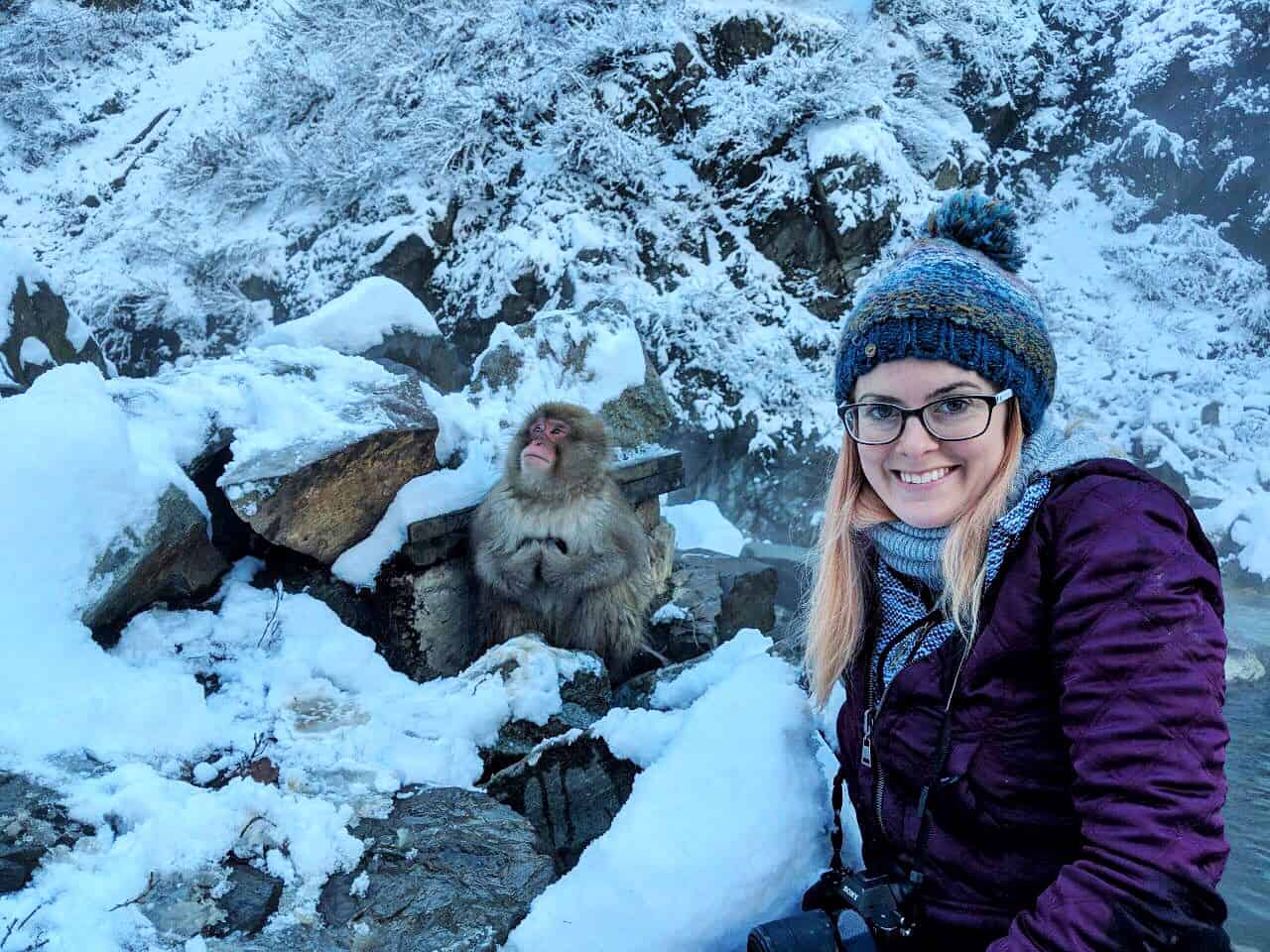
The Cost of Activities and Entrance Fees in Japan
Activities and entrance fees in Japan were very reasonably priced, and I never found myself outraged over the cost of anything. You’ll typically pay less than $5 to enter most temples, museums, and gardens.
Here’s how I spread my cash around:
Entrance fee for the hedgehog cafe in Tokyo: $13/1400¥ Entrance to the Snow Monkey Park : $7/800¥ Entrance to Kenroku-en gardens in Kanazawa: $3/310¥ Entry to the Golden Pavilion in Kyoto: $3/300¥ Entry to Ryoan-ji zen garden in Kyoto: $5/500¥ Ticket for the Hiroshima Peace Memorial: $2/200¥
My total cost of activities in Japan averaged out to $2 a day.
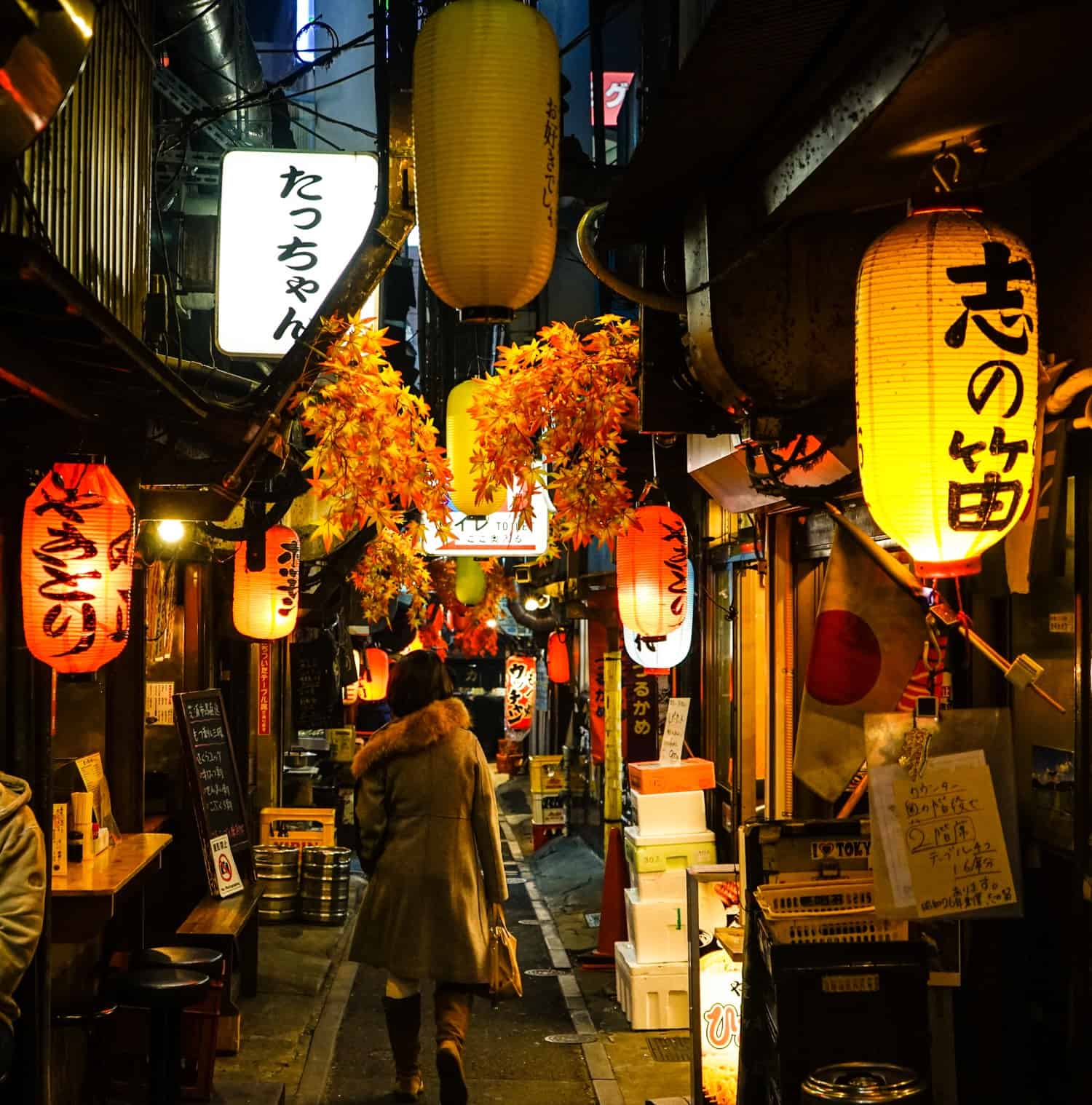
Miscellaneous Expenses in Japan
A local SIM card: $14
I mentioned above that I was able to buy a local SIM card when I purchased my rail pass. If you aren’t going to be using a rail pass in Japan, I recommend taking a look at Airalo instead. Airalo is a company that sells local e-SIM cards for travellers. What that means is that you can buy a virtual SIM card online before you arrive in Japan, and then as soon as you land in the country, can switch on your data and start using it.
It’s worked flawlessly for me and I’ll never go back to physical SIM cards. It’s just so easy! You’ll pay $6 for 1 GB of data or $14 for 3 GB for Japan and can also top-up through the Airalo app.
If you’re going down the Airalo route, just make sure your phone is e-SIM compatible first (all recent iPhones and many Androids are).
Insight Guides guidebook to Japan: $10
My sister bought me this guidebook as a gift before I left for Japan and at first I was like, Insight Guides? Meh. I wish she’d got me the Lonely Planet instead. Then when I opened it up and started reading, I swiftly discovered that Insight Guides are my new favourite guidebook company. It was so, so useful!
What I love about Insight is that their books focus heavily on the history and culture of Japan, with big, beautiful pictures, tons of information about local customs, food, and how to travel responsibly and respectfully. I recommend picking up a copy before your trip to Japan, but not taking it to the country with you — they’re big and heavy, so this is one for inspiration, planning, and education.
Luggage storage at Snow Monkey Park near Yudanaka: ¥500 ($4.50)
We had our backpacks with us when we visited the snow monkeys, so utilised the on-site storage facility while we hiked up the mountain in the snow. You can also hire snow shoes and winter gear if you’re unprepared for the climb, but I was fine in my totally impractical sneakers.
Travel insurance for 16 days in Japan: $60
If you’ve read any other posts on Never Ending Footsteps, you’ll know that I’m a great believer in travelling with travel insurance. I’ve seen far too many Go Fund Me campaigns from destitute backpackers that are unexpectedly stranded in a foreign country after a scooter accident/being attacked/breaking a leg with no way of getting home or paying for their healthcare. These costs can quickly land you with a six-figure bill to pay at the end of it.
In short, if you can’t afford travel insurance, you can’t afford to travel.
Travel insurance will cover you if your flight is cancelled and you need to book a new one, if your luggage gets lost and you need to replace your belongings, if you suddenly get struck down by appendicitis and have to be hospitalised, or discover a family member has died and you need to get home immediately. If you fall seriously ill, your insurance will cover the costs to fly you home to receive medical treatment.
I use SafetyWing as my travel insurance provider, and recommend them for trips to the Japan. Firstly, they’re one of the few companies out there who will actually cover you if you contract COVID-19. On top of that, they provide worldwide coverage, don’t require you to have a return ticket, and even allow you to buy coverage after you’ve left home. If you’re on a long-term trip, you can pay monthly instead of up-front, and can cancel at any time. Finally, they’re more affordable than the competition, and have a clear, easy-to-understand pricing structure, which is always appreciated.
With SafetyWing, you’ll pay $1.50 a day for travel insurance.
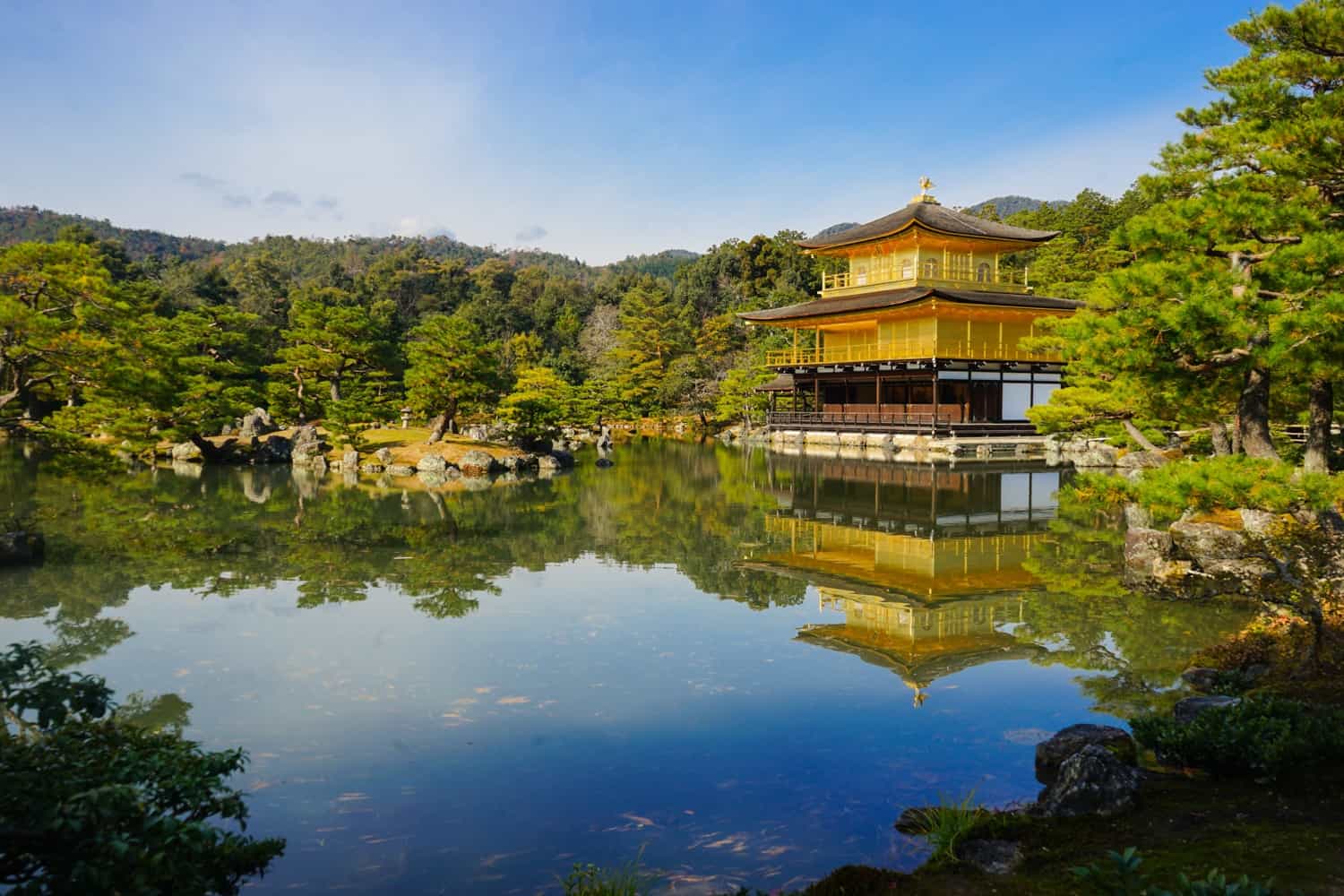
How I Track My Expenses While I Travel
Every time I share my expenses, you guys always want to know how on earth I manage to keep track of so many details from my travels!
Because Never Ending Footsteps is my company, the vast majority of my travel expenses are business expenses. I therefore studiously record everything I spend everywhere I go. I take photos of every receipt I receive and use Xero accounting software to record these expenses. In cases where I can’t get a receipt, I’ll take a photo of the price list and my ticket or food, or something as evidence.
Once a week, I then sit down and spend an hour or so uploading my receipts to Xero and making note of every penny I spent in each country I visit. It makes writing these posts super easy!
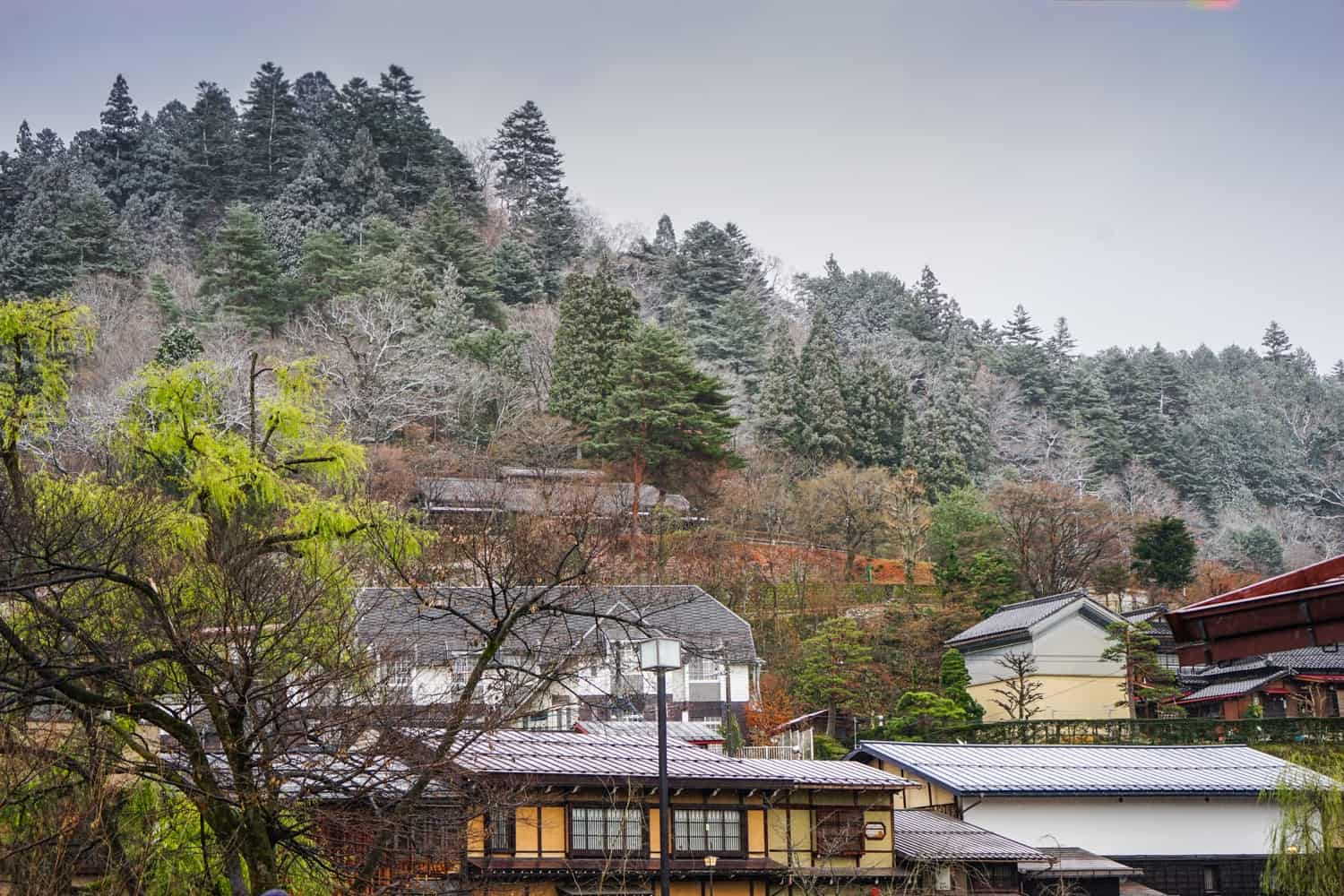
How Much Does it Cost to Travel in Japan?
It’s time to tally up all of my expenses to see my total travel costs!
Accommodation: $97 per day Transportation: $27 per day Food: $23 per day Activities/Entrance Fees: $2 per day Miscellaneous: $2 per day
Average amount spent in Japan: $151 a day!
I don’t know about you, but given Japan’s pricey reputation, I’m fairly impressed with the amount I spent in the country, especially as I included quite a few splurges in there.
How about you? How expensive were you expecting a trip to Japan to be?
Related Articles on Japan 🇯🇵 What’s it Like to Travel in Japan? 🏯 How to Spend Two Weeks in Japan: An Itinerary for First-Time Visitors 🍣 15 Weird and Wonderful Things to Eat in Japan 🎌 23 Incredible Things to Do in Osaka, Japan 🗼 21 Spectacular Things to Do in Tokyo, Japan 😎 Hipster Harajuku: The Coolest Neighbourhood in Tokyo 🦔 Should You Go to a Hedgehog Cafe? My Experience in Japan 🐒 Why Seeing the Snow Monkeys in Japan Sucked
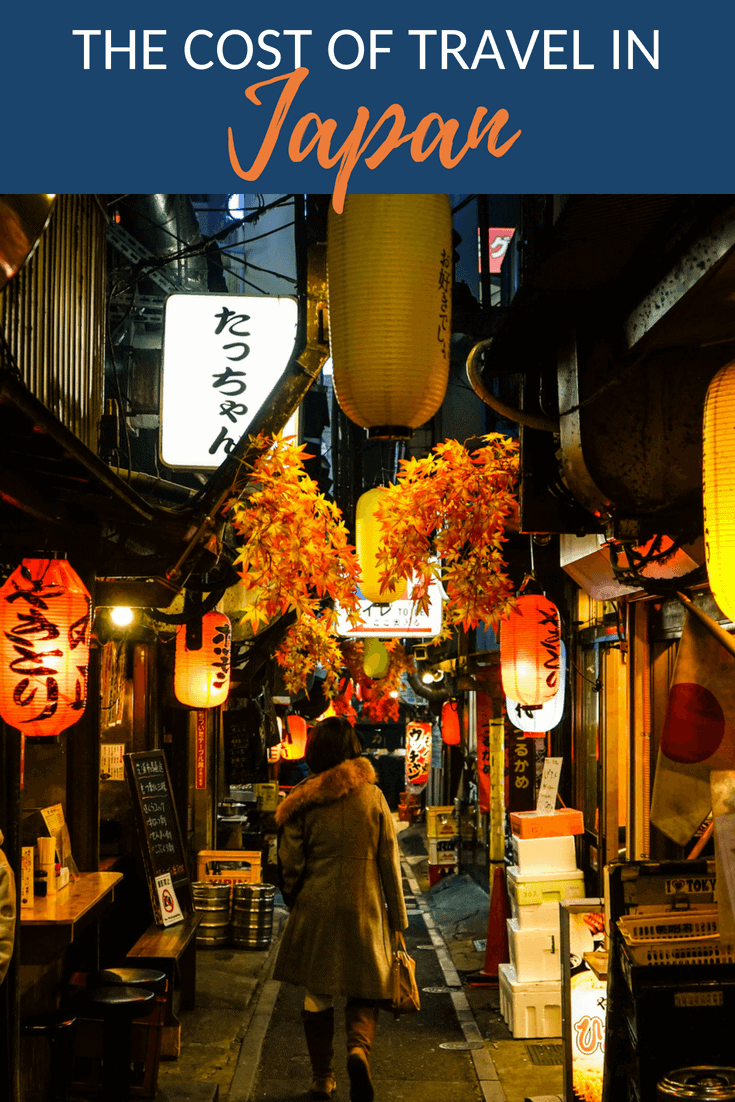
Lauren Juliff
Lauren Juliff is a published author and travel expert who founded Never Ending Footsteps in 2011. She has spent over 12 years travelling the world, sharing in-depth advice from more than 100 countries across six continents. Lauren's travel advice has been featured in publications like the BBC, Wall Street Journal, USA Today, and Cosmopolitan, and her work is read by 200,000 readers each month. Her travel memoir can be found in bookstores across the planet.
Related Posts

The Cost of Travel in Mauritius: My Detailed Budget Breakdown

The Cost of Travel in Thailand: My Detailed Budget Breakdown

2023: My Travels in Review

The Cost of Travel in South Korea: My 2024 Budget Breakdown

How to Spend Three Perfect Days in Delhi: An In-Depth Itinerary

Pushkar Travel Guide: 11 Things to Do in Pushkar
106 comments.
Wow! that’s amazing. I especially got fascinated seeing the capsule hotel…must have been a unique experience.
It was surprisingly cosy! I would totally stay in one again.
Thank you so much for your information. We will go to Japan in October 2023 for 1 month. Have paid fully for 16 days. Using your guides to budget the remaining 2 weeks. Thanks again.
This is great! Do you think it would be much more expensive in summer or any of the peak holiday seasons? I’m going over July this year and wondering if the prices change much with the seasons.
Wow! That’s quite an eye-opener! I’ve wanted to visit Japan for years, and this has certainly nudged me a little closer, as I assumed it was expensive too. The costs seem much better than I found in Amsterdam this spring! (my boyfriend still gets a thousand-yard stare when I mention how much we paid for drinks in one bar.)
Yay! Yeah, it really did feel about the same price as Western Europe, if not cheaper. The transportation is more expensive, but the food was cheaper in Japan.
This is super awesome! I, too, was under the impression that Japan was a super expensive place to visit! Good to know that you can save so much on accommodation and activities! Are you going to be posting about food in Japan? My knowledge of what to eat there is very minimal…
Yes! I published a guide to my favourite things to eat in the country last week: https://www.neverendingfootsteps.com/best-food-japan/
Ditto for here in New Zealand Lauren. All said it would be expensive. But we house sat – rent-free – and saw that food and travel are on par or cheaper than New Jersey. We also saw that virtually all things are cheaper than folks said. Methinks many labeling Japan and NZ as expensive as can be are used to paying $1 for lunch in Chiang Mai LOL. Budget folks see all Western lands as expensive. Granted I am from NJ; living by NYC makes for a high cost of living. But not bad at all, living in these lands.
Yeah, definitely true. I know that when I wrote off Japan as being too expensive, it was in the early days of my travels, when I could only afford to live in Southeast Asia!
Loving the posts about Japan so far. Do you have many more articles planned? I’ve a trip booked in November and this has been the most useful of the blogs so far for help in planning – thank you. Although I’ve had to cut the hedgehog cafe off my plans after reading your article as I hadn’t quite considered the ethics enough!
Yes! So many. I’ll probably post another half a dozen or more over the next few weeks :-)
I always assumed Japan to be very expensive. Thanks to your blog I don’t anymore. Cheers!
This is all very useful info! I’m impressed with your budgeting skills. Awesome, Thanks for sharing this!
Ha! Thank you :-) It comes naturally (finally) after seven years of doing this.
Great article. I’m planning a visit for early 2025 to go with my grandson … was the budget breakdown for one person or a couple … because you mentioned going with your partner?
The accommodation prices are the total cost of the room (rather than just my share), while the transportation, food, and activities are all my share of the costs.
Fantastic article. Love your budget posts because you never leave anything out.
I try not to! Thanks so much :-)
Beautiful photos, Japan look amazing and thank you for sharing your budget tips as well. :)
No problem! :-)
Thank you so much for this! I’m going to Japan in September and I’ve been worrying about my budget. This has definitely put my mind at rest!
Yay! Happy to hear that :-)
I’m so happy that you have posted so much lately, you’re my favourite travel blog and I check this page a lot more often now that the pace of the posts has increased :)
Thank you! :-) I’m aiming to stick to a three-times-a-week posting schedule now that I have a base and more time to dedicate to writing.
This is so much cheaper than I expected. Do you have any idea about prices for solo travellers though? Would I have to pay for a double room most of the time (apart from dorm beds of course)?
No, lots of hotels and guesthouses have single rooms, so you wouldn’t need to pay out for two people very often, if at all.
Thanks, that’s good to know!
Very useful breakdown that would be very helpful for first-timers to Japan.
Just to share, one of my own major expenditure in JP is … vending machine contribution! I simply can’t resist them and can end up buying seven times a day. “P
Yes! I couldn’t believe how many vending machines there were in the country, as well as the variety of things you could buy from them.
Hello! This is a very timely article for me to read as I’m actually going to visit Japan for a week on September. I really love Japan’s culture and their people. There are a lot of places that I want to visit and a lot of things I want to do but I am on a strict budget. Hopefully, your article would be able to help me fix my budgeting for my trip to Japan.
I hope so! I really didn’t find it horrendously expensive, so I think you’ll be surprised by how much you can do there for free.
I love your budget posts because they give me such a good idea of how much I can expect to spend in places around the world. Are you thinking of doing them for everywhere you visit?
That’s my plan! I’m slowly working my way through my records and adding more and more to the site.
Hey, thanks so much! :-)
I’ve planed to visit Japan next year, Thank you for sharing your budget, I’ll try to not exceed 100$/day, following your information on this post.
Have a fantastic trip, Ingrid! :-)
Which month you visited Japan? I am thinking for Cherry blossom (April 2019) and everything is coming up too expensive. Are those above for cherry blossom season you visited?
Ah yeah, unfortunately, the cherry blossom season is the most expensive time of year to visit Japan. I was there in December, so prices will be higher than the ones mentioned in this post. I’ll add that detail to my post now!
I was under the impression that Japan was a super expensive place to visit! Good to know that you can save so much on accommodation and activities! This article includes all the places you can visit in Japan and their expenses. It is very educative and it can be improved by providing expenses in INR. Thank you for posting this useful information.
Thank you! I usually just price these articles in the local currency and USD, which is where the vast majority of my readers are located. If I started including currencies for everyone, the post would quickly get ridiculous :-)
Seems a dumb question, but I’m assuming all the values are in USD, is it correct?
Yep! I write at the start of the post: “The amounts in this guide are listed in Japanese Yen and U.S. dollars, simply because the vast majority of my readers are from the U.S.”
That is a very good breakdown cost analysis there. i am planning to go to japan as well with my wife. and planning to stay for 10 days only. 4 in tokyo 3 in kyoto and 3 in osaka. i like to idea of 100 aud / day it’s a good target to keep but i guess the expense on buying cloths and souvenir would be uncontrollable though i heard things in japanese is not that dear if you know where to shop and avoid tourist trap. i didn’t see you mention buying internet data in advance ? or i missed it somewhere. i guess the expense for a couple will be double up. but i guess 3000 aud for 2 people is unavoidable.
amazing detailed guide
You’re welcome!
I’m so glad I found your website! I love the detail and photos. I just booked a trip to Japan with my boyfriend for this upcoming October, and your site will be very helpful. Question: do most hostels and accommodations that you experienced have you sleeping solo? I’m wondering if I should expect to sleep in a separate area than my partner for most of the trip…
Hi Lauren, Thanks for such a detailed description of your time in Japan! I’m going to Japan October this year with my wife and my major concern is how you managed to book sleeping pods for you and your boyfriend as almost all accommodations are either “male only” or “female only” from the options I’ve seen so far. Did you have to get separate beds for those nights?
Yeah, the capsule hotel-style accommodation is all single beds. You can see in my photo in this post that there’s not much room for anybody else!
My wife and I are heading to Japan in mid May and I plan to use your itinerary.
Would it be possible for you to write something about the travel logistics if you can remember them – ie to get from Tokyo to Mt Fuji we booked the following train, leaving at…from the following platform which took X hours and arrived at Mt Fuji at. We then bought our day pass from….and ……..
This would be really helpful to me and other independent travellers – from where did you buy your JR pass and how did you book your individual train rides?
Cheers Paul
Oh, man. That would take me hours and hours to put together and I’m sure times and platforms change so it would be impossible for me to keep the information up-to-date and accurate.
I recommend downloading the mobile app Hyperdia — you can plan your train travel out using that. Just enter in your destinations and it will tell you which train to take and from which platform. Super easy to use! :-)
The site I used to buy the JR Pass is this one . I booked the other train tickets in person at the stations when I arrived — there weren’t many that weren’t covered by the rail pass. Just the small regional ones to get to and from Yudanaka, I think.
Hello Lauren, I love the details in your blog. Your expenses were for 1 or 2 people?
I cover that at the start of the blog post: “And finally, these are the expenses I paid while travelling with my boyfriend. That means that accommodation prices (with the exception of the dorm bed in Hiroshima) have been halved to indicate my share.”
Great super helpful article. THANK YOU!
Hi Lauren, Thanks so much for this article, it is so helpful!!! on which dates did you fly to japan? what dates are you recommending on?
I spent the first two weeks of December in Japan. I’d recommend looking at May or September as the best months to travel there.
Hi Lauren I’d love your advice. I’m traveling with my 22yr old daughter to celebrate her graduation and my birthday. I booked the first two nights a hotel in Tokyo and then figured we would VRBO or Airbnb but after reading your post it looks like things have changed. I love the idea of the capsule hotels and the standard tatami mat rooms look enchanting. So how do I search for either? We’d like to experience both for the trip. oh by the way, I’m a traveler too, let me know where in the world are you now. Perhaps we can meet up and collaborate, I do video production, just got back from Colorado and am going to Cancun in June.looking forward to hearing back from you, Peace and Love always, “L” oh let’s connect on IG
Just book them through Booking.com — no need to go to any specific site. I’m in Bristol, in the UK. I actually don’t have an Instagram account — it wasn’t doing good things for my mental health, so I deleted it :-)
G’day Lauren,
Loved your detailed description of your travels through Japan. However; I’m not so brave as you travelling around on my own, especially with the language problem. I am a single traveler from Bangalore, India and would love to spend 7-8 days in Japan, with my journey starting and ending in Tokyo, reasonably priced hotels or local hostels, but preferably single accommodation, if possible. (willing to pay extra).
I love train travel and Japan is one of the best places to do that..your take on that would be appreciated. If you feel, I meet your requirements, would love to get an itinerary and costing for my 7-8 day stay in Japan.
Hello! I am really curious on how you got a 14 days pass JR for only 420$, from where I am from (Canada) it is 567!
If you click the link in the post, you can buy it through there. It’s currently listed for 414 USD.
$95/day seems cheaper than what I had expected – is that a tight budget? What can you do more with $150/day? I’d prefer to spend that extra on living in nice hotels + do more activities. Does that seem possible with $150/day?
No, not really. It was a mid-range budget and all of the hotels we stayed in were nice — I made zero effort to stick to a tight budget.
Hope you’re well. I’m wondering if you still advise from not booking Airbnb for Tokyo? Thanks.
Until moments ago, I had always assumed Japan to be too expensive to even consider. Never thought the cost of activities and entrance fees would be so cheap. This is an encouraging article, thanks, Lauren!
Really remarkable post, Lauren. Extremely thorough and helpful. I’m looking to plan a trip to Japan soon and stumbled across your blog. As you clearly hoped from city-to-city, (this may be a silly question) what did you do with your luggage on a day-to-day basis?
Thanks for any insight.
Oh, just left it in my hotels. If I spent less than a full day somewhere, it was visited as a day trip, so I didn’t take my luggage with me. And then whenever I arrived somewhere, I’d time my arrival with the check-in time of the hotel, drop my bags first, then head out exploring.
great article! As I have said in the past you always put out great stuff that’s very valuable information.
I just came across your website when searching for trips for Japan for my son. I have to say I am really so happy and want to thank you so much for the information. My eldest son has been taking Japan as a language course for the last 3 years and was looking forward to trying to get into the high school Japan trip in end of july beginning of August 2020. He also wanted to go to TUJ(Temple University Japan).
However, because of the olympics the high school Japan trip has been canceled for 2020. Unfortunately, he will be a senior next year so the 2021 high school program will not be available for him. Plus going to olympics are so expensive. If you can give me any advice, I would greatly appreciate. Thank you so much in advance for your time!!!
What advice do you need? About what?
Hi Lauren, I really liked you post and I think is really helpful. When exactly did you go in Japan? We have to change our plans for next February (previous planned for Philippines but to risky for my wife pregnancy) and we consider to go in Japan instead. So, do you think it is good idea travelling in Japan in February? Thank you and advance.
I went during the first half of December. As long as you keep in mind that it’ll be pretty cold (5-10 celsius), I think it’s a great time of year, as it won’t be as crowded as peak season.
is it favorable to use credit card or cash is much preferred? thanks
Hi. Thank you for the information! I am so inspired to go to Japan now. My mom who was from Japan, always told me it’s too expensive to go back and visit. I am now 56 and it has been my lifelong dream to go. My husband and I will go with backpacks like we did when we were younger and before having kids. Is October a good time to go? I read September can be humid. I want to follow your itinerary for the most part. My mom lived in Kanazawa. My heart is full right now and my eyes are misty. Thank you for making my dream a little bit closer.
Hey Lauren!
Thank you so much for the information. I actually got invited on a delegation to go to Japan this evening and am trying to get the average cost to travel in the country. Obviously, your trip was on a very impressive budget. I have two questions, 1. Based on the $95/day over the course of your 16-day trip, would it be right to say that (flight included) you only paid ~$1,600 for your entire trip? 2. Would you say for a trip including cultural experiences, transportation and stays in nice hotels for a week, a grand total of $3,700 is reasonable?
In advance, I appreciate your advice on this!
Hi Lauren, Are you able to name all the accomodations you stayed with? I would like to visit Japan next year on a very tight budget. Thanks.
Yes, they’re already linked in the post along with the reviews of them under the accommodation section.
Hi Lauren. I’m debating spending 5 nights in Osaka and doing day trips to kyoto, nara and himeji castle. (I have hotel points where i can stay at osaka). Based on your experience – is that ok? or is better to stay 2 nights in Osaka and 3 nights in kyoto. There is a lot of different opinions online, thought id ask you if you think i’d be missing out on anything if staying in osaka. The one plus is i can save some money if using points and also staying in 1 location for 5 nights vs packing and moving to another location. Thanks so much for your posts!
Hey i found this really helpful but I’ve been planning to visit japan for a while and have hopes of going after i graduate high school. With some research i found that the JR pass isn’t needed if you’re just staying in one city. How much do you think i would spend on transportation for 2 weeks in Tokyo? Will it come out to more than what you spent or less?
Definitely less! You can walk to a lot of places, but otherwise the metro won’t cost much at all — a dollar or two per trip.
Would you be able to give recommendations for food places in Kyoto that are affordable.
Hi Lauren. Came across your site on a Google search for budget travel. It convinced e that a trip to Japan is affordable. Never have done international travel and would like your advice on a couple of things. 1. What is the best way to pack? Do I have to just use a back pack? 2. Can I use a credit card or should cash be used? 3. Can I get cell phone coverage in Japan.
Thanks, you site is great!
1) I prefer to travel with a backpack, but you’ll do okay with a suitcase, too. I personally find backpacks easier for navigating train stations, as you don’t have to drag it up and down stairs, etc. It doesn’t really matter either way, though. Depending on how long you’ll be staying there, I usually pack for a week no matter how long my trip is, then do laundry once a week.
2) Japan is mostly cash-based, so plan for lots of trips to the ATM. I didn’t find many places that accepted cards, although I also wasn’t looking very hard either.
3) Yep, you can pick up a local SIM card at the airport when you arrive. I bought mine through the rail pass company I link to in this blog post, but you can also just buy one when you arrive. Super easy to do and they’ll get it set up for you in the shop, too.
Love your posts! have been browsing but when I stumbled upon your page found it really helpful! Planning for Japan and Singapore so finding both blogs is perfect timing :) We are still not sure if the JRpass will help us- when we did calculation for the main routes we are going it resulted not worth it, however then not sure if we will require any additional rails/trains in between these. Tokyo>Hakone>Kyoto> Osaka without returning back… your input will be appreciated :) P.S. Feel free to visit the island of Malta, my home country
Wooow !! This is amazing , My wife and I have been planning to visit japan and we always had a misconception that Japan is expensive to visit .. This is a great blog .. So the overall cost including your flight tickets and local travel in japan would cost around 2500 $ per person ?
This was so incredibly helpful! Normally I don’t find myself reading entire articles but yours was so informational and in depth. Thank you so much for helping me get an idea of how much I would roughly spend!
Ah, no problem! Thanks for reading, and I’m glad you found it useful :-)
I super love this article Lauren! I thoroughly enjoyed it. When all is well and my country allows us to travel again, this is going to be on my top 3 places to visit (the 1st 2 will be diving spots as I’m a freediver). I made sure to bookmark this page for reference. Again, thank you for writing this. One question though, when you say $ do you mean USD?
Yep, USD! “The amounts in this guide are listed in Japanese Yen and U.S. dollars, simply because the vast majority of my readers are from the U.S.”
How much did you spend on transportation in Tokyo? I mean if you hadn’t had the JR Pass? How much did you save in Tokyo by having the pass?
Oh, I didn’t activate the pass when I was in Tokyo — I activated it on the day I left — so that was my total expenses without using it.
Hi Lauren! I just read your post. My boyfriend and I are backpackers and we are planning our next trip to Japan. I wanted to ask you when did you go there? (what time of the year). Because we can only take time off during winter time (dec-jan) and I don’t know if that’s a good time of year to go. We are from Denver and snow doesn’t bother us but we also want to enjoy it.
Thanks in advance! Love your blog
I was there in December! There’s fewer crowds then, which makes it a great time to go! As an added bonus you get to enjoy all of the cosy onsens in the snow :-)
Even in these unprecedented times, I feel as if I have already traveled to Japan! I loved every minute of the information you gave me. This place is definitely next on my list, of course! It can be months or a year from now.
It appears you’re still getting traffic in the comments here (excellent) so I thought I would ask a broad question. Wife and I are thinking to take our 6 and 9 year old to Japan for about 11 days. Any destinations you might leave off your itinerary given a bit less time and traveling with kids?
Fantastic! I’ve never seen any article about travelling to japan so specific and detailed before!! It sure will help me prepare for my own first&solo trip! thank you so much
Great post, but the prices are wildly outdated now. Your $30/night hotels in 2018 are going for around $220/night in 2023. Insane!
Hi CS, what time of year are you looking to visit? I’ve had a quick check and every hotel I link to still displays roughly the correct prices (a couple were out by about $10-20 a night, but nothing like $190!). If you’re looking at going in May, for example, Hakone Tent prices their rooms at $176 a night, but then offers rooms at a price of $73 a night a month later in June, so the time of year can affect the pricing. I’ll make a note to mention this in a future update to the post.
I visited in the low season, in December, so the prices I paid were lower than they might be at a more popular time of year.
This is amazing on every level. Thank you! only issue is prices for accomodations double during sakura season so what can I do
Thank you Lauren, for this insightful and complete post.
Out of curiosity, do you know what was the average USD/YEN exchange rate when this trip took place?
Kind Regards,
I update the prices in this article every two months so the exchange rate used in the post is recent
How recent was your travel to Japan and what exact dates were you there? I’m planning to take my family of 4 there in 2025 and would like to schedule it during cherry blossom season. I heard prices usually go up during this time so I was wondering if your trip happened during peak or off-peak season.
I was there in December. Prices do increase a lot during cherry blossom season, unfortunately — that’s the most expensive time to visit.
very good post for budget travellers. thanks for sharing.
Leave a reply Cancel reply
Your email address will not be published. Required fields are marked *
Meet Lauren Juliff

- Travel Budget Japan: How much it costs and how to save
This article may contain links to products and services we use and recommend. We may receive compensation when you click on links to those products. For more information, see our Disclosure Policy .
Download our 2024 Minimalist Travel Wardrobe and Carry-On Packing List
What is the currency of japan, travel cost assumptions.
- Japan Travel Cost Summary
Map of Accommodation, Points of Interest, Eateries and Transport
How much does accommodation cost in japan, laundromats, communications, how much to budget for experiences in japan, gifu prefecture, ishikawa prefecture, nagano prefecture, yamanashi prefecture, hiroshima prefecture.
- Hyōgo Prefecture
Kyoto Prefecture
Naha prefecture, tokyo prefecture, kanagawa prefecture, okinawa prefecture, how much to budget for dining and groceries in japan, recommended foodie experiences, how to save money on dining and groceries, how much to budget for transportation in japan, train travel, how to save on transport costs in japan, rail transportation, japan-wide rail pass, regional rail passes, without rail passes, what are ic cards, bus transportation, other expenses you may incur when travelling to japan, travel insurance, finance and bank fees, luggage transfer and storage services, haircuts and massages, donations and gifts, how much did it cost you to explore japan, author: paul ryken.
Are you planning a trip to Japan and wondering how much it will cost you? You’ve come to the right place. In this article, we outline our actual travel costs during our three-month trip to Japan in 2023. Contrary to popular belief, Japan can be an affordable travel destination, with surprisingly reasonable accommodation and dining options. Plus, with the current exchange rate working in your favour, now is the perfect time to explore the Land of the Rising Sun . We also share some useful tips on how to save money during your time in Japan .
This list for women and men was created as a result of more than seven years of full-time travel around the world in all seasons with only carry-on luggage. This is the packing list we have used as we embark on our adventures into 2024.
The fine print: I agree to receive the Minimalist Journeys newsletter full of news, actionable tips and practical advice every month. I know I can unsubscribe at any time. I have read and agree to the Terms of Use and Privacy Policy .
The Japanese Yen (JPY) – the word yen meaning circle or round object – has been in existence since 1871. In circulation these days are
- Banknotes in JPY1,000, JPY 2,000, JPY5,000 and JPY10,000 denominations; and
- Coins in JPY1, JPY5, JPY10, JPY50, JPY100 and JPY500 denominations (though the latter two are most commonly used).
When reading this article, please keep the following in mind:
- Our travel costs are based upon a couple travelling together.
- We are independent travellers, researching and organising our own itinerary using our go-to travel planning tools .
- Accommodation: We usually stay in self-catered accommodation (homestays, locally owned guesthouses, hostels and short-term rentals) - in our own room with (preferably) our own bathroom, though the kitchen may be shared.
- Dining and Groceries: We have at least two meals a day at home . We like to eat out once a day to every few days (and prefer locally owned restaurants and small eateries away from the tourist hotspots).
- Transportation: We walk a lot, and wherever possible, we travel by public transport . Only occasionally do we hire a vehicle.
- Experiences: Many of the activities we do are free of charge or cost very little. When we pay for attractions or activities , we are selective as our funds are limited (just like everyone elses).
- In addition to above expense categories, we include in our total daily costs our mail scanning and forwarding service , mobile phone plans and travel insurance - though only for the period we are in the country.
- We use a multi-currency personal account with Wise to manage our currencies XE to transfer money as required.
- Not included are the costs for entry or exit transportation into/out of the country.
During our most recent visit, we spent the maximum time we could in Japan (that is, 90 days on a tourist visa ), which means we travel slower and see fewer attractions/do fewer activities each day than someone who spends two or three-week vacation in Japan and tries to see and do as much as possible each day.
Japan Travel Cost Summary
Bearing those assumptions in mind, we spent on average JPY9,205 per person per day in Japan (or USD69 using the foreign exchange rate applicable at the time).
Certainly not the cheapest country we’ve visited to date , but surprisingly more affordable than we thought.
Below is a map of the recommended accommodation, points of interest, eateries and transport terminals/stops mentioned in this article.
If you are interested in our other detailed maps containing recommended accommodations, points of interest, eateries, and transport terminals/stops, check out the following destinations:
As independent travellers, we booked almost all our accommodations ourselves via the various platforms we recommend below. We only used the help of an agent when organising accommodation for our two multi-day hikes – the Kumano Kodo ( Kumano Travel ) and the Nakasendo (the Tsumago Tourist Information Center). Most accommodations were short-term rentals – studios or one bedroom apartments with a small kitchen (where basic meals could be prepared), bathroom and laundry facilities. During our hikes , we also stayed in family-run guesthouses (minshukus), often with onsen facilities.
During our three months in Japan , our accommodation costs averaged JPY7,720 (USD58) per room per night :
Our most expensive accommodation was at Koyasan Saizenin [ Google Maps location ], a Buddhist Temple in Koyasan – at JPY14,199 per night. While not cheap compared with our other accommodations in Japan , the temple stay (shukubō) was well worth it, as it allowed us to experience a multi-course shōjin ryōri dinner and breakfast (not included in above price), bathe in the traditional onsen and attend the Buddhist early morning prayer.
At just JPY4,500 per night , our most affordable accommodation was a stay at Guest Cafe Kuchikumano [ Google Maps location ] on Day 0 of our Kumano Kodo Hike. This was a traditional Japanese guesthouse (minshuku) with a large shared kitchen and bathroom. The host was super nice, and we had a lovely evening around the fire, toasting mochi balls (the Japanese version of marshmallows) and then dipping them in zenzai, delicious sweet red bean soup .
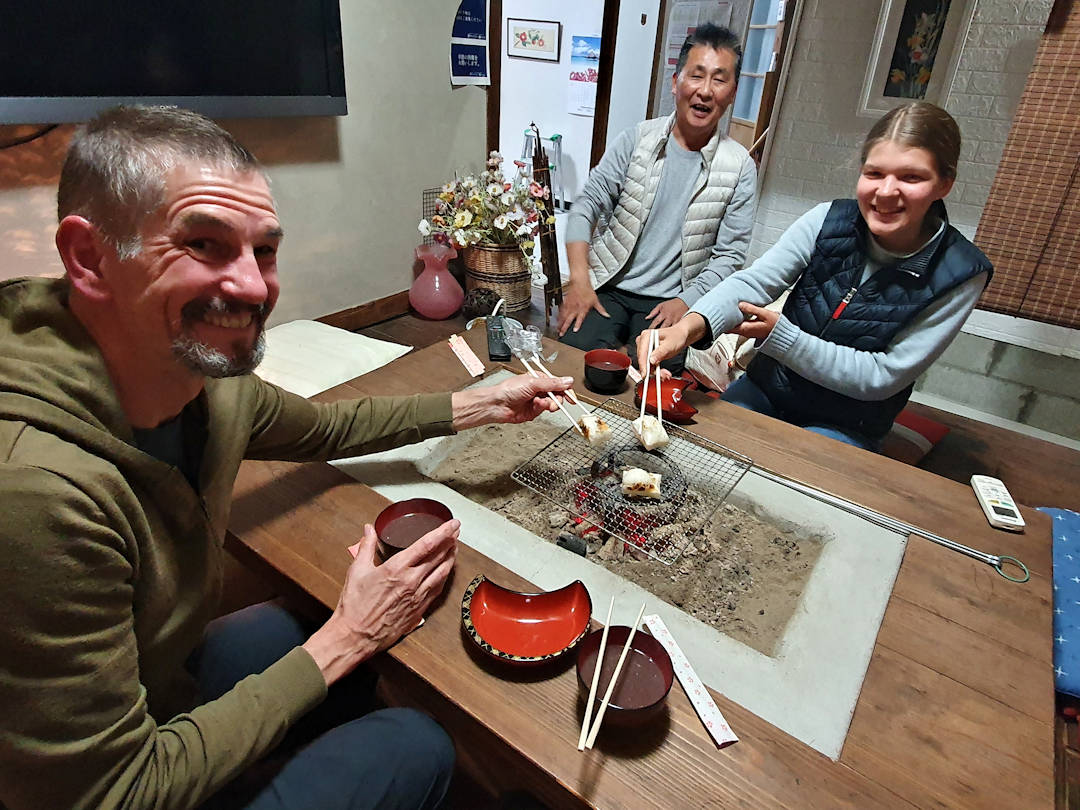
Are you planning a trip to Japan and are wondering how much to budget? We share our actual travel costs and useful money-saving tips for your Japan adventure.
Although most of the accommodations we booked had a washing machine, over the three months in Japan , we did use laundromats eight times, costing us a total of JPY4,600 (or JPY575/USD4 per laundromat use ).
Prior to arriving in Japan , we purchased and received two NIPPON 4G-LTE SIM cards (one for each of our mobile phones) at a cost of JPY3,280/USD25 each – to use when we didn’t have access to Wi-Fi while travelling. Each SIM card came with 15 GB of data, valid for 180 days.
You can pack a lot into a three-month trip in Japan , and we did. All our experiences added up to JPY131,583 (USD984) between the two of us – on average, JPY756 (or just under USD6) per person per experience.
Here are some of our favourite things to see and do (including the cost per person when we visited – note that some were FREE):
- Chubu Region
- Chugoku Region
- Hokkaido Region
- Kansai Region
- Kanto Region
- Kyushu Region
Kamitakara-no-Yu Onsen , Shinhotaka [ Google Maps location ]: JPY800 Kanda House , Shirakawa-go [ Google Maps location ]: JPY400 Matsuri no Mori Museum , Takayama [ Google Maps location ]: JPY1,000 Takayama-Shinhotaka Ropeway (Bus and Cable Car) Two-Day Pass, Takayama [ Google Maps location ]: JPY6,800
Yasue Gold Leaf Museum , Kanazawa [ Google Maps location ]: JPY310
City Museum of Art , Matsumoto [ Google Maps location ]: JPY410 Miyamoto shōkai one-day bicycle rental, Nagano [ Google Maps location ]: JPY1,500 Nagano Marathon Foreign Athlete Entry Fee: JPY15,437 Obuse 3-in-1 Museum Pass (Hokusai, Kozan Takai and Obuse Museums), Nagano: JPY1,300 Togakushi Bus Day Pass , Nagano: JPY3,000
Bike ride around Kawaguchi and Saiko Lakes, Fujikawaguchiko: FREE (bicycle was provided by accommodation) Witnessing Magomi Matsuri/Chigo-no-Mai at Kawaguchi Asama Shrine and Hike to Tenku no torii, Fujikawaguchiko: FREE Kubota Itchiku Art Museum , Fujikawaguchiko [ Google Maps location ]: JPY1,300
Mt Misen Hike, Miyajima : FREE Hiroshima Castle , Hiroshima [ Google Maps location ]: JPY370 History and Folklore Museum , Miyajima [ Google Maps location ]: JPY300 Mitaki-dera Temple, Hiroshima [ Google Maps location ]: JPY200 Peace Memorial Museum , Hiroshima [ Google Maps location ]: JPY200
Hokkaido Museum , Sapporo [ Google Maps location ]: JPY1,200 Okurayama Ski Jump Stadium , Sapporo [ Google Maps location ]: JPY1,000 Sapporo Snow Festival : FREE Teine Ski Field (Day Pass and Gear Hire), Sapporo [ Google Maps location ]: JPY11,800 TV Tower , Sapporo [ Google Maps location ]: JPY1,000
Hyōgo Prefecture
Great Hanshin-Awaji Earthquake Memorial , Kobe [ Google Maps location ]: JPY600 Himeji Castle and Koko-en Garden , Himeji [ Google Maps location ]: JPY1,050 Nunobiki Herb Gardens , Kobe : JPY1,130
Botanical Gardens , Kyoto [ Google Maps location ]: JPY400 Free Walking Tour , Kyoto: FREE/Donation Hike Mt Inari , Kyoto [ Google Maps location ]: FREE Gion Corner Cultural Performance , Kyoto [ Google Maps location ]: JPY5,500 Ninomaru-Goten Palace , Kyoto [ Google Maps location ]: JPY1,050
Todai-ji , Naha [ Google Maps location ]: JPY600
teamLab Planets , Koto City [ Google Maps location ]: JPY3,500 Hokusai Museum , Sumida City [ Google Maps location ]: JPY1,000 Japan Olympic Museum , Shinjuku City [ Google Maps location ]: JPY500 Watching the sunset from Carrot Tower , Setagaya City [ Google Maps location ]: FREE Yayoi Kusama Museum , Shinjuku City [ Google Maps location ]: JPY1,100
Open-Air Museum , Hakone [ Google Maps location ]: JPY1,600
Rental Charinko Bike Ishikawa , Zamami [ Google Maps location ]: JPY2,800 Fukushuen Garden , Naha [ Google Maps location ]: JPY200 Himeyuri Peace Museum , Naha [ Google Maps location ]: JPY310 Japanese Naval Underground Headquarters , Naha [ Google Maps location ]: JPY600 Okinawa Prefectural Museum , Naha [ Google Maps location ]: JPY555 Shuri Castle Grounds, Naha [ Google Maps location ]: FREE Tsushima-maru Memorial Museum , Naha [ Google Maps location ]: JPY500
As mentioned above, during our time in Japan , we stayed mostly in accommodation that had a kitchen with basic cooking facilities, enabling us to have at least two meals a day at home . That said, it was sometimes easier and cheaper to buy ready-to-eat meals from convenience stores such as Lawsons, 7-Eleven or Family Mart – though we did try to limit those occasions to avoid adding to Japan ’s plastic waste problem .
Our daily dining costs in Japan averaged JPY1,193 (USD9) per person , with our most expensive dining experience costing us JPY2,350 per person at Steakland Kobe-kan [ Google Maps location ] – a worthwhile luxury to taste the famous beef the city is renowned for.
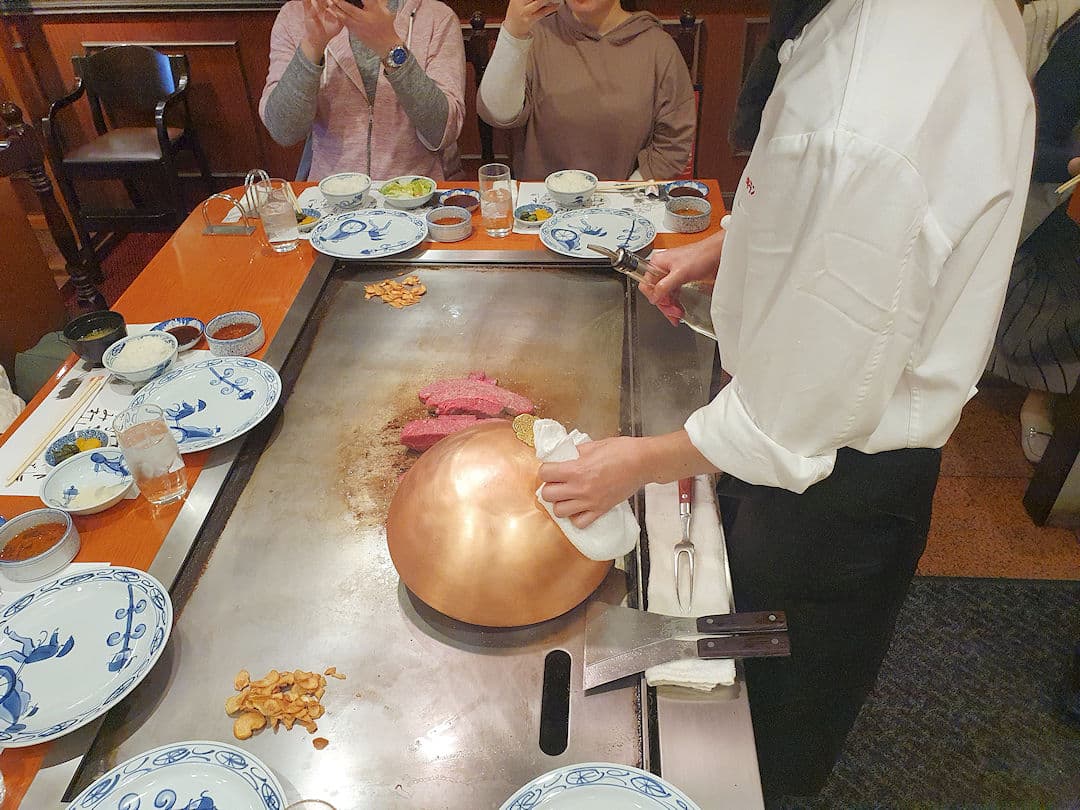
Our daily groceries expenses in Japan averaged JPY1,043 (USD8) per person . We found Aeon supermarkets offered some of the best value for money, and between the major convenience store brands of 7-Eleven, Lawson and FamilyMart, we found Lawson offered the best range at the most affordable prices.
If you happen to visit Sapporo, make sure to pop into a Bostonbake branch [ Google Maps location ]. They have delicious pastries and buns daily (which are super affordable) – great to stock up on some items when you’re out and about during the Snow Festival . Sadly, Bostonbake only exists in Hokkaido.
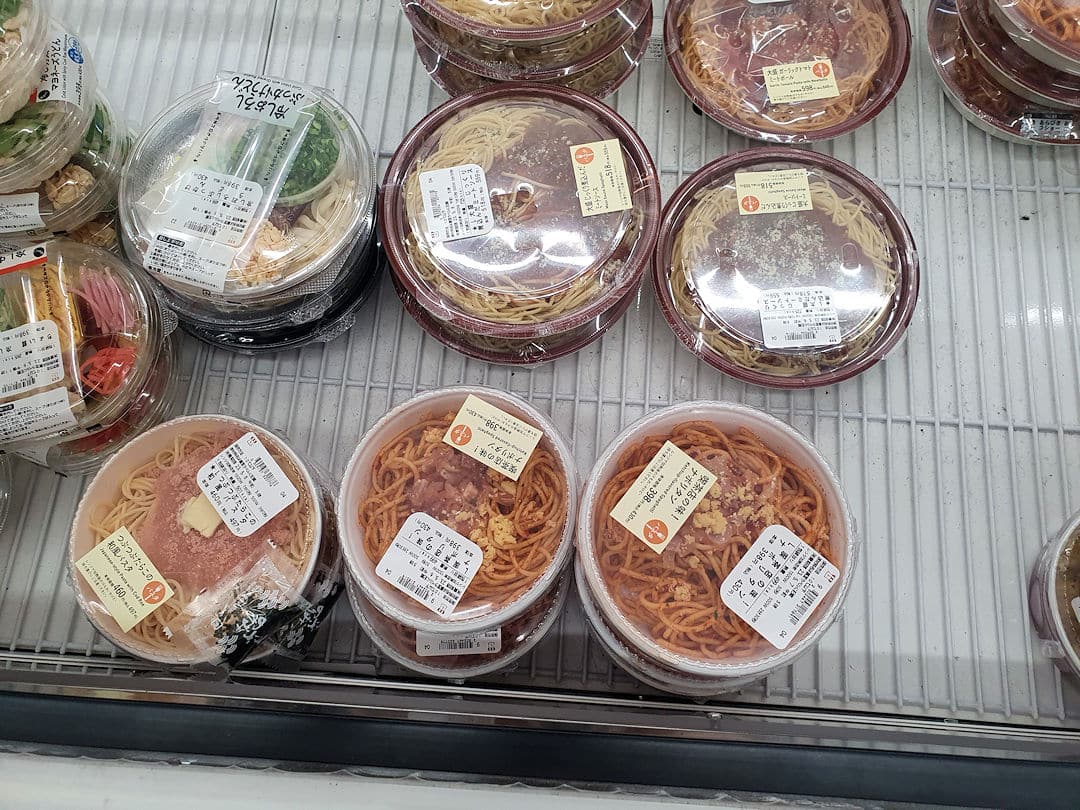
As Anthony Bourdain is famously quoted as saying: You learn a lot about someone when you share a meal together. And the best way to learn about a destination is by spending it with locals, in their homes and in local markets. If you're a foodie and would like to join some incredible cooking classes and food tours, here are our recommended EatWith offers in Japan :
- Food and Sake Pairings in a Traditional Kyoto House
- Home style Ramen and Gyoza cooking class in a Japanese home
- Tokyo West-Side Walking and Street Food Tour
- Izakaya Food Tour in Shinjuku
Dining out all the time can quickly get expensive. We always try and book accommodation where we have access to a kitchen - either our own little kitchenette or the kitchen of our host. That way, we can store food in the fridge and make our own meals. We usually have breakfast and one other meal at our accommodation, and one meal when we're out and about.
Restaurants (even in tourist hotspots) often have special lunch offers (for example, a three-course meal for EUR10). Portion sizes in many parts of the world are usually quite substantial, so we often share a three-course meal. The same applies if you go out for dinner: Order a starter or salad and a main, and that's usually enough for two people. An added benefit: there is less food waste.
As for groceries: every country has more expensive and cheaper supermarkets. Ask your host what the cheaper options are (for example, Aldi or Lidl in many European countries) and avoid convenience stores as much as possible.
Experiencing the local cuisine is one of the reasons why WE travel… Paul and I tend to only eat out once a day (sometimes only once a week), usually at lunchtime. This allows us to try local dishes while taking advantage of awesome lunch deals. It also means we don’t have to roam around unknown parts of town every night in search of a restaurant.
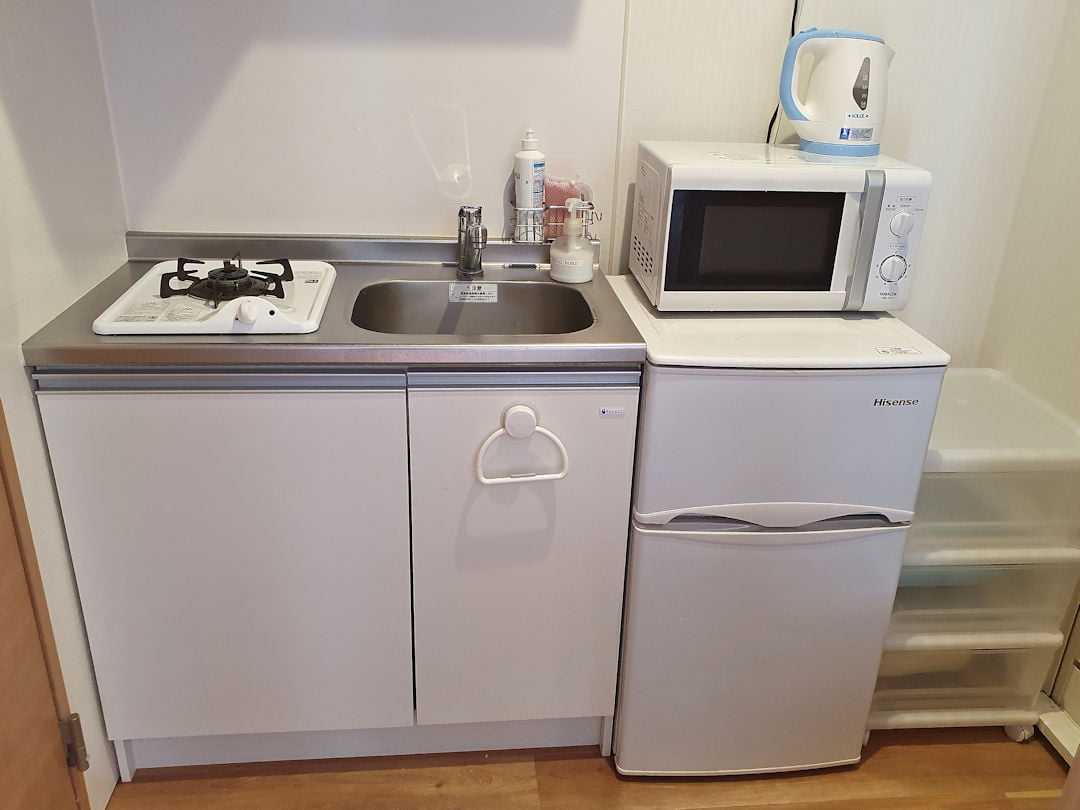
Our transport costs over the three months we explored Japan averaged at JPY1,569 (just under USD12) per person per day .
Given Japan is an island country, we ended up taking two internal flights: The flight from Sapporo, Hokkaido to Nara, Okinawa cost us JPY16,580 each (with Peach Aviation ); while the flight from Nara, Okinawa to Hiroshima on Honshu cost JPY14,460 per person (with ANA ). In both cases unfortunately, we had to check in our travel packs as the strict carry-on limit was seven kilograms.
As we were keen to see the country and had more time to explore Japan than most foreign tourists, we always considered taking slower (and thus cheaper) train options over the Shinkansen. That said, we did want to ride the Shinkansen (and in some cases, there was just no feasible alternative). In the end, we took the bullet train three times: Our Hiroshima to Himeji trip cost JPY8,040 per person ; the Kanazawa to Nagano journey JPY8,590 each and the train ride from Odawara to Tokyo JPY3,280 per person .
The Shinkansen was always markedly more expensive than slower train options. As an example, the distance from Hiroshima to Himeji was 239 kilometres, with a per kilometre cost of JPY33.64 on the Shinkansen, whereas the (slower) Rapid Express train from Himeji to Kyoto – a distance of 127 kilometres – cost JPY2,310 per person or JPY18.19 per kilometre. So if you have time, take the slow train and save money.
And speaking of travelling slowly: If you’re in the Hakone area, make sure to ride the Hakone Tozan Train [ Google Maps location ] between Gora and Odawara. The scenery is stunning, and the train does a number of switchbacks as it journeys down the mountain (or up if you do the trip in reverse) – a very unique experience.
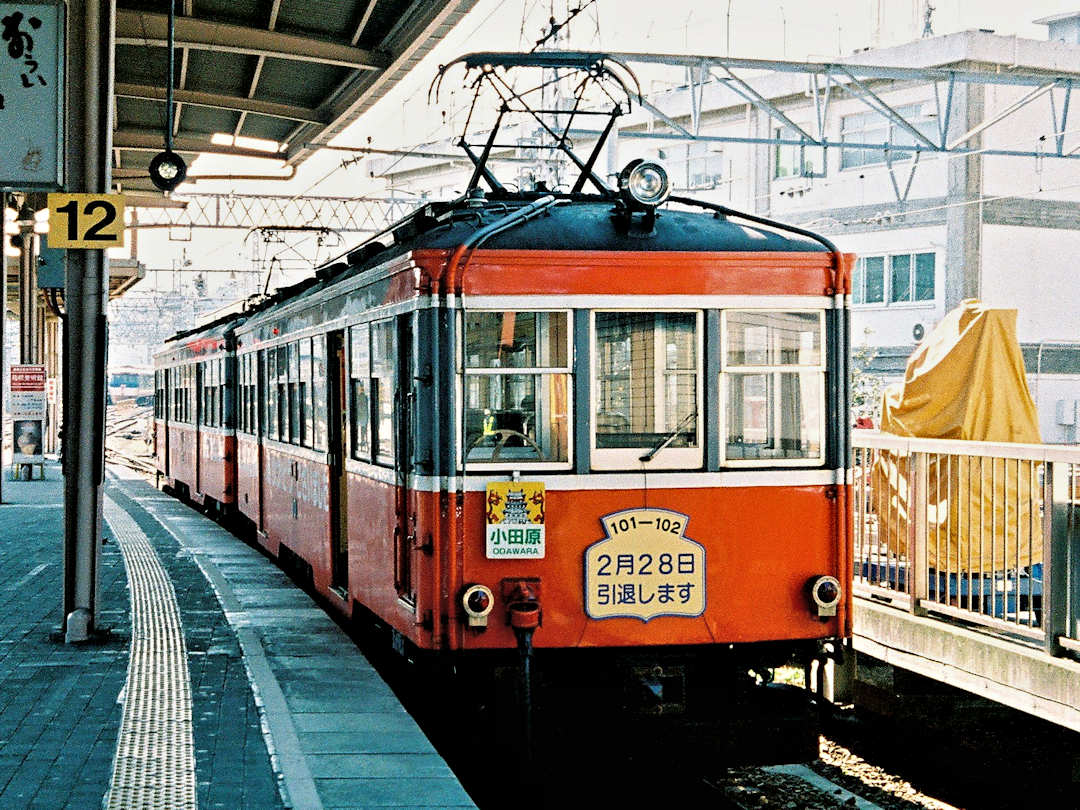
Japan boasts an efficient transportation system. But, as we found out, transportation costs add up quickly, especially if you’re travelling a lot around the country.
The Japan-wide JR Rail Pass is a cost-effective option for visitors who plan to move around a lot during their stay. It’s available for 7, 14 and 21 day periods and valid on consecutive days within the chosen timeframe. The pass allows unlimited travel on JR-operated services, including JR trains – even the Shinkansen (just NOT the Nozomi and Mizuho) – and JR-operated city buses. Seat reservations are included with the JR Rail Pass but need to be obtained (free of charge) prior to travel.
The Japan-wide JR Rail Pass can only be purchased by foreigners outside of Japan and must be exchanged for the actual pass upon arrival.
Although the JR ( Japan Rail) Pass is a popular option for foreign tourists visiting Japan , it’s not the only way to save, and it may not even be worthwhile pending your itinerary. To determine if the Rail Pass is worthwhile, use an online route calculator to compare the costs of individual ticket purchases against the price of the pass.
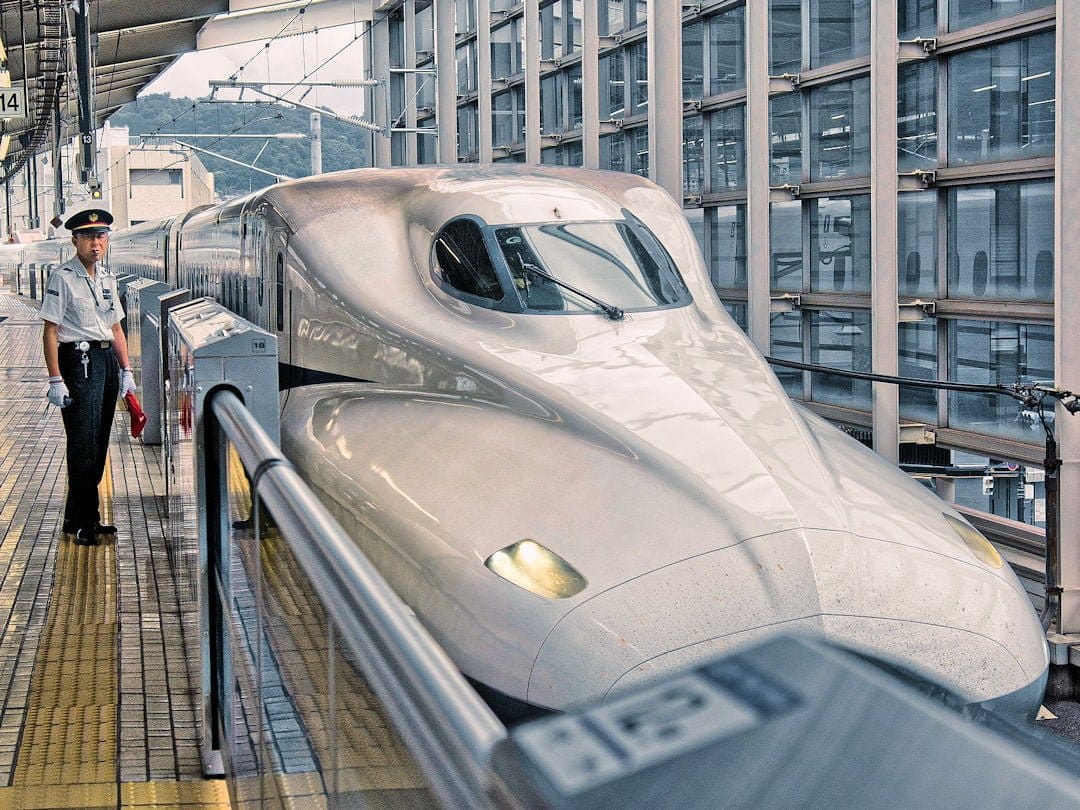
If the Japan-wide JR Rail Pass is of no use to you, one (or several) of the many Regional Rail Passes might be worthwhile. A big difference to the Japan -wide Rail Pass: you can buy these passes while already in Japan (though they are slightly more expensive than if you bought them from overseas). Worthwhile options to check out include:
- JR East: the JR Tokyo Wide Pass
- JR West: the Kintetsu Rail Pass, JR West Kansai Area Pass, JR West Kansai Wide Area Pass or the JR Kansai-Hiroshima Area Pass
- JR Central: the JR Takayama-Hokuriku Area Tourist Pass or JR Alpine-Takayama-Matsumoto Area Pass.
Even without any of the rail passes, there are still ways to save on train travel in Japan :
- Shinkansen – Buy a non-reserved seat ticket (where available): This also offers greater flexibility as you’re not bound to a specific train. Which carriages are non-reserved varies from train to train (most often it’s carriages 1-3 or 1-5). Arrive at the platform early to check out where the non-reserved carriages are located and position yourself/queue at the door marker of one of those carriages to increase your chances of getting a seat as you board.
- Alternatives – Opt for Limited Express trains: You may need to change trains along the way, but the trains in Japan are usually on time, and changing trains in Japan is not really stressful, especially if you travel light. Unless you’re travelling during rush hour, Limited Express trains are often less crowded than the Shinkansen, which also means you can save the seat reservation cost (where possible).
Extra tip: In many areas in Japan , you can use an IC card to tap on/off rather than having to purchase individual paper tickets for each journey. This saves time and makes train travel more convenient.
In Japan , you will come across the term IC card a lot (IC stands for Integrated Circuit ). IC cards are essentially plastic cards that can be topped up and the amount stored on the card is used for transportation - simply by tapping on/off at the card reader - and more and more at convenience stores and other places.
Each region issues their own version of the IC card, for example
- If you enter via Tokyo Narita or Haneda Airports, you would buy the Suica Card or PASMO card.
- If you enter via Osaka Kansai Airport, you will find the ICOCA card for sale.
Fortunately, 10 of the most common IC cards (including the two above) can be used across regions (and likely more will be added over time). Some regions (including Nagano and Okinawa prefectures) only allow their own IC card (at this stage) or cash.
Also, note:
- Cards (including any stored funds) will expire after 10 years of non-use, which means you can reuse the card if you return to Japan within that timeframe.
- You can return it (and get a refund of the money on the card plus the deposit you paid for the card itself) - as long as it's in the region you bought it.
- You can load the IC card onto your smartphone - via Apple Pay or Google Pay - but you won't be able to get a refund of your deposit or any funds stored when you leave the country.
Buses can be a good alternative to trains (especially for medium to long-distance travel and on competitive routes). Do note though that while train timetables are (mostly) reliable, buses can be stuck in traffic just like any other road transport (and delays of 30 minutes and more are not unusual).
One way to save on transport costs in Japan is by purchasing a Willer Express Bus Pass . This pass allows you to travel for 3, 5 or 7 days within a period specified by you.
- Advantages: The days of travel do not need to be consecutive, giving you flexibility in your itinerary. Willer Express has a number of night buses which can save on accommodation costs. Additionally, you can easily book your seats in advance online through the user-friendly Willer Express website.
- Disadvantages: The pass can only be used on Willer Express buses and only on the least comfortable 4 seats per row bus types.
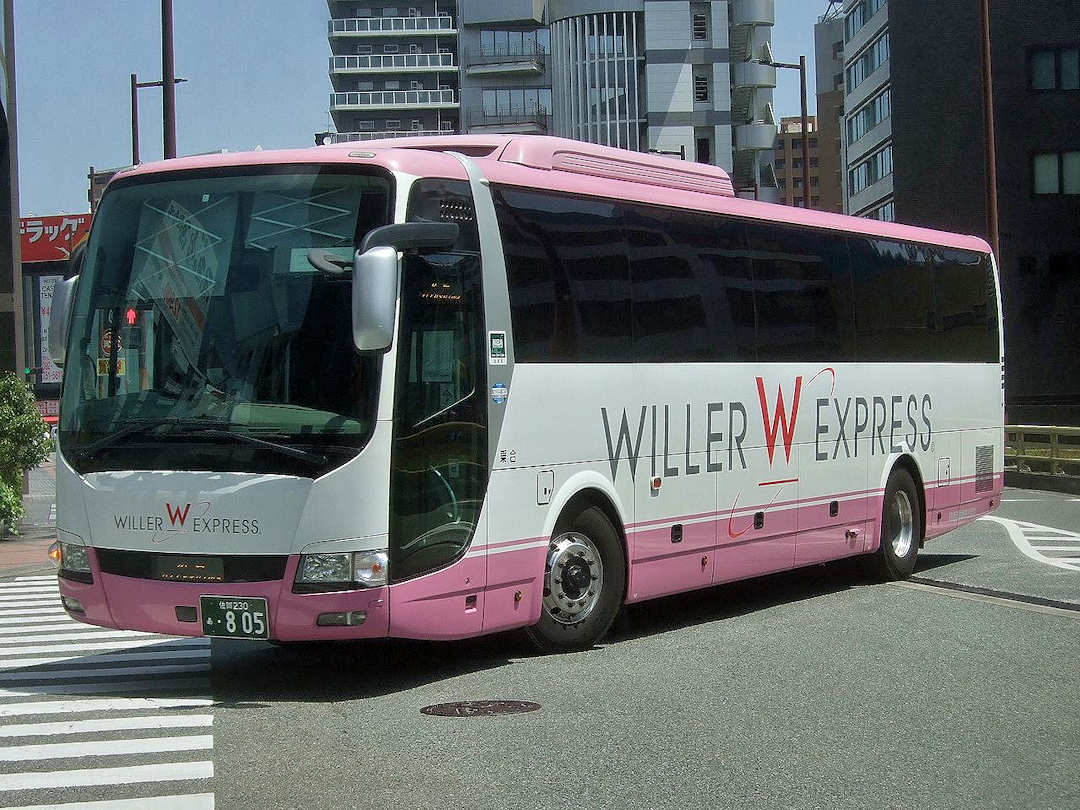
Even without a bus pass, you can save money when travelling by bus in Japan :
- Avoid backtracking and travel point to point instead – For example, stop in Shirakawa-go on the way from Takayama to Kanazawa (or vice versa) rather than visiting the UNESCO World Heritage site on a day trip – this also reduces carbon emissions.
- Make use of specials – Just ask at the local tourist office at your destination or check the websites of the bus companies operating at your destination, for example Alpico and Nohi Bus in the Japanese Alps. Do make sure though they are worthwhile by comparing individual fares (via Google Maps ) against the special fare.
We always buy travel insurance – because medical expenses overseas can add up quickly and because our carry-on backpacks are pretty much everything we own.
Whenever we buy travel insurance , we make sure we thoroughly read the fine print. It’s tedious, we know. But if you’re planning certain activities (for example, hiring a motorbike or hiking above 3000 metres), it’s crucial to know whether your insurance pays if the worst happens. Otherwise, you may have paid all that insurance premium and are still left to foot a (potentially) massive bill.
For this trip, we used Cover-More. For our three months in Japan , our joint Cover-More Travel Insurance Single Trip International Comprehensive+ Policy cost us AUD1,519/USD1,022 (or just under AUD9/USD6 per person per day) . Although we didn’t need to submit a claim and therefore don’t have first-hand experience of their claims process,we won’t be buying another policy from Cover-More again,

To our surprise, cash is still King in Japan , thus ATM withdrawals are a regular occurence. To avoid unnecessary ATM withdrawal fees we always research before our trips to figure out which overseas bank/s offer/s the best exchange rate and charge/s the lowest fees for ATM withdrawals.
In the case of Japan , we had done all our research. We knew our Bankwest Debit Card charged no foreign transaction fees, and that 7Bank ATMs charged no ATM withdrawal fees. What we didn’t know was that you had to press “Credit” when trying to withdraw with the debit card overseas (Bankwest only told us about that small fact when queried afterwards). After our debit card was declined multiple times, we ran out of time and had to use our credit card. While we had topped up the card with some money beforehand (to avoid nasty cash advance fees), the credit card provider still charged us AUD4 (or JPY382) for the ATM withdrawal. You live and learn.
Unless you’re planning to hike the Kumano Kodo or Nakasendo , you are likely not going to need luggage transfer service. We ended up using luggage transfer twice (both times with Yamato Transport):
- on our final day on the Kumano Kodo , paying JPY2,500 for the same-day transfer of one travel pack from Koguchi to Nachikatsuura; and
- during our Nakasendo hike , paying JPY1,620 for the standard transfer of one travel pack from Osaka to Matsumoto.
We also used luggage storage facilities on occasion to store our travel packs for a few hours or excess luggage during our Kumano Kodo hike for a whole week. Those storage costs added up to JPY3,640 in total ( an average of JPY607 per storage use ).
If you need to store excess baggage in Osaka, we recommend Daikoku Locker . Alternatively, you can try Radical Storage who have agencies all over Japan .
When you explore a country for three months, you will likely need a hair cut (in that country). I had mine at a barber in Osaka about half-way through our trip for JPY2,200 (a bit over USD16) .
We both also took the opportunity to get a 90 and 60 minute massage, respectively, just before the Nagano Marathon at Relaxation Salon Lovina [ Official website , Google Maps location ] for a total cost of JPY13,200 (or JPY6,600/around USD49 per massage ). It was well worth it, and we both would recommend it to anyone visiting Nagano.
Withdrawing cash overseas can be expensive but it doesn’t have to be. We can show you how to avoid unnecessary fees and make your travel budget stretch further.
How do you determine which card is best for your overseas trip? Using the right one can save bank fees and make your travel budget stretch further.
Ever been caught out by the bad FX rates and exorbitant commissions charged by FX bureaus? These tips allow you to minimise these charges in future . We also recommend XE Money Transfer to keep more of your money when you complete a transfer.
When visiting a Shinto shrine, it is traditional and appropriate to make a donation. It doesn’t have to be a lot, especially when you are throwing loose change into the large container before you bow your head and clap your hands. All our donations added up to JPY1,511 .
I wrote this Japan Travel Costs article based on our own unique experience. If you have been to Japan recently as well and you have something to add to the costs for exploring Japan , please feel free to contact us. If you liked my Japan Travel cost tips and found them helpful, I would appreciate it if you could share them with your friends and family via the Share buttons below. Even better, link to the page from your personal blog or social media platforms.

2 Week Japan Itinerary | With Budget and Top Tips
by Bex Band | Last modified on Mar 3, 2024 | Japan

I put together this comprehensive itinerary for 2 weeks in Japan based on my first time visiting the country (with a few tweaks based on my subsequent visits). I’ve shared what were the highlights and what you should leave out….specifically for someone visiting Japan for the first time. To make the planning as easy as possible for you, I’ve also included a budget breakdown and top tips for travelling in the country.
From cat cafes to cherry blossom picnics and robot shows to bowing deer….Japan is like nowhere else on the planet. It’s one of my favourite countries!
2 weeks isn’t a lot of time to explore Japan. Thankfully though, the efficient transport system makes it possible to fit in a lot during that time. Most visitors will have a budget to stick to as it is a pricey destination. So you’ll want to do a fair bit of planning to ensure make the most of your perfect Japan itinerary.
A few notes on my budget and travelling style
I’d describe my itinerary as energetic and diverse. I wanted to fit in as much of Japan as possible (while ensuring it wasn’t so fast you couldn’t get a feel for the places) with a good mix of city and towns, old and new.
I was travelling on a low-medium budget….with a splash of luxury. It’s really worth stretching the budget for a couple of top-end nights in Japan! If you are 2 people (as I was – travelling with my husband) often the price of a double in a simple hotel works out the same as 2 people in a hostel room.
A lot of the Ryokans (traditional Japanese Inns) also include meals so while they might initially seem expensive, once you’ve factored in the food, and the experience, they are actually quite reasonable.
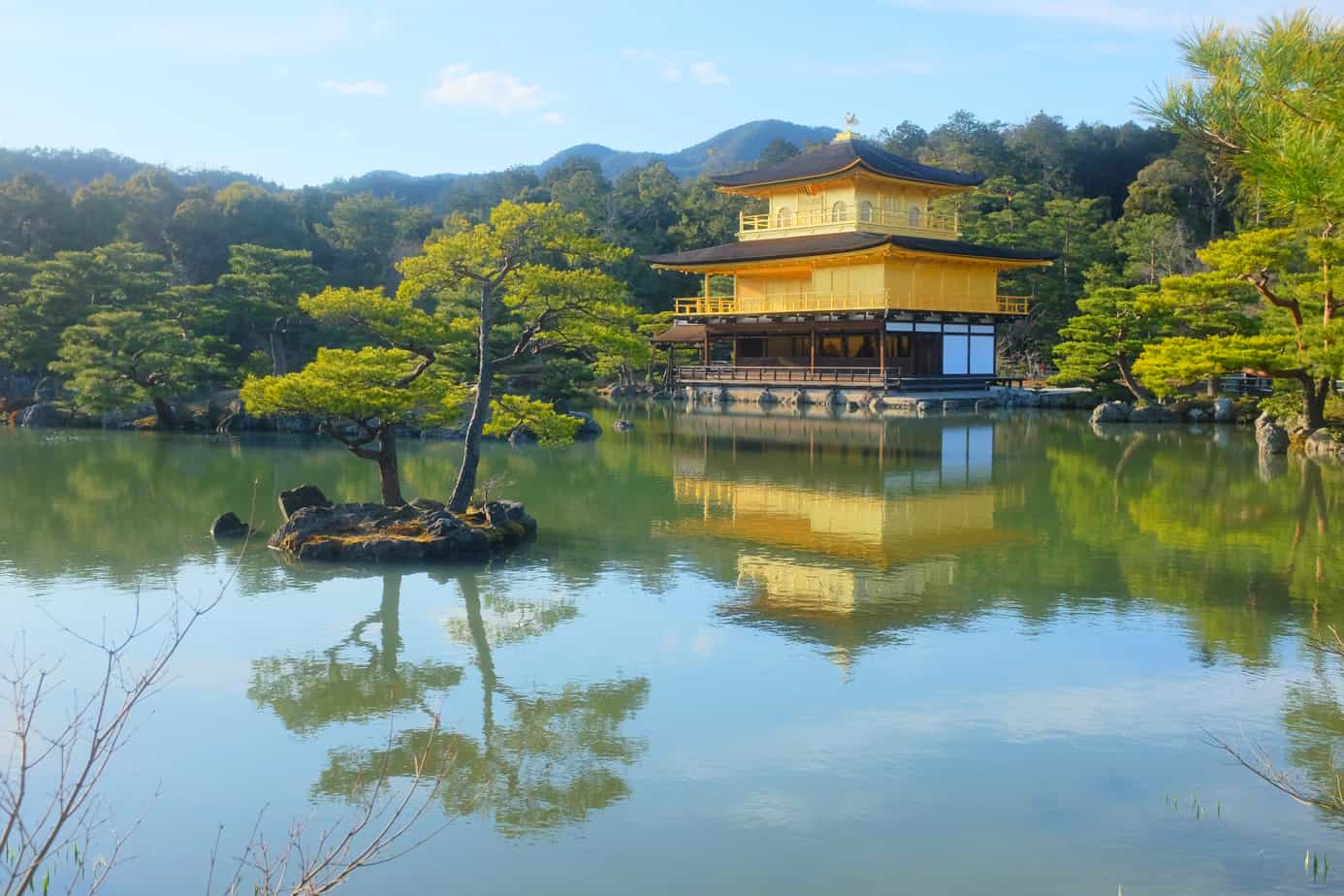
Before we start….
If you are new to this blog, I’m Bex Band – a full-time UK adventurer and founder of the women’s adventure community, Love Her Wild . I’m on a mission to make the travelling and going on adventures as easy as possible. You can read more about me here .
If you have any questions, please do use the comments box below. And for ongoing tips and inspiration, make sure you follow me on Facebook and Instagram.
2 week Japan itinerary
This is the exact itinerary of my 2 week Japan visit (note the changes I’d make below). Prices below from my Japan 2 week itinerary are all per night for 2 people sharing a double room (updated 2022). I made all the bookings online in advance.
- Tokyo – 2 nights
- Osaka – 2 nights
- Koya San – 1 night
- Miyajima – 1 night
- Kyoto – 3 nights
- Hakuba – 2 nights
- Yudanaka – 1 night
2 x nights TOKYO
What did we do: I used these 2 days to see the highlights of the city going to Shibuya park (and the crossing), taking a boat ride, seeing the markets of Asakusa and catching a show at the Robot Restaurant.
Where did we stay: Kiba Capsules Hotel – $45 A capsules hotel offering couples and single capsules. Such a great Japanese experience!!! Only worth staying here if you are a couple and looking to share as there are nicer capsule hotels available for singles. If you are looking for the best single room capsule you’ll want to check out Nine Hours .
If staying in a capsule hotel isn’t your thing I’d recommend the Knot Hotel Shinjuku ($75) which is in a great location and is a really nice hotel at a good price.
2 x nights OSAKA
What did we do: The first day I saw a sumo wrestling match and spent the evening in Dotonbori, a packed district full of restaurants, shops and lights. The second day I spent at Universal Studios.
Where did we stay: Drop Inn Osaka – $60 Basic private Ryokan rooms at an affordable price. It is a very modern hotel with a great location (walking distance from the station, which is handy) and helpful staff. I would definitely stay here again.
1 x night KOYA SAN
What did we do: This was my favourite place of the trip, don’t hesitate to visit. The journey initially seems complicated but was very easy and didn’t take long.
While there we saw the Okunoin Cemetery both in the day and at night (completely different experiences) and spent the rest of the time enjoying our temple lodgings with its traditional monk cuisine.
Where did we stay: Shukubo Fudoin – $240 (dinner & breakfast included) Incredible Temple lodgings with beautiful grounds, delicious vegan cuisine, a modern onsen and friendly monks. I loved staying here, it was a highlight of the trip. You can even join the monks in the morning to observe the morning prayer.
All the temples in the area are expensive but it is well worth the money. They also include an impressive breakfast and dinner experience.
1 x night MIYAJIMA
What did we do: We arrived on the island by early afternoon to get the cable car to the top of Mt Misen before watching the sunset behind the Torii gate.
Where did we stay: Coral Hotel – $65 (breakfast included) A simple western hotel right by the Miyajima ferry port, offering good views of the island. Basic but comfortable and cheap. We saved a lot of money by not staying on the island. The ferry is easy to catch and runs until quite late so I don’t think it’s worth spending the extra to be on Miyajima Island unless you really want to.
Another option would be to use Hiroshima as your base as you need to pass through here to get to Miyajima Island. You are then conveniently located for visiting the Atomic Bomb museum with more restaurant and nightlife options for the evenings. I’d suggest staying at Hatchobori Hiroshima ($120 breakfast included) for its convenient location.
3 x nights KYOTO
What did we do: On the way to Kyoto, we broke up the journey and stopped at Hiroshima to see the A-Bomb memorial and museum (taking about 3 hours total….it was enough time as it’s not an easy museum to take in).
We also stopped at Himeji to visit the castle (we had 3 hours in the castle). For both, you can use railway lockers at the train stations to store suitcases.
For our 3 nights in Kyoto, we hired an electric bike (about $15 a day) which provided a great way to see the never-ending temples and the palaces.
Seeing a Geisha dance was particularly memorable (only available during cherry blossom season. Tickets are hard to come by, but we used this website and asked them to organise the tickets for us). On our final morning in Kyoto, we visited NARA to see the giant Buddha and the bowing dear.
Where did we stay: Kyoto Tower Hotel – $110 A great value hotel for Kyoto which is an expensive city. The location near the station makes it a perfect base for exploring.
On a later trip to Kyoto, we stayed at Hotel tou nishinotoin kyoto ($70), a relatively new hotel that propped up in 2023. Its beautiful, comfy rooms and a beautiful hot bath.
If you want somewhere more budget then Piece Hostel ($50) is the place for you! There are also some really good Airbnb options in the area, which have the advantage of a kitchen, so you can save a lot of money on food as well.
2 x nights HAKUBA
What did we do: We arrived late in Hakuba, so we spent the evening enjoying the mountainous views and having numerous hot spring baths. The following day, I went to see the Olympic jump before having my first ever skiing lesson.
Where did we stay: Hakuba Onsen Ryokan Shiroumaso – $190 (breakfast and dinner) Just amazing! A really fantastic family-run Ryokan – don’t hesitate to stay here. This felt like traditional Japan with a lot of luxury. The food here was also great. I loved my stay here; definitely worth the price for a bit of luxury.
1 x night YUDANAKA
What did we do: We spent a night in Yudanaka, which is the closest town to see the famous Snow Monkeys. Check my review below, though, to hear my thoughts on the snow monkeys….you’ll probably want to skip this!
Where did we stay: Yudanaka Seifuso – $110 A very traditional family-run ryokan. The family don’t speak a word of English but are sweet and welcoming. The rooms were just ok. Being around the family was what made this stay nice.
What did we do: Returning to Tokyo, we spent the first day in Uneo Park, experiencing the cherry blossom in full bloom and all the festivities. The final day was spent at DisneySea – a lot of fun!
Where did we stay: Tokyo Hilton Odaiba – $220 Top, luxurious hotel – we like to finish our holidays in style. A comfortable location for the bay, close to Disney, offering a free shuttle. Well worth splashing out on. With a rooftop infinity pool (AMAZING), phenomenal service and the biggest breakfast layout I’ve seen.
What would I change?
We managed to fit in a lot more than I thought was possible because trains are just so quick and easy. They are also very comfortable and clean so I didn’t feel tired from the long journeys.
The train station lockers are great for fitting in quick stops to see sights along the way without needing to stay overnight.
This 2 week Japan itinerary was busy but I felt like it was a good pace. The hot onsen most evenings meant that I felt like I got lots of relaxation time even though most days we were on the move and seeing lots.
Koya San, although a bit tricky to get to, really is a definite. Miyajima makes a great day out, but I wouldn’t spend any more than a day there.
Hakuba also turned out to be really fun, and I loved skiing, seeing the mountains and also experiencing a different side to Japan. If you weren’t keen on skiing, though, I would skip Hakuba in favour of Kanazawa.
The biggest disappointment was Yudanaka . It was expensive to get to (it wasn’t covered by the JR Pass) and took a long time. The monkeys themselves are in a grotty area, and there really is nothing else to do in the area. They throw rice into the pools to make the monkeys go in them as it wasn’t that cold when I was there. Don’t go – it’s not worth it!

If I dropped Yudanaka and Hakuba from the 2 week Japan Itinerary, I would have spent the extra days in Kanazawa visiting the famous garden and art museum with an overnight visit to Shirakawa-go and Gokayama on the way back to Toyko (see my suggested alternative Japan 2 week itinerary below).
Some people suggest spending more time in Tokyo and Kyoto. For me, 3 days exploring both was enough time. Although there was more I wanted to see in Kyoto, it is also very touristy, so I was happy to have a change after a few days.
Alternative Japan 2-week itinerary
With all that in mind – if you weren’t desperate to see the snow monkeys or try your hand skiing, then this could be an alternative itinerary:
- Koy San – 1 night
- Miyajima – 1 night (staying in Hiroshima and doing Miyajima as a day trip)
- Kyoto – 3 nights (day trip to Nara)
- Kanazawa – 2 nights
- Shirakawa-go and Gokayama – 1 night
Travel insurance for Japan
On my most recent journey, my luggage was misplaced during the connecting flight to Tokyo, resulting in me spending the first five days of my trip without my checked bag. Fortunately, the airport located my bag and sent it to my hotel. This experience underscores the crucial importance of travel insurance. It’s advisable to purchase it as soon as you book your flights.
World Nomads Travel Insurance
It’s important that you have travel insurance for your travels. World Nomads are a travel insurer that I’ve used multiple times before for my adventures. World Nomads covers more than 150 adventure sports and activities and worldwide coverage.
I’m part of World Nomads’ affiliate program (which means I get a small recommenders fee if you choose to use them, at no extra cost to you). Get a quote here .
When is the best time to visit Japan?
The most obvious answer is Spring to see the cherry blossom. Although it was busy, it was mostly with Japanese tourists who were quiet and considerate, so the crowds didn’t feel too much.
It is well worth going for the blossom as it makes the whole country look so pretty and there is a real sense of excitement and celebration. It will also give you an opportunity to see the Geisha Spring Dance. Weatherwise it was sunny and pleasant but still a bit cold. Most days I was wearing my coat. It didn’t rain once while we were there.
Japan has very defined seasons. Summer can get very hot and uncomfortable and winter can be bitterly cold, even snowing. For this reason, Autumn is a more comfortable time to travel if you don’t want to go in spring. The Autumn colours across the country are also very pretty!
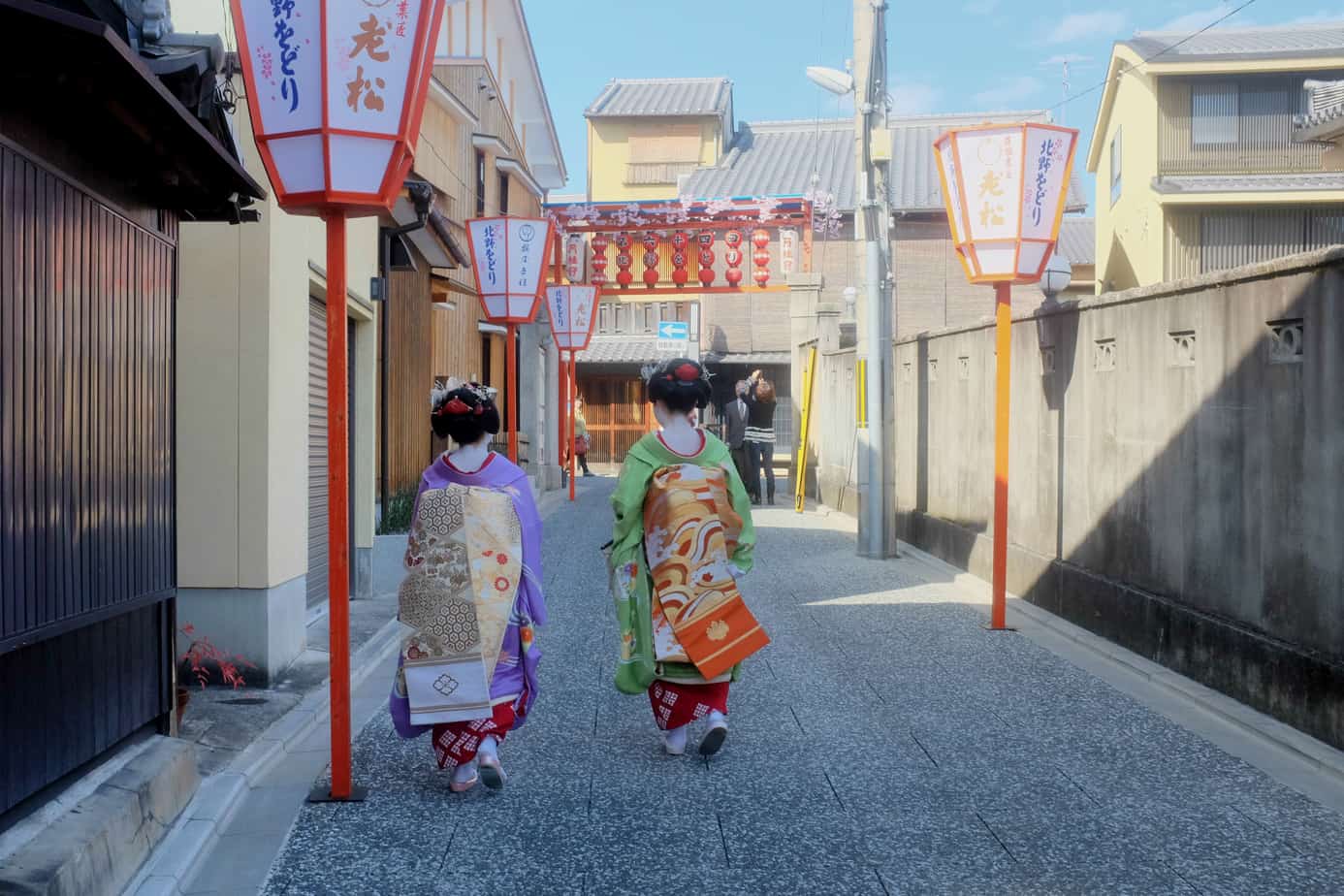
Japan Rail Pass – a must!!
The trains in Japan are very expensive. But if you are a visiting tourist, you are eligible for a Japan Rail Pass. Getting this card is a no-brainer. It will give you unlimited travel across most of Japan’s rail network, allowing you free access to visit all the major places – Tokyo, Kyoto, Hiroshima, Kanazawa, Osaka, etc, etc.
The cost for the pass is:
7 Days – $279 14 Days – $445 21 Days – $570
To get a railcard, just follow this link and purchase the length of time that you want. Do this in advance of your holiday. When you arrive in Japan, head to the JRP help desk (you’ll find them in airports and train stations) and swap your receipt for your bass booklet. There can sometimes be a bit of a queue so factor this in.
I’d suggest reading this helpful guide to using the pass, which says where you can exchange your pass, where it is valid and how to reserve your seats. It is helpful to reserve seats if you can (it’s easy to do) as some of the journeys we took were busy, and we would have been standing otherwise.
How much does 2 weeks in Japan cost?
The budget below is based per person for the entire 2 week Japan Itinerary laid out above.
The accommodation, which was double rooms shared between 2, has been split in half.
Our accommodation was a mix of budget stays with a few nights of luxury. We didn’t hold back on tickets or events…they’re just too good to miss. Food-wise I was more on the lower end budget (especially as I am a vegetarian) – eating from bakeries, supermarkets, and street food to save costs – with a few exceptions on expensive set menu meals.
Japan being expensive is a bit of a misconception!
I was really surprised by how cheap the holiday worked out to be. The Japan Rail Pass meant that we were able to travel a huge amount at a set price (we definitely got our money’s worth!) and most of the attractions we visited (like temples and museums) only cost a couple of pounds to go in or were free.
It’s not what you would call a cheap destination but it also wasn’t crazy expensive. I found it cheaper than London prices.
Breakdown of budget for 2 weeks in Japan:
Flights (from London to Tokyo return, via Warsaw on using Lot airlines)- $830 Accommodation – $870 Transport (14-day Japan Rail pass) – $360 Food (Daily cost averaged $30, which in most cases was street food lunch/snacks and a low-average priced dinner) – $420 Sumo Wrestling tickets – $80 Geisha Dance Tickets – $60 Universal Studio Tickets (with express 7 pass) – $80 DisneySea Ticket – $60 Skiing (equipment hire, lift pass and a private 2-hour lesson) – $150 Daily costs (averaging $20 a day for entry to temples, drinks, and small souvenirs) – $280
TOTAL – $3190 (roughly £2,553)
Top tips for visiting Japan
…….Buying the tickets in advance is essential as everything sells out – but problematic because the sites are all in Japanese. We used Buy Sumo Tickets who were brilliant. Not only did they get us sumo tickets but they also brought our Geisha show and Universal Studio tickets for just a small fee.
………I struggled with the food, especially as I am a vegetarian and wish I had brought some snack bars with me to save me the hassle of finding something for the journeys. The supermarkets are bizarre and I often had no idea what I was buying!
……….vegetarian? It’s not an easy country to be veggie in. Check out my Guide to being a vegetarian in Japan for some top tips.
…….If you eat fish, bento boxes are great. These are packed lunches that you can buy for journeys or picnics. You can get them from stall holders and shops in rail stations and shopping malls.
……Tipping is not the done thing in Japan and is even considered rude.
…..Ryokan’s are traditional Japanese inns. You should try to stay in at least one for the experience. They are often cheaper than in Western hotels. I can also recommend checking out Airbnb, especially for longer stays, if you are trying to save money.
……If you stay in a ryokan, you will need to take your shoes off before entering either the building or the room. There will be slippers available for you to use and somewhere to store your shoes.
……I was surprised that barely anyone spoke English. People are incredibly kind and helpful, though, so I never got stuck. If there is something you need to communicate (like eating preferences), get someone with good English to write it down in Japanese on a piece of paper that you can show people.
……Unless you are happy being naked in front of other people, you will need to book hotels with private onsen which are considerably more expensive. The Japanese are incredibly polite and discrete so public bathing isn’t daunting. Learn the etiquette before you go through it.
…….There are lots of new customs to get used to in Japan but don’t worry about offending people. The Japanese are very forgiving and understanding!
……..I’d recommend reading these books before heading to Japan:
- Lonely Planet Japan – offers the most comprehensive guide to travelling around Japan
- Memoirs of a Geisha – the streets of Kyoto come alive in this gripping story told from the perspective of a Geisha living in Japan
- Shogun – another gripping international bestseller set in Japan!
- Death Note – anime is everywhere in Japan and is read by people of all ages. Don’t knock it till you’ve tried it! The Death Note series is a really good anime book to start with.
You can stay updated with my adventures and advice on Facebook and Instagram . Or you can subscribe to my YouTube channel . I give all my advice for free on my website. If you want to say thanks, you can buy me a coffee !
Good luck with your Japan travels……please use the comments below to ask questions or to let me know how you get on 🙂

- Follow Follow
24 Comments
Great post!
Thanks Explore 🙂
Really useful post, thank you. Your travelling style is very much like ours, a mix of local and luxury.
Thank you Carole…I’m glad it was helpful! I think a mix of local and luxury makes for the perfect hol. Enjoy Japan!! 🙂
I really liked the info here thanks. I am thinking of visiting Japan next year alone but I’m a fit 72 and wondered if you, as an experienced traveller to Japan, could advise if would be okay with the travelling and also the hostel accommodation. I would appreciate any comments you may have thanks Tess
Thank you Tess. Absolutely….I can’t see any reason why you can’t travel Japan and use the hostel accommodation. Japan is very clean and comfortable no matter what budget level you use! Most of the travellers I met there were a little older. Good luck with your trip. Japan is a brilliant country! 🙂
Thanks Bex. I love traveling alone as I find I meet more people that way and get a better insight into the culture and people. When I go I’ll let you know how I get on thanks again
I think so too! Do let me know how you get on 🙂
Hello Bex, as I am planning a trip to Japan, I made a search and your site popped up. Not only did I find this post particularly useful, but I found your whole site very enjoyable. You have a very nice writing style, keep it up! Cheers Ged
Thank you so much Ged!! Your kind words made my day 🙂
Good blog thanks, very useful tips. Had a couple of gripes about grammar but hey I am the grammar police! Thanks for the insights. Not sure about if it’s worth buying a JR pass if you don’t want to run from one place to another, still weighing that up. Hoping to go to Japan in the fall.
I’m dyslexic so there’s not much I can do about that I’m afraid! It’s probably worth calculating the cost of individual journeys you may take and then comparing it to the railcard. Usually the railcard works out cheaper even if only for a couple of day trips.
Hey, thanks for this post! Maybe I missed it but I wasn’t sure what currency your budget was? Is it USD?
Budget is in USD 🙂
Very informative! Thanks!
Thank you Joanne. Really happy it was of help! 🙂
Hi. We’re planning a trip to Japan for my birthday. This is really helpful. Thank you. Quick question though… is the $2300 per person or for both of you already? Thanks in advance for your reply. ^^
Glad it is helpful! It was $2300 for each of us….so $4600 in total for 2 🙂
Great post! Thanks for sharing the knowledge and keep up the good work.
Thank you Brian!
I’ve been looking around at a bunch of different websites and they say around $4,000 per person, but you say about $2,300 per person. Would it be a better trip if a saved more than what you had?
It’s hard to say as traveling is always very personal. We did a mix of cheap places and then splashed out in some luxury places. So it would depend on your spending habits. I didn’t feel like I needed to spend any more money though.
I’m planning my first trip to Japan in November, and I think I will follow a similar itinerary to the one you propose (skipping the monkeys!) so I was delighted to find your very informative post 🙂 I have one question: did you go straight from Koy San to Miyajima, or did you stop in Osaka or Hiroshima in between? Many thanks!
We stopped in Hiroshima to see the museum then stayed at a hotel by the ferry port to Miyajima. You can get from Koya San to the island in a day but accomodation on Miyajima is very expensive so it’s cheaper to stay in Hiroshima.
Submit a Comment Cancel reply
Your email address will not be published. Required fields are marked *
Submit Comment
Related Posts
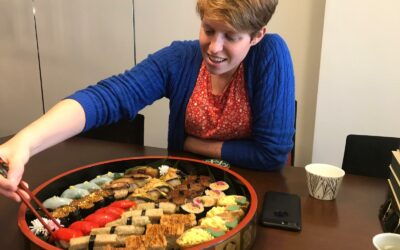
Vegan & vegetarian in Japan | Ultimate Guide (2024)
Being a vegan or vegetarian in Japan is definitely not easy at times. I knew that fish featured highly in Japanese cusine, but it amazed me just how...
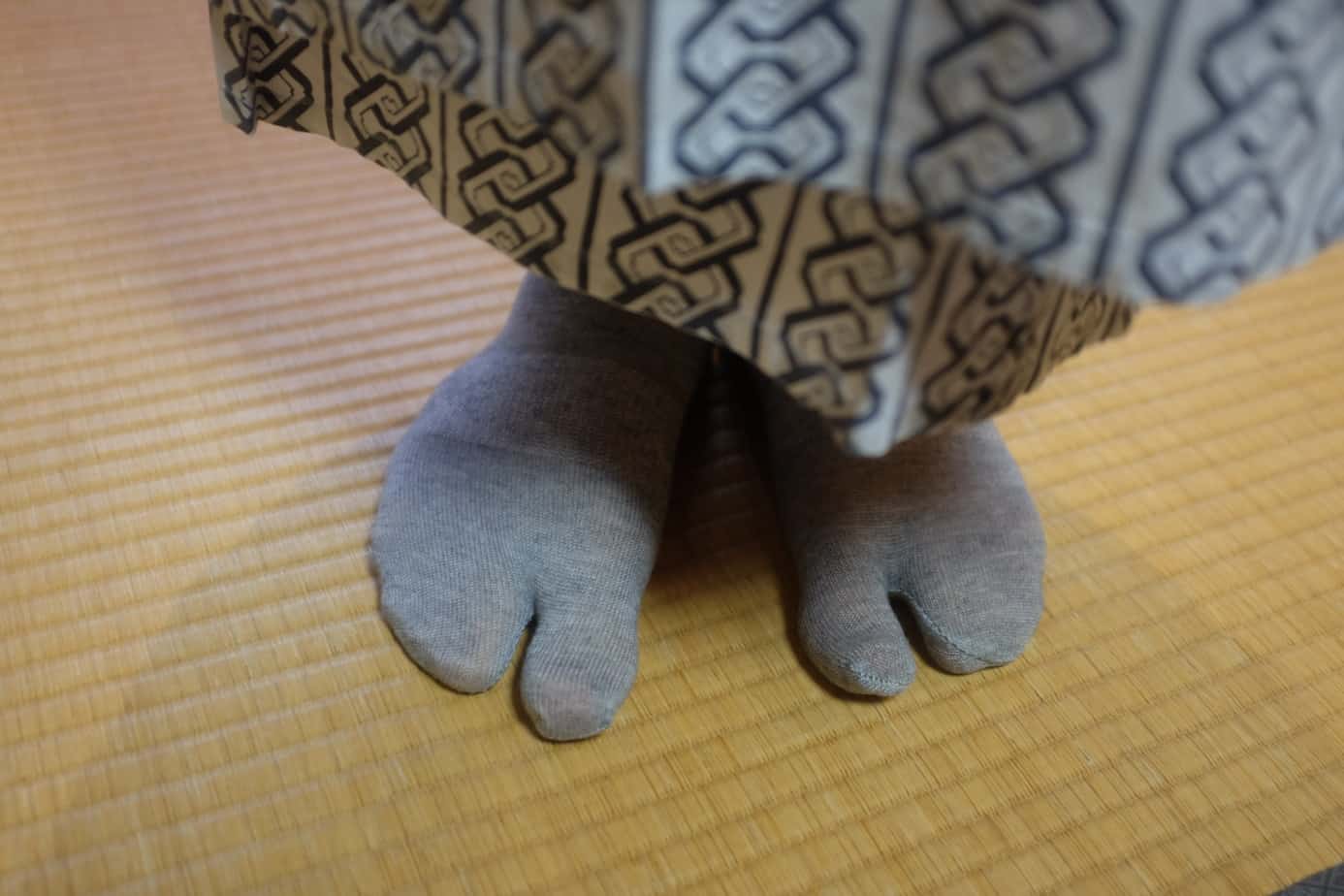
Japan: Hakuba, the Snow Monkeys and Tokyo
Catch up with the final travel Journal from our 2 weeks trip to Japan (for a full breakdown of our itinerary and budget, check out Japan itinerary 2...
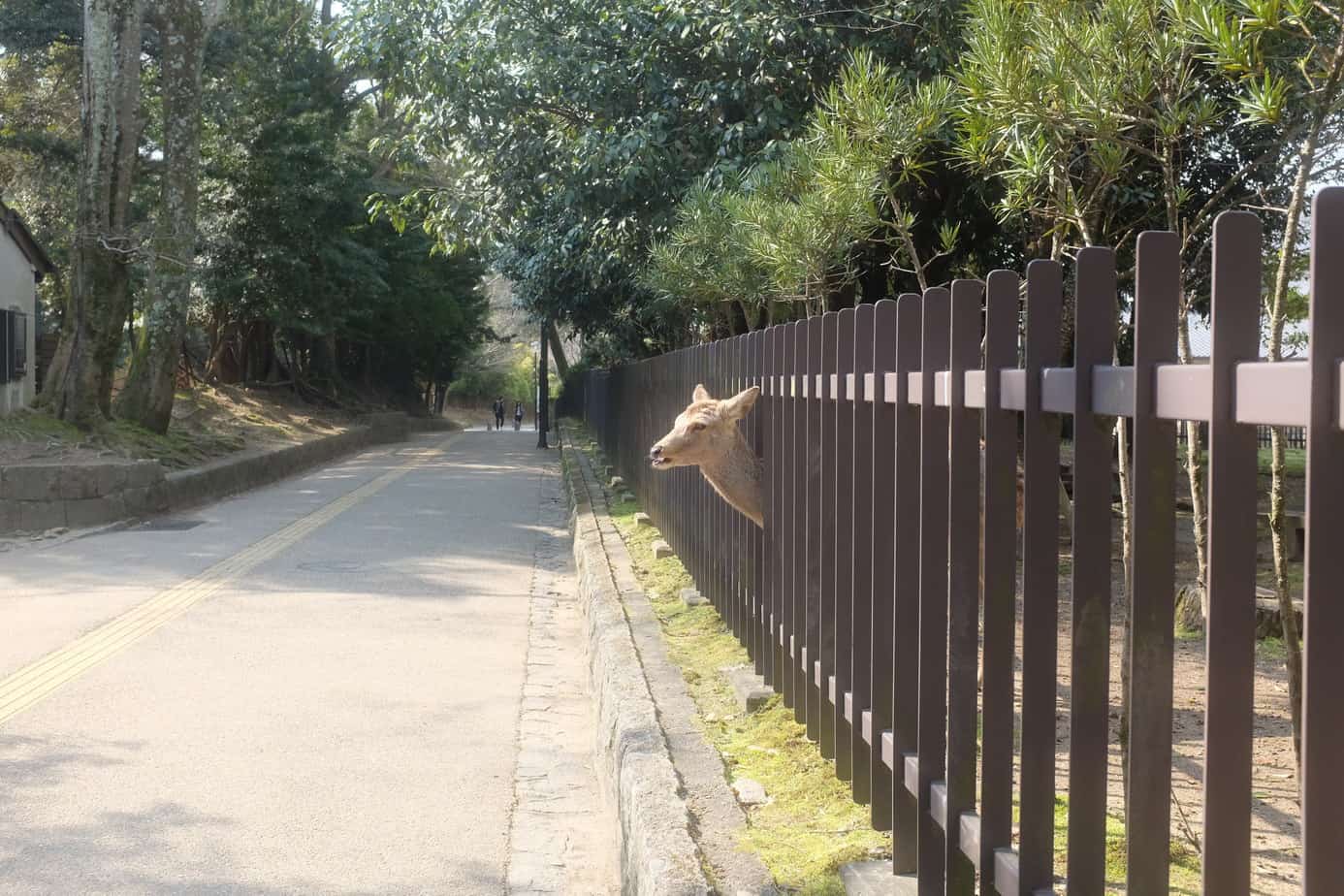
Japan: Miyajima, Hiroshima and Kyoto
This is my second journal from my 2-week visit to Japan. For a full breakdown of our itinerary and budget, check out Japan itinerary 2 weeks. We had...

Adventures, updates and tips to your inbox!
Join over 3,500+ others and subscribe to my newsletter., you have successfully subscribed.
By subscribing, you consent to the processing of your personal data in according with our privacy policy - link in the footer.

Travel Budget
This page is meant to give you a rough idea of the cost of individual travel in Japan by introducing some sample budgets. Note that accommodation rates can increase during peak seasons in popular destinations which is not reflected by the numbers below. View also our pages about budget travel , package tours and suggested itineraries to see the sample budgets applied to specific itineraries.
Sample daily budgets
The numbers below do not include the cost for transportation and heightened accommodation rates during peak seasons. Click here for the current yen exchange rates.
Accommodation
Below are typical rates for accommodation outside the peak seasons . Rates can increase considerably during the peak seasons! Check our accommodation page for more information on different accommodation types and corresponding price ranges.
Low budget: 3,000 - 5,000 yen per night and person Dormitories and hostels , found in most cities of Japan, typically charge below 5000 yen per night and person. Furthermore, booking services like Hostelworld offer great deals.
Medium budget: 6,000 - 12,000 yen per single room and night 8,000 - 15,000 yen per double room and night At this level, you will find rooms in business hotels , minshuku and inexpensive, no-frills ryokan . Some tour packages (for individual travelers) include accommodation at quality Western-style hotels at this price level.
High budget: over 12,000 yen per single room and night over 15,000 yen per double room and night Starting around 12,000 yen per person, you can get rooms in better business hotels and inexpensive Western-style hotels. A stay at a ryokan with two meals included typically costs between 15,000 and 30,000 yen per person and night. For a room in a 4 or 5 star Western-style hotel, you typically pay from 25,000 to 50,000 yen per room and night.
Low budget: 500 yen per day At this level, you will have to live from convenience store food (bread, rice balls, etc.) and fast food restaurants like McDonald's or Mister Donut which offer inexpensive breakfasts.
Medium budget: 500 - 1000 yen per day Many coffee shops and some restaurants in shopping areas and around train stations offer breakfast sets for around 500 to 1000 yen.
High budget: above 1000 yen per day Hotel breakfasts and breakfast buffets will usually cost you more than 1000 yen. Breakfast buffets in first-class hotels typically cost at least 3000 yen.
Low budget: 500 - 800 yen per day Inexpensive lunch boxes are available in convenience stores and stands in railway stations and business districts. Various fast food restaurants , specializing in noodles, curry, domburi or hamburger, also offer relatively filling meals for 800 yen or less.
Medium budget: 800 - 1500 yen per day At this level you will have an even larger range of inexpensive restaurants such as the above mentioned fast food places, plus restaurants which offer lunch set specials for around 1000 yen.
High budget: above 1500 yen per day A lunch at better restaurants costs typically between 1500 and 3000 yen.
Low budget: 500 - 1000 yen per day Convenience stores sell various, inexpensive ready-to-eat meals. Other options are again cheap fast food restaurants .
Medium budget: 1000 - 2500 yen per day Conventional restaurants are generally more expensive in the evening than during lunch time, as there are no lunch specials. At this level, you will be able to enjoy a nice dinner at a wide range of fast food and conventional restaurants, including the restaurants found in department stores where meals typically cost between 1000 and 2500 yen, not including alcoholic drinks.
High budget: above 2500 yen per day With 3000 yen per person you will be able to have a good dinner at a wide range of restaurants . Calculate 5000 yen upwards per person for a dinner at upper class restaurants specializing in sushi , French cuisine, sukiyaki, kaiseki ryori, steaks, etc.
Sightseeing
Low budget: 0 - 500 yen per day Japan offers many free attractions. Most shrines and some temples do not charge admission fees. A few museums charge no admission on one day of the week or month.
Medium budget: 500 - 2000 yen per day Admission to famous temples costs between 300 and 1000 yen. Most museums and castles charge about 500-1500 yen per person.
High budget: above 2000 yen per day Some museums and attractions (usually outstanding ones or tourist traps) charge between 1,500 and 3,000 yen per person. Admission to large theme parks typically cost around 5,000-10,000 yen per day.
Transportation
Low budget: Highway buses , the Japan Bus Pass and the Seishun 18 Kippu (only available during certain times of the year) are among the cheapest ways of traveling in Japan.
All budgets: Travelers of all budgets should consider purchasing a rail pass . Over long distances, domestic flights are often more economical, if you take advantage of the various discount offers .
Questions? Ask in our forum .

How to plan a free and easy trip to Japan on a budget

After closing to the world since the start of Covid in early 2020, Japan has reopened to all travelers on 11 October 2022. Finally, you can visit Japan without booking through travel agencies or worrying about daily arrival limits, quarantines, Covid tests (if you are fully vaccinated).
Are you as excited as me? Yes! The freedom to rediscover Japan! I miss Japan and everything about Japan. I have received many questions about how to plan a free and easy trip to Japan. To celebrate Japan’s reopening, I have put together this step by step guide with money-saving travel hacks so you can see the best of Japan on a budget.
Table of Contents
Where to visit in Japan?
The first step in your Japan trip planning process is the most difficult step as you have to decide where to visit and plan your itinerary.
Japan is home to 47 prefectures that are spread over 8 main regions: Hokkaido , Tohoku , Kanto (Tokyo) , Chubu , Kinki/Kansai (Kyoto and Osaka) Chugoku , Shikoku , Kyushu ( Okinawa ).

Most of the links I have provided in this guide are from my favorite website Japan-guide.com . I have been using this website for years as they provide concise and informative travel content. Other useful websites include the JAPAN by Japan website by Japan National Tourism Organization (JNTO) and Cheesie’s Cheeserland blog .
Thanks to the Japan Exchange and Teaching (JET) program , I spent 2 life-changing years in Okinawa and managed to explore Japan and visit 31 prefectures. I am more familiar with Okinawa and the Kyushu region and I usually recommend them to travelers who have been to the “Japan’s trinity of tourist attractions” in Tokyo, Kyoto, and Osaka and are looking for new places in Japan to visit.
Inspired by Rick Steves’ Europe travel guides and the super useful overview he uses to recommend must-see sights in Europe, I have adapted his method for Japan to recommend top destinations for first-time and repeated travelers.
I used to pack many places during my trip. But these days, I prefer to spend more days to explore one place and not do a “fast and furious” trip to tick off bucket list attractions. Here are my recommendations and travel tips! Well, this list may change as I see more of Japan.
One week in Japan (for first-time travellers)
- Tokyo (3 days)
- Kyoto (3 days)
- Osaka (1 day)
- If you have more days, add day trips to Yokohama, Hakone (to view Mount Fuji), and even Disneyland from Tokyo. And add day trips to Nara and Kobe in Kansai (Kyoto and Osaka are in this region).
One week in Japan (for repeated travellers)
- Sapporo, Otaru, Asahikawa (for the amazing Asahiyama Zoo if you are traveling in winter and with children), ski resorts like Niseko or Rusutsu, Furano and Biel.
- If you have more than one week, add Abashiri for the spectacular drift ice in winter, Kushiro and Shiretoko for hiking, and Hakodate (the most northern part of Hokkaido).
- Highlights: Fukuoka, Nagasaki, Yufuin, and Beppu.
- If you have more than 1 week, add Kumamoto (Mount Aso), Kagoshima (4-5 days at Yakushima for the best hiking experience, Sakurajima, and sand onsen at Ibusuki), Miyazaki for the Takachiko waterfalls, Amakusa islands, Saga (Ureshino onsen), and Kitakyushu.
- Road trip all over Okinawa mainland and trips to outer islands like the Kerama islands.
- If you have more than 1 week, add far-flung islands like Miyako and Ishigaki to your summer adventures.
- Check out my guides to Okinawa: Top 15 things to do in Okinawa , islands to visit from Naha , and the ultimate guide to everything about Okinawa .
- Setouchi islands (see my guide to Naoshima ), Tokushima (in August for the famous Awa Odori festival), Ehime (Matsuyama, Dogo Onsen), and Kochi (Iya Valley).
- If you have more than 1 week, try the scenic cycling route Shimanami Kaido from Hiroshima (Chugoku) to Imabari (Shikoku).
- Highlights: Hiroshima, Kinosai Onsen, and Tottori.
- If you have more than 1 week, add Shimane (famous Izumo Grand Shrine), Matsue, Yamaguchi, and Okayama.
- Highlights: Kanazawa (a “quieter Kyoto”) and Gifu (Shirakawago, Takayama).
- If you have more than 1 week, add Nagoya, Fukui, Mie (Izu Peninsula), and Matsumoto.
- If you are travelling in winter, amazing ski slopes in Nagano/Hakuba area.
- Wakayama (Mount Koya, temple stays, and hiking), Himeji, and Lake Biwa.
When to visit Japan?

Japan welcomes travelers all year round! The changing seasons make travel around Japan very interesting as you can enjoy a variety of sights and experiences in spring, summer, autumn, and winter.
Here’s a summary of what you can enjoy when you visit Japan in different seasons. If you have the flexibility to choose when to visit Japan, you can visit during popular flowering and festival periods.
Japan in Spring (March to May)
- Plum blossom season marks the start of spring! Most people do not know about the beautiful plum trees bloom and plum festivals that take place in from February to March.
- Cherry blossom season starts from end March to April. The flowers start blooming from the south with the dark pink cherry blossoms in Okinawa appearing in early February to the flowers blooming in Hokkaido in April
- Popular spots in Tokyo and Kyoto are packed. Head to other regions further away from the big cities like Tohoku, Shikoku, and Kyushu for spectacular sakura viewing spots without the crowds.
- Check out the super useful Japan-guide.com’s Cherry Blossom Forecast and Reports .
- The Japanese have very accurate Sakura Navi (桜ナビ) so you can search for the Japanese sites like this (using Google Translate) and get accurate and timely updates about the progress of the flowers blooming (like 50% bloom or full bloom (sakura mankaiさくら満開).
- Avoid the Golden Week (a period of 4 national holidays in Japan when domestic travel is at the peak) from end of April to the first week of May.
- Try to avoid the rainy season (tsuyu 梅雨) starts in Okinawa in early/mid May and lasts for a month till early/mid June.
Japan in Summer (June to August)
- In early summer, most parts of Japan have the rainy season from early June to early/mid July. While it may be inconvenient to travel during the rainy season, you can enjoy lush vegetation and the blooming season of hydrangeas .
- July and August are busy periods for summer celebrations with local festivals and fireworks. The Japanese festivals are out of this world so make sure you check the festival calendar and participate in some festivals!
- July is the famous flower viewing season in Hokkaido.
- Mount Fuji is open for climbing during July and August.
- The hot weather and clear blue skies perfect for beaches and island hopping. Summer destinations like Okinawa are packed.
- Take note that the August to September is the peak season for typhoons (sometimes the typhoons can also hit anytime from May to October). Watch out for the weather reports.
- Travel activity is high in August due to summer school holidays.
Japan in Autumn (September to November)
- September is still considered summer in some prefectures in the south as the weather is warm for sea activities and island-hopping in Okinawa, Kyushu, and Shikoku areas.
- Autumn starts in mid/late September in the north of Japan where the leaves start to turn colors in Hokkaido. November is the best period to see autumn colours. Check out the autumn leaf viewing spots here .
Japan in Winter (December to February)
- December heralds the start of winter and winter/Christmas illuminations decorate most cities. There are many Christmas festivals and markets so do some research about their locations and check them out.
- From mid December, the Japanese start to prepare to celebrate the Japanese New Year (oshogatsuお正月). Join the festivities by watching the first sunrise of the year (hatsuhinode 初日の出) and visiting the first shrine or temple (hatsumode 初詣), on the 1st of January (or on New Year’s Eve).
- Some shops and attractions close for oshogatsu (from end December to early January). Find out more about visiting Japan during New Year here .
- Ski season starts from December and January, and February is the best time for winter sports and viewing winter sceneries.
- February is the closest month so fantastical winter festivals are in action.
Check out Japan-guide.com ’s informative guide about when to visit Japan with tips about the weather, recommended activities, and more.
How to get to Ja pan?

Once you have selected the places/prefectures and confirmed on your travel dates, it’s time to book your air tickets to Japan.
Step 1 : Use Skyscanner to have a quick overview of the types of airlines flying to your destinations and the range of air fares.
Step 2: After you have selected your desired flight, book your air tickets directly on the airline website.
Airports in Japan
To Tokyo : Narita Airport (NRT) (handles most of the international flights), Haneda Airport (HND) (handles mostly domestic flights and increasing number of international flights)
To Kyoto/Osaka : Kansai International Airport (KIX)
To Hokkaido T: New Chitose Airport (CTS)
To Kyushu : Fukuoka Airport (FUK)
To Okinawa : Naha Airport (OKA). Check out this guide on how to get to Okinawa .
Here are some general tips based on my experiences traveling to Japan from Singapore and my budget saving strategies. Remember to always book your air tickets in advance (as early as you can to secure good fares)!
Japan Airlines (JAL) and All Nippon Airlines (ANA ): These two national air carriers are great but I find their air fares quite high. I only flew JAL to Japan from Singapore when my air tickets were paid for (thanks to the JET program and travel prizes).
Singapore Airlines (SIA ): It’s always nice to fly SIA but air tickets can be more expensive. One good to way to fly SIA is to redeem flights using KrisFlyer miles. My best flight was redeemed with 48,000 miles for return flight to Narita Airport-Changi Airport. This was thanks to my Citibank PremierMiles card.
The credit cards I recommend for earning miles for flight redemption:
- Citi PremierMiles Credit Card : Use my code ( s1152801010N) to get up to 30,000 Citi Miles (which can be easily converted to KrisFlyer miles).
- Citi Rewards Credit Card: Use my code ( s1152801010N) to get up to 30,000 Citi Thank You Points (which can be easily converted to KrisFlyer miles).
- American Express Singapore Airlines KrisFlyer Credit Card: Use my link and earn 5,000 KrisFlyer miles with minimum spending and 10,000 miles if you are new to AMEX.
Delta Air Lines : I flew once to Narita Airport from Singapore during the Lunar New Year period. Delta offered the cheapest return direct flights and the experience was decent.
Low-cost carriers like Jetstar and Scoot : They offer flights that are value for money and the flight time to Japan from Singapore is not too long for no-frills flights. Jetstar used to have direct flights to Okinawa, Naha Airport (it takes just 5 hours to reach the island paradise) and they may resume the flights soon. Jetstar is running a special “Hello Tokyo Sale” now till 14 October 2022! Enjoy cheap flights from Singapore to Tokyo (via Manila) from $271 SGD!
Domestic Airlines
There are many airlines running domestic flights all over Japan. Sometimes taking domestic flights to get from one prefecture to another is faster and cheaper than taking train and other modes of transportation.
Japan Airlines (JAL) and All Nippon Airlines (ANA ): They offer many flight routes and options. The air tickets can cost as low as budget airlines if you buy in advance. Based on my experiences, ANA domestic fares seem cheaper than JAL.
Skyscanner may not show flights by small budget airlines so you can search for flights and fares on their websites. Some common budget airlines include:
- Jetstar Japan
- Skymark Airlines
- Peach Aviation
Make sure to check the luggage allowance and any hidden fees. If you have big luggage, you have to top up the fares for the budget airlines and sometimes it may be more worthwhile to fly with ANA or JAL.
Find more flight options and tips here .
How to get around Japan?

Japan has a fantastic public transportation network that connects big cities to smaller towns. Depending on the places you are visiting in Japan, you may have to take a range of public transportation from trains to buses and even ferries. Here are my insider tips to traveling around Japan efficiently and cheaply!
Rail passes
Tourists to Japan (short term visitors) are entitled to purchase rail passes and they are convenient and offer great savings if you are traveling around Japan.
There are many types of rail passes available. The most popular rail pass is the Japan Rail Pass that offers unlimited travel on almost Japan Rail (JR) trains nationwide. You should get this pass if you are doing heavy travel for 7, 14, or 21 days. A general tip: The 7-day JR Pass (at 29,650 yen) is worth it if you do at least one return train trip between Tokyo and Kyoto/Osaka plus some shorter trips. Spend some time to select the most suitable the rail pass based on your travel destinations and do some calculations to evaluate if you should buy it.
Many people do not know that there are other passes that are cheaper for region-specific travel. There are 6 JR companies (collectively known as the Japan Railways JR Group) that operate train routes in Japan:
- JR Hokkaido
There’s no JR service in Okinawa! I kind of get annoyed when people don’t do simple research and ask me this!

For example, I used the JR East Tohoku Area Pass to explore the Tohoku region and Nikko for my winter trip, Takayama-Hokuriku Tourist Pass to visit Kansai, Kanazawa, Takayama and Shirakawago, and JR Setouchi Area Pass for the Setouchi Triennale and island hopping around the Seto Inland Sea. Check out all the available rail passes here . Remember to check the eligible train lines for the rail pass and take note of any exclusions.
Don’t forget to experience special sightseeing and themed trains in Japan! This is something uniquely Japan that you can only enjoy in the land of trains. Check out the dazzling network of scenic train lines here . My best train travel memories were crossing the Setouchi sea from Okayama to Takamatsu on the Marine Liner and passing through snow-capped landscapes in Yamagata and Hokkaido. I love themed trains and I have fulfilled my childhood fantasies onboard Anpanman trains in Shikoku and the Asahiyama zoo train in Hokkaido.
How to buy rail passes?
You can buy your rail pass in Singapore before you enter Japan. Here are some places/websites you can purchase from:
- Japan Tourism Bureau (JTB)
- Nippon Travel Agency (NTA)
- Changi Recommends
- Japan Rail Pass (official website by the JR Group)
There are many other websites selling the JR passes. Remember to check if they are legitimate and the current exchange rates. I usually check different websites (or even call the vendors directly) and compare the rates. You can enjoy free travel consultation at Japan Rail Café in Singapore . Check out their informative JR Times website with travel itineraries and guides.
Once you have purchased the rail pass from your selected/verified website, you will receive a voucher. Use the voucher to exchange for the rail pass when you arrive in Japan. Klook has an informative FAQ about how to redeem the rail pass . Use this Klook discount code (Use my special Klook promo code WENDY5OFF to enjoy 5% any Klook purchases (no min. spend; capped at USD $10).
Buses are everywhere in Japan. Local buses provide convenient travel in cities and towns. In Kyoto, the local buses bring you to more places than the train. There are highway buses for long and medium distance travel. Highway buses that travel overnight are cheaper than express trains even though the traveling time is longer. I took a long distance bus from Tokyo to Nagoya and it was quite comfortable. Find out more about the bus routes and bus companies here .
I love road trips in Japan! My favorite trips in Japan were driving around the Okinawa islands, Kyushu, and even Tottori. Car rental can be affordable in Japan if you travel with your friends/family (because of cost sharing) and you can explore more places. Make sure you have your International Driving Permit (for Singaporeans) to rent vehicles and drive in Japan.
Book rental cars with car companies like Orix Rentacar , Toyota Rentacar , Nippon Rentacar , OTS Rentacar , and more. You can also book with websites like Tabirai and Tocoo that provide a wide selection of car brands and types. I usually book my cars directly with the car rental company that offers the lowest rate (with English GPS navigation system and insurance). I find that the rental rates are cheaper when I book through Japanese websites. Learn more about driving in Japan here .
Do you know Japan has over 6000 islands? So it’s not surprising that Japan as an extensive network of ferry routes that connect Japan to 4 main islands–Honshu (main island), Hokkaido, Kyushu (including Okinawa), and Shikoku–and the smaller outer islands.
I love ferry rides as they are relaxing (as long as the ocean is not too choppy). Find out more about the ferry routes and ferry companies here .
Tips for taking ferry rides in Japan
- Book your ferry tickets in advance for popular routes (especially in summer and during special events/festivals).
- There are different types of ferries like regular, high speed, and slower cargo ship. High speed ferries are usually the best choice as they bring you to the island much faster but they cost more. High speed ferry rides tend to be choppy so prepare your sea sickness pills.
- Car ferries are fun! Some ferries allow you to pay more and bring your car across the ocean to the island so you can just conveniently drive your car around the island.
- Overnight ferries help to save time and money. And they can be quite comfortable. I had a memorable long ferry ride from Shodoshima to Kobe!
Japan is a very cyclist-friendly country! The Japanese love their bicycles (自転車 jitensha) and cycling is a popular activity. There are many scenic cycling routes in Japan great for short cycling expeditions. I highly recommend Shimanami Kaido しまなみ海道. This well known bikeway connects Japan’s main island Honshu to Shikoku and runs through 6 islands and 6 bridges in the Seto Inland Sea. This picturesque route is every cyclist’s dream. Read about my Shimanami Kaido adventure here ! Every time when I write or talk about it, I just want to go back to Japan and do the cycling route again!
Tips for cycling in Japan
- Bicycle rental is widely available in Japan. The most common type of bicycles is the simple bicycle called mamachari or mom’s bicycle that usually comes with a useful basket. You can also pay more for efficient bicycles like mountain and road racing bikes at more specialized bicycle rental shops found in places with popular cycling routes.
- Make use of the convenient and inexpensive takuhaibin (宅配便) delivery service to transfer your luggage for multi-day cycling trips.
- Don’t drink and cycle! Just like drink-driving, drink-cycling is illegal. True story: I met a foreigner in Japan who was fined for riding a bicycle while drunk on an island!
If you are adventurous and seeking a different kind of travel experience, you can walk through Japan! Interested to do a meditative walk through Japan and learn more about the country? Check out this classic book “The Roads to Sata: A 2000-Mile Walk through Japan” by Alan Booth where he shared his experiences walking from the northernmost point of Japan, Cape Soya in Hokkaido, to the southernmost point of mainland Japan, Cape Sata in Kagoshima.
Want more information? Check out Japan-guide.com’s comprehensive overview of transportation in Japan !
Where to stay in Japan?

The rule of thumb is to book your accommodation as early as possible. The earlier you book, the more options and cheaper rates you will find. The cost of accommodation is one of the biggest travel expenses so I tend to plan a lot of time looking around for the best deals. For popular travel periods like the cherry blossom and autumn leaves seasons and during major festivals, you should try to book your accommodation at least 6 months in advance.
Here are some of my travel tips to secure convenient and affordable accommodation ranging from hotels to hostels for your next trip to Japan!
I like to choose hotels near major train stations (not more than 1 km away) for my trip especially for winter travel (dragging luggage on snow-covered pavement is not fun). Hotels can be expensive in city centres in Tokyo so I usually stay in small business hotels (room size about 18-20 sqm) to save money (location trumps room size for me) since I will not be in the room most of the time.
There are many hotel websites that you can use to book to hotels. Quoting Rick Steves again, he advises traveler to use general hotel websites to research for options and rates and book directly with hotels. I sometimes try to do that but if the rates offered by hotel websites like Booking.com are better, I will book with the platform.
Here’s a list of websites I usually use:
- Agoda : I use Agoda the most as they usually offer cheaper rates than other booking platforms. You can earn Agoda PointsMax and use them to offset the cost of your next hotel booking. Their customer service is generally responsive and friendly. Check out their discount coupons !
- Booking.com : I use Booking.com too as I find their rates cheaper than other websites and their customer service is generally responsive and friendly.
- Trip.com : Like the other websites, Trip.com offers competitive rates. Their customer service is quite good too. Join their telegram group to receive regular alerts about discount deals.
- Traveloka : Traveloka is gaining popularity. I have used them to book hotels in Singapore and some countries. Use my exclusive promo code wendywritesTVLK and enjoy 5-10% discount for your hotel bookings! Join their telegram group to receive regular alerts about discount deals.
- Expedia : I use Expedia when I find good rates (usually because of credit card promotions).
Tips to enjoy discounts when booking hotels:
- Use Skyscanner to compare and find the best hotel rates! Skyscanner shows you all the rates from a range of booking platforms like Agoda, Booking.com, Expedia and more!
- Always check if there are credit card promotions for the websites. Many hotel booking websites have regular partnerships with companies/banks (like AMEX, Mastercard, Standard Chartered, POSB/DBS and more) and they offer discounts when you book using the credit cards.
- Use ShopBack (use my link to enjoy $5 when you sign up) when you book the hotels to enjoy cash back! ShopBack is a cash back reward program that allows online shoppers to receive a small percentage of their purchases on the platform. When you click on the Booking.com link on the ShopBack website or app and book your hotels using the link via ShopBack, you will receive a percentage of your booking price. The cash back percentage can be quite generous from 6 to 14%! I have saved quite lot for my hotel bookings thanks to ShopBack!
I used to stay in hostels around Japan when I traveled solo to save money! I have spent nights in female and even mixed dorms and also in capsule hotel and all my experiences were pleasant. Hostels in Japan are generally clean and safe so if you are backpacking or traveling on a budget, staying in hostels is a good choice. My favorite hostel chain is K’s House ! I enjoyed all my K’s House stays especially in these beautiful hostels: K’s House Fuji View and K’s House Habuka Alps.
A visit to Japan is not complete without indulging in a ryokan stay. Staying in Japanese traditional inn is truly a pampering experience where you can immerse in the Japanese traditions and Japanese-style hospitality “omotenashi.” A typical ryokan experience includes a well-furnished room, lavish meals (breakfast and dinner), and facilities like hot springs. Ryokan stays can be expensive but you are paying for outstanding service, food, and outdoor onsen or even private access to exclusive baths. I have been lucky to I have stayed in some ryokans in Japan and I did not pay too much for my experiences.
Where to book ryokans?
You can book ryokans via the usual hotel websites listed above. But I find that the English websites have limited selection of ryokans and they tend to be quite expensive. Here are some recommended sites:
Jalan : I have used Jalan a number of times. I like their selection of ryokans and they provide different packages for the ryokans (like with or without meals, in-room tubs, and etc.). I usually use Google translate to access their Japanese website as I find that there are more and cheaper options.
Rurubu : This Japanese website is similar to Jalan. You can find a wide range of hotels and ryokans in every prefecture in Japan. If you can’t read Japanese, you can try to navigate using Google translate.
Rakuten : Like Jalan, I use their Japanese website to book for cheaper deals.
There are other websites like Japanican , Japanese Guesthouses , and Ryokan.jp . I have never booked with these websites before but I used them for research and then I look for cheaper deals on other websites.
I have used Airbnb a few times in the past, especially when I traveled in big groups and needed bigger rooms. But I don’t think I can save much when I book through Airbnb when I travel alone or with a companion. So I usually book hotels as I don’t have to worry about check in and out times and security.
Creative sleeping spaces
What if all the decent accommodation options are fully booked for your travel destinations? Well, you can be creative and try to find non-conventional sleeping spaces. Or if you really like to save money and don’t like slight inconvenience and discomfort.
Manga Cafes (Manga kissa まんが喫茶) : 24-hour manga cafes is your resting haven if you like to save money or need a short rest. Manga Cafes offer packages where you can enjoy all the comics you can read, drinks, and a public seat or private mini room. I spent a night in a manga cafe in Takamatsu during the Awa Odori Festival because all the affordable hotels were fully booked during this famous festival period and I didn’t want to pay for an expensive hotel for a few hours of sleep. Let’s just say it wasn’t the most comfortable sleeping experience but it was definitely the most interesting.
Karaoke Rooms : One of the favorite pastimes of the Japanese is singing karaoke! In big cities like Tokyo and Osaka, you can find karaoke chains easily. If you like singing and just need a room with AC to rest for a few hours, book a karaoke room!
Some other unforgettable sleeping experiences during my young backpacking days: Sleeping on a bench in a park at Miyajima during the Miyajima Fireworks Festival as my camping attempt failed and sleeping in Kansai airport to save money as my flight was very early.
How to save money?
Currency exchange and credit cards.
The Japanese yen is quite weak now so it’s good for you if you are holding stronger currencies. I have been changing my Singapore dollars to Japanese yen to prepare for my next trip to Japan.
I found the best exchange rates on Wise and YouTrip .
Wise is a convenient platform to transfer money and change currencies. It is free to register for an account and apply for a Wise debit card (just pay 9 USD for a physical card).
How to use the Wise card in Japan? You just have to top up your account with funds transferred from your local bank. Then you can exchange currencies easily (like Singapore dollars to Japanese yen) using the Wise app. You can store in yen our WISE app and use your WISE debit card (physical card or e-card via your phone’s e-wallet like Apple Pay) when you make purchases/payments in Japan. You can also just use your Wise’s auto convert feature so you don’t have to exchange yen in advance and you can pay using your Wise card and the payment made in Japan will be converted automatically to yen with the lowest possible fees. I love using my Wise card to make payment in Japan.
Join Wise using my link and enjoy fee-free money transfer of up to $900 SGD.
I have been using YouTrip too. It works like Wise and you can exchange up to 150 foreign currencies with no fees. Sign up with this my link to earn $5 SGD. Start saving Japanese yen for your next trip to Japan!
Travel insurance
Remember to purchase your travel insurance once you have booked your air tickets! In this Covid-19 environment, you may want to pay abit more to have Covid-19 coverage just in case if your trip is affected by any Covid-19 disruptions. Here are some travel insurance companies that offer travel insurance for Singaporeans.
1. FWD : I have recently purchased FWD travel insurance for my family. I like that I can enhance your coverage with COVID-19 add-on benefit and they have an app that facilitates claims easily. I have no issues making claims so far. Check out the policy coverage and cost here (use my link to get extra 2% discount on top of their existing promotional code TRAVEL25). If you are planning a more complex trip that requires more coverage, read their policy wordings carefully.
2. Income : I have been purchasing Income travel insurance for many years. Recently, I find that FWD offers more comprehensive travel insurance packages recently. But Income is always reliable and you can add their Covid-19 travel extension .
3. MSIG : They offer some comprehensive travel insurance coverage and rates. However, for my recent trip to Turkey, my luggage was damaged during transit and their claim process/response was so troublesome that I gave up trying to make a claim.
There are many other travel insurance options and you can check out websites like Singsaver and Moneysmart to see a summary of travel products and promotions. Sometimes these aggregator/third party websites offer quite attractive perks and discounts if you purchase through them. However, before you make any purchase through these websites, check the official travel insurance company website to cross-check the policy coverage and final cost.
Some credit cards come with complimentary travel insurance if you use them (like AMEX Singapore Airlines KrisFlyer and Citi PremierMiles) to purchase the air tickets. But please note that the coverage offered is very limited. So you are planning a long trip and would like adequate coverage, you should buy a separate travel insurance!
I strongly believe in empowering travelers to know better, travel better! I value privacy and transparency. The article contains affiliate links so I may be compensated to run the website and continue to create content if you make a purchase at no extra cost to you.
1 thought on “How to plan a free and easy trip to Japan on a budget”
I want to live in Japan and get a passport
Leave a Comment Cancel reply
You must be logged in to post a comment.

Japan travel budget calculator
What will exactly cost my trip to Japan? Every prospective tourist for the archipelago wondered about the amount necessary to plan a travel in their dream country.
Kanpai’s Budget Calculator provides a precise estimate of the travel expenditures item-by-item, with numerous possible choices. As a matter of fact, a backpacker’s 10-days trip will not cost the same as a 3-weeks stay for a family looking for a very comfortable trip.
Fill in the questionnaire below to discover the expenses to expect and many advices on how to keep the cost down.
How much should I budget to go to Japan?
- Number of Travelers
- Your Travel
- Itinerary & Transportation
- Accommodation
- Outings & Shopping
April, July and August are peak touristic seasons: many services are more expensive during these periods. Consider traveling in January, February, March, May, June, September, October, November or December to keep your costs down.
- Flights and Airports
- Transportation
- Internet & Phones
- Budget and money
- Japanese Food
- Visit with Kids
- Seasons: spring / summer / autumn / winter
- Weather forecast
- Time in Japan
- Holidays & Festivals
- Natural Disasters
- Customs and Duties
- Works and Closures
- June 6 -- Beginning of the rainy season (Tsuyu) in Japan
- June 21 -- Summer starts in Japan
- From July 1 to 31 -- Gion Matsuri Festival in Kyoto with float processions on July 17 and 24
- July 1 -- Season start for climbing Mount Fuji
- July 15 -- Sea day / Umi no Hi in Japan (holiday)
- July 17 -- Tokyo Day
- Tokyo : Shinjuku , Shibuya , Harajuku , Asakusa , Akihabara , Odaiba , Ikebukuro , Ueno , Roppongi , Chiyoda , Ryogoku ...
- Around Tokyo: Kamakura , Nikko , Hakone , Mount Fuji , Mount Takao , Yokohama ...
- Kansai: Kyoto , Nara , Osaka , Mount Koya , Himeji , Kobe , Kinosaki , Kumano Kodo , Ise ...
- Japanese Alps: Kanazawa , Matsumoto , Takayama , Shirakawa-go , Nakasendo ...
- West: Hiroshima , Miyajima , Shikoku , Onomichi , Naoshima , Izumo , Kurashiki , Matsue ...
- South: Kyushu , Okinawa , Yakushima ...
- North: Hokkaido , Tohoku ...

- Temples and Shrines
- Gardens and Parks
- Hiking and Trekking
- Observation Decks
- Public Baths (Onsen and Sento)
- Festivals (Matsuri)
- Amusement Parks
- Visit on a Budget / Luxury

Keikaku is a travel agency specialist of Japan and providing different kind of services:
- Japan Rail Pass
- English speaking Guides
- Pocket Wi-fi
- Japan Nightlife
- Working in Japan
- Religion and Spirituality
- Arts and History
- Movies / Animated Movies
- Japanese Music
- Studio Ghibli
- Photos / Videos
- Weird Japan
- Translations
- Kana & Kanji
- Japanese Swear Words
- Honorific Suffixes (san, kun, chan...)
- Introducing yourself
- Thank you / Apologize
- Count / Say Your Age
- Say the Date / Tell the Time
- Happy birthday
- Enjoy Your Meal
- Writing your name

Kanas are the much-needed basic characters of written Japanese language. Memorize them at a fast pace with our method.

Ask any kind of question and share your knowledge about Japan in Kanpai’s community space, our Q&A section Kotaete.

Isshoni means "together" in Japanese: share your trip details (dates, places you would like to visit) and find companions to travel in Japan.

Create your Kanpai account to manage your profile and view your participation history (questions, answers).
Matthew Baxter
Japan travel writer
Super Cheap Japan

Super Cheap Japan: Budget Travel in Tokyo, Kyoto, Osaka, Nara, Hiroshima and Surrounding Areas (2nd Edition)
The Super Cheap Japan book is the ultimate budget travel guide to Japan, full of the most useful, up-to-date information for a cheap holiday in Japan. With extensive tax-free shopping, crazily discounted train passes and an unbelievable exchange rate, there has never been a better time to visit. Unlike other guides, this book shows you exactly how, where and when you can save money. Go shopping for $4 clothes in Tokyo, enjoy inexpensive hikes in Nikko, or visit Kyoto’s beautiful shrines and gardens on the cheap; all with this super helpful guide!
Also available at Kinokuniya ( USA , Japan , Singapore , Malaysia and Australia ) and all other good bookstores internationally.

Inside the Super Cheap Japan guide book:
- Budget food – eat for only a few dollars with comprehensive listings of low-cost restaurants, takeouts, supermarkets and more.
- Budget shopping – 100 yen ($1) shops, free sample hotspots, tax-free shopping, discount passes and coupons
- Highlights and itineraries based on discount train or bus passes, so you can keep your wallet happy while still having an amazing holiday
- Hidden treasures – walking and cycling routes to cut down on train fares, cheap side trips and free alternatives to crowded, overpriced spots
- Color maps for budget travelers, making it super easy to get around
- Train and bus passes – local, regional and national passes, and info on how to use them for additional savings at tourist hotspot
- Essential help for budget travelers – expert travel tips, free tours, simple to understand directions, translations for places that don’t have English support
- Cheap accommodation – the best and cheapest capsule hotels, net cafes, overnight spas, hostels, campsites and more
- Covers Tokyo, Kyoto, Osaka, Nara, Hiroshima, Mt Fuji, Miyajima, Himeji Castle, Kobe, Yokohama, Kamakura, Nikko, Hakone, Kansai, Kanto, as well as great off-the-beaten-track places nearby.
This book is perfect for backpackers, budget travelers, families on a tight budget, students and those who are new to Japan. Get the most out of this amazing country, without burning a hole in your wallet.
What readers are saying
“We had 2 weeks in Japan this March /April visiting my son who is studying in Kyoto, this book was invaluable. I really can’t praise it enough in terms of its ease to follow, ideas of places to see/eat.” – Mr McKeown, Amazon UK review
“I’d like to let you know that I traveled with Super Cheap Japan for 25 days and was extremely happy. Book is small and ALL A PERSON NEEDS TO HAVE! There is enough info, easy to follow and I loved the suggestions re food.” – Margrit Elmiger-Isert of Vancouver, Canada, via email
“This book is amazing!!! There are recommended restaurants with prices listed, ways to find free wifi hotspots, maps with 100 yen stores, and even tips on where to fill up your water bottle! I wish I’d had this book when I started planning this trip. It would have saved me a ton of time and money.” – Amazon.com review
“This book was a lifesaver for our Japan Honeymoon and planning our next Japan trip. The writing is clear and it showed us a way to fill our days while still living in a tight budget.” – E Osaki, Amazon review
What the media are saying about the book

“In Super Cheap Japan the author fulfils his mission to keep Japan both affordable and authentically enjoyable for tourists. There is a good balance between an overview of the usual tourist spots and quirkier recommendations that allows travellers to maximise their enjoyment of a singular country while minimising their budget.” – JapanVisitor.com

“A must have book if you are traveling to Japan, it has all the essential information that you might need.” – Hector Garcia, author of the best-selling A Geek in Japan and Ikigai

“Lots of great tips and tricks for saving money on your Japan visit! The book covers many areas in great detail, and it is certainly a very useful book for anybody planning a trip to Japan.” – Abby Denson, author of the best-selling Cool Japan Guide
Super Cheap Japan has been featured on…..

Share this:
- Click to share on Facebook (Opens in new window)
- Click to share on Twitter (Opens in new window)
- Click to email a link to a friend (Opens in new window)
- Click to share on WhatsApp (Opens in new window)
- Click to share on LinkedIn (Opens in new window)
- Click to share on Pocket (Opens in new window)
- Click to share on Telegram (Opens in new window)
- Already have a WordPress.com account? Log in now.
- Subscribe Subscribed
- Copy shortlink
- Report this content
- View post in Reader
- Manage subscriptions
- Collapse this bar
You must be logged in to post a comment.
- Travel Planning Guide
Japan Travel Budget - Visit Japan on a Budget or Travel in Style
- Japan Costs

- Is Japan Expensive?
- How much does a trip to Japan cost?
- Japan On-Your-Own Itineraries
- Yaeyama Islands
- Japan Hotel Prices
- Japan Cities: Hotel Prices by City
- Best Beach Hotels in Japan
- Best Hotels for Scuba Diving in Japan
- Best Hotels for a Weekend Getaway in Japan
- Best Cheap Hotels in Japan
- Best Hotels for First Time Visitors in Japan
- Best Business Hotels in Japan
- Best Romantic Hotels for Couples in Japan
- Best Family-Friendly Hotels in Japan
- Best Luxury Hotels in Japan
- Best Hotels for Skiing in Japan
- Best Hotels for One Night in Japan
- Best Hotels for One Week in Japan
- Best Party Hotels in Japan
- Best Pet-Friendly Hotels in Japan
- Best Adults Only Hotels in Japan
- Where Do Backpackers Go in Japan? A Review of Hostels and Guesthouses.
- Hostel Prices & Reviews
- Japan Activities
- Japan Tour Prices
- The Best Family-Friendly Tours to Japan
- The Best Hiking & Trekking Tours in Japan
- The Best Historical Tours in Japan
- The Best 10-Day Tours in Japan
- The Best One Week (7-Day) Tours in Japan
- The Best 2-Week Tours in Japan
- The Best Bicycle Tours in Japan
- Tours for Outdoor and Nature Lovers in Japan
- The Best Christmas & New Years Tours in Japan
- The Best Coach Bus Tours in Japan
- The Best Adventure Tours to Japan
- The Best Eco Tours in Japan
- The Best Train & Rail Tours in Japan
- The Best Sightseeing Tours in Japan
- The Best Cultural Tours in Japan
- The Best Food and Culinary Tours in Japan
- The Best Romantic Tours for Couples in Japan
- The Best Walking Tours in Japan
- The Best Luxury Tours to Japan
- The Best Budget Tours to Japan
- The Best Tours for Seniors to Japan
- The Best Contiki Tours to Japan
- The Best G Adventures Tours to Japan
- How much does it cost to travel to Japan? (Average Daily Cost)
- Japan trip costs: one week, two weeks, one month
How much do package tours cost in Japan?
Is japan expensive to visit.
- How much do I need for a trip to Japan?
- Accommodation, Food, Entertainment, and Transportation Costs
- Travel Guide
How much does it cost to travel to Japan?
Past travelers have spent, on average for one day:
All of these average travel prices have been collected from other travelers to help you plan your own travel budget.
- Travel Style: All Budget (Cheap) Mid-Range Luxury (High-End)
Are You an Experienced Traveler?
Help other travelers! Answer a quick question about your past travels. Click here: let's do it!
How much does a one week, two week, or one month trip to Japan cost?
A one week trip to Japan usually costs around $0.00 (¥0.00) for one person and $0.00 (¥0.00) for two people. This includes accommodation, food, local transportation, and sightseeing.
A two week trip to Japan on average costs around $0.00 (¥0.00) for one person and $0.00 (¥0.00) for two people. This cost includes accommodation, food, local transportation, and sightseeing.
Please note, prices can vary based on your travel style, speed, and other variables. If you're traveling as a family of three or four people, the price per person often goes down because kid's tickets are cheaper and hotel rooms can be shared. If you travel slower over a longer period of time then your daily budget will also go down. Two people traveling together for one month in Japan will often have a lower daily budget per person than one person traveling alone for one week.
A one month trip to Japan on average costs around $0.00 (¥0.00) for one person and $0.00 (¥0.00) for two people. The more places you visit, the higher the daily price will become due to increased transportation costs.
Organized tours are usually more expensive than independent travel, but offer convenience and peace of mind that your trip has been planned by a travel expert.
The average price for an organized tour package in Japan is $431 per day. While every tour varies by total price, length, number of destinations, and quality, this is the daily average price based on our analysis of available guided tours.
- Japan Winter One Life Adventures 11-Day Tour 11 Days - 5 Destinations $ 1,945
- Japan´s Landscapes 13 Days - 21 Destinations $ 4,518
Independent Travel
Traveling Independently has many benefits including affordabilty, freedom, flexibility, and the opportunity to control your own experiences.
All of the travel costs below are based on the experiences of other independent travelers.
Japan is a very affordable destination to visit. It is in the top 10% of countries in the world for its affordability . Many budget travelers enjoy spending long periods of time exploring this country in depth.
Within Asia, Japan is very affordable compared to the other countries. It is in the top 10% of countries in Asia for its affordability . Very few countries in the region are as affordable as Japan.
For more details, see Is Japan Expensive?
How much money do I need for a trip to Japan?
The average Japan trip cost is broken down by category here for independent travelers. All of these Japan travel prices are calculated from the budgets of real travelers.
Related Articles
Japan on a budget.

At A Glance
- Japan is recognized for its strikingly different culture from the west. If you do some research on this country's interesting customs before your trip, you will find your experience all the more enlightening. You will also better understand how to handle different situations as they arise.
- This is a complex country with a diverse and rich history. A great way to familiarize yourself with the region is to read any number of books on the country, fiction or nonfiction, before you begin your trip. You'll be able to see the people, customs, and cultures through different eyes, and your experience will be even more meaningful and memorable when you can put it in context.
- Japan is a great country for cyclists. If you're comfortable on a bicycle head to the countryside and find a good route. You'll pass through beautiful landscapes, picturesque towns, and meet some friendly people. It's a wonderful and unique way to experience the country. It will also help you cut down on transportation costs which can be quite high throughout Japan.
- Make sure you keep your passport on you at all times. Police can question you and will often fine you if you do not have it on you. Some first time offenders get off with just a warning. In particular, nightclub raids are common, so if you're going out for the evening, don't leave home without your passport.
- Public transportation in Japan is excellent but expensive. There are many different types of transportation passes that offer any number of ticket combinations and various discounts. Make sure you fully research and understand your options before you purchase a ticket. Some passes have stricter limitations than others so make sure you look into this before buying a pass.
Top Tourist Attractions
Transportation, popular foods, more related articles.
We've been gathering travel costs from tens of thousands of actual travelers since 2010, and we use the data to calculate average daily travel costs for destinations around the world. We also systematically analyze the prices of hotels, hostels, and tours from travel providers such as Kayak, HostelWorld, TourRadar, Viator, and others. This combination of expenses from actual travelers, combined with pricing data from major travel companies, gives us a uniqe insight into the overall cost of travel for thousands of cities in countries around the world. You can see more here: How it Works .
Subscribe to our Newsletter
By signing up for our email newsletter, you will receive occasional updates from us with sales and discounts from major travel companies , plus tips and advice from experienced budget travelers!

Search for Travel Costs
Some of the links on this website are sponsored or affiliate links which help to financially support this site. By clicking the link and making a purchase, we may receive a small commission, but this does not affect the price of your purchase.
Travel Cost Data
You are welcome to reference or display our travel costs on your website as long as you provide a link back to this page .
A Simple Link
For a basic link, you can copy and paste the HTML link code or this page's address.
Travel Cost Widget
To display all of the data, copy and paste the code below to display our travel cost widget . Make sure that you keep the link back to our website intact.
- Privacy / Terms of Use
- Activities, Day Trips, Things To Do, and Excursions
10 Cheap Ways to Visit Japan

By Nick Callos
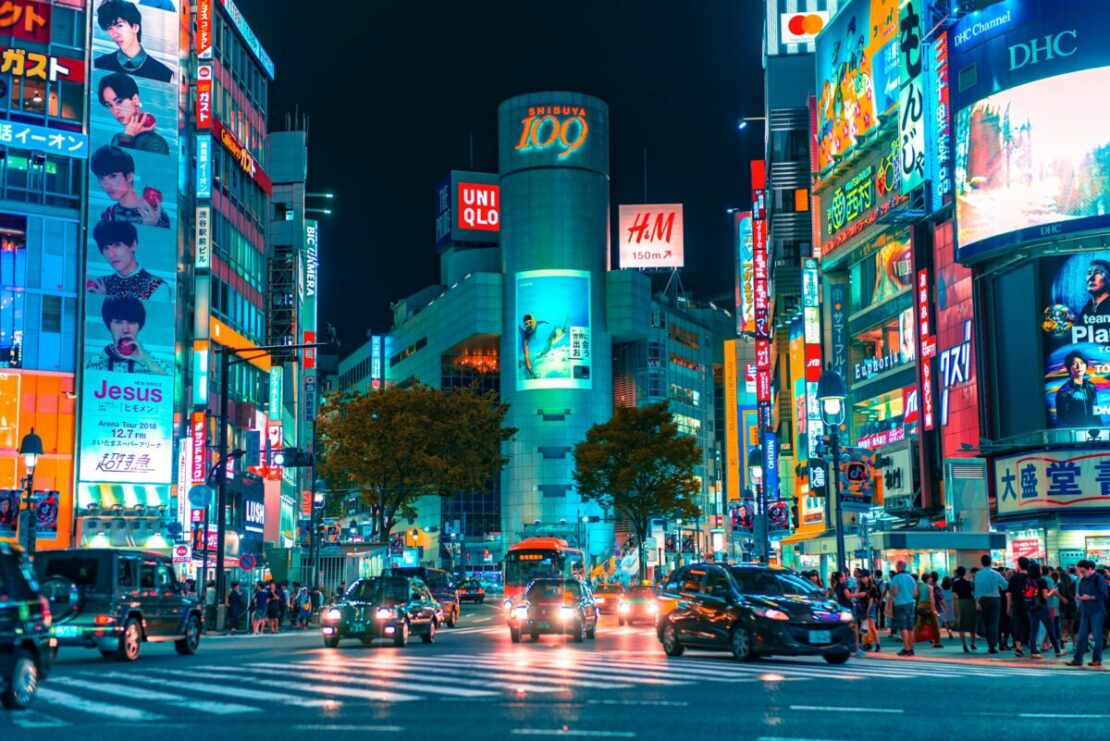
Japan is timeless, a place where the modern fuses with the ancient seamlessly. Add in excellent cuisine, exquisite nature, and welcoming people, and it’s easy to see why Japan attracts more than 25 million foreign tourists annually.
From visiting historic temples and relaxing at teahouses to eating soba noodles and riding bullet trains, Japan offers an incredible variety of amazing things to do. You can even enjoy hot pot while watching a sumo show.
If you want to have a transformative, unforgettable vacation, Japan — without a doubt — can provide that experience.
Now, we know you may be worried about the cost of visiting Japan. That’s why we’ve put together this article — because potential expenses should not hold you back . With a little flexibility, resourcefulness, and open-mindedness, you can actually visit Japan for cheap. Although flights, hotels, meals and activities in Japan add up, cost-saving travel strategies exist.
You may not have considered it, but a savvy way to visit Japan on a shoestring budget is to teach English. This allows you to earn a salary and live and work in a city like Tokyo, Osaka, or Sapporo. Teaching English as a Foreign Language is the perfect opportunity to get paid to travel abroad in Japan. Organizations such as International TEFL Academy (ITA ) can help you land a job there. ITA offers the gold standard in TEFL certification for teaching English abroad and teaching English online. ITA can certify you to teach English and help you get a teaching position at a school in Japan . Salary and benefits are quite solid. You’ll typically earn $2,000 – $3,000+ per month, with perks such as free accommodation.
Another one of the cheapest ways to visit Japan is to intern abroad there. For example, Intern Abroad , the world’s top-rated global internship provider, offers internship opportunities in Japan in Youth Education and Business. These intern programs provide great experience to jumpstart your career and don’t have high price tags and. Fees typically include accommodation and meals, among other things. This helps eliminate major vacation expenses.
As you can see, there are cheap ways to visit Japan. Below, we cover the top 10 cheap ways to visit Japan. Use one, two or more of them, and you’ll be able to enjoy the vacation of a lifetime — without breaking the bank.
1. Search for Cheap Flights to Japan
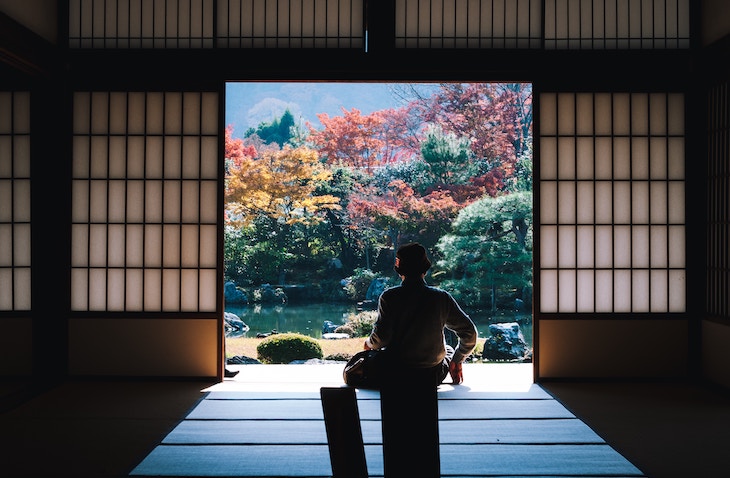
There are low-priced flights to Japan out there. Here’s a strategy to snag one of those flights:
- Consider going during months when flights are cheapest. According to data from CheapFlights.com , the cheapest time to fly to Japan is from September through February. Flying during spring or summer can cost you $500+ more.
- Start looking at least 6-8 weeks in advance. For most regions, flights to Japan are cheapest when well in advance. Frommer’s research shows international plane tickets are generally most affordable when booked 6 weeks in advance.
- Fly with low-cost airlines. For example, low-cost carriers like AirAsia feature routes throughout Asia, including to and from Japan. Prices are usually below market averages.
- Search for flights on student travel sites, such as StudentUniverse . If you’re a student, these specialty sites will tailor deals and discounts for you.
2. Be Flexible with Travel Dates to Japan
When flying on a Tuesday is $500 cheaper than flying on a Saturday, it’s probably worth it to restructure your schedule to fly on a Tuesday. If you’re flexible with dates, you can save tons of money on flights, hotels, and more.
For example, this is a calendar showing round-trip flight prices from New York City to Tokyo for summer 2024:
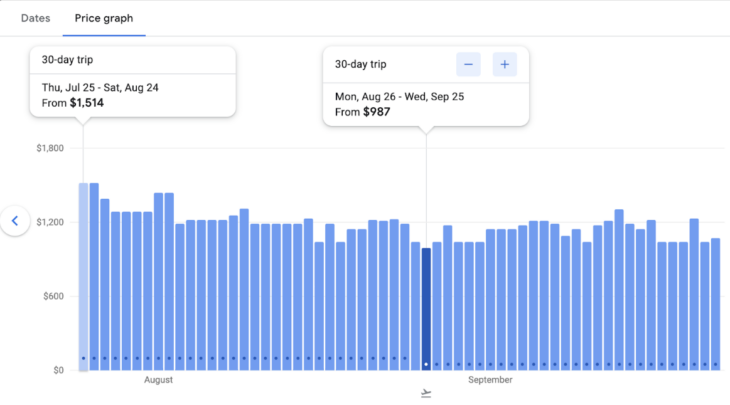
By waiting to go to Japan until late August, and flying on a Monday and Wednesday instead of Thursday and Saturday, you can save $527 on your flight !
3. Get a Business Internship in Japan

Interning in Japan is a great way to not only boost your resume, learn Japanese, and acquire new skills, but also to immerse yourself in local culture. It’s also one of the great cheap ways to visit Japan as the fee you pay often includes meals and accommodation.
For business internships in Japan, Intern Abroad is a top choice. The organization hosts 280+ enriching internships across 24 countries, including Japan. To date, they’ve helped thousands of young professionals gain important international career experience.
Currently, Intern Abroad has a top-rated Business and Media Internship in Japan . For the program, you’ll work in Tokyo, where you’ll contribute to cross-cultural exchange within the workplace and learn the ins and outs of your company and sector. You’ll work in an exciting field such as e-commerce, digital advertising, and tourism.
The program includes accommodation in a home with other interns and language students. This allows you to meet like-minded individuals and expand your personal network too! You can apply here .
4. Go to Japan During Non-Peak Season
According to Condé Nast Traveler , the cheapest time to visit Japan is mid-January through February. If you can stand a little cold, you can save a lot of money on your vacation during this time.
In general, peak season in Japan is March-May and September-November. Spring is cherry blossom season and autumn is quite pleasant. WIth that said, travel prices do NOT get too high during September, October, and November (especially in comparison to spring). Summer is often the most expensive, but it’s note the best time climate wise to go.
So, it may make sense to visit Japan in the autumn if you want a good experience and reasonable travel prices. If you want to save the most money, go after the winter holidays.
5. Teach English in Japan
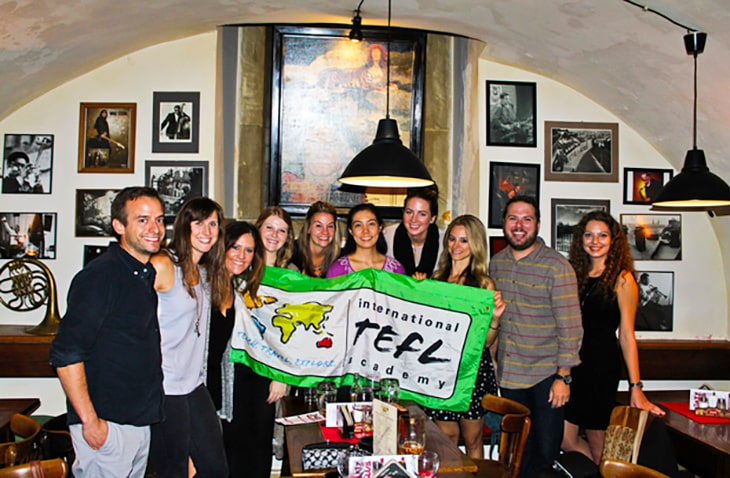
Are you looking for a longer adventure but worried about money?
Worry no more. You can teach English and make money while living in Japan. This will enable you to extend your stay as long as you wish. According to International TEFL Academy (ITA) , foreign English teachers can usually make $2,600+ per month in the first year of the contract, with annual raises for resigning. Many jobs offer free housing too (or at least a housing subsidy).
To get started teaching in Japan, get certified with a reputable organization such as International TEFL Academy. ITA helps aspiring ESL teachers obtain TEFL certification at a low cost online. There are in-person TEFL certification classes as well as online .
After you get TEFL certified, ITA will even offer job placement for Japan . Within a short time, they can help you get a job offer in the city of your choosing, whether that be Kyoto or Kobe.
International TEFL Academy truly helps set you up for success teaching English. Founded in 2010, the organization offers the gold standard in TEFL certification for teaching English abroad. Each year, ITA certifies more than 5,000 people to teach English abroad — a testament to their scale and quality.
Another option is to apply directly to the JET Program (Japan Exchange and Teaching Program). This government-run work program places foreign teachers in schools, government agencies, education departments and other institutions to teach, learn, and network. It’s incredibly selective, but does provide a range of long-term benefits. You can research eligibility requirements here: https://jetprogramusa.org/eligibility-criteria/
- Read our full guide on Teaching English in Japan
6. Save on Lodging in Japan
Outside of transportation to Japan, your next biggest expense may be lodging. This is where you can save a lot of money. According to a popular travel guide , hotel costs in Japan can vary significantly:
- A guesthouse or hostel in Japan can be under $25 per night.
- The famous capsule hotels are around $30-$35 per night.
- A budget hotel may cost between $40-$100 per night.
- A mid-range hotel costs between $80-$100+ per night.
- A luxury hotel or accommodation can cost between $150-$500+ per night.
If you go with budget or mid-range lodging in Japan, instead of a 4- or 5-star lodging, you can save hundreds of dollars on your trip. They may not have all the amenities you’d like, but they’re usually comfortable enough for a good night’s rest.
Simply put, if you’re searching for savvy cheap ways to visit Japan, then plan to save on accommodation.
7. Get an Education Internship in Japan

As we mentioned earlier in the article, interning in Japan is a great way to improve your resume and skills as well as immerse yourself in the country. Since internship fees include lodging, they’re a great cheap way to visit Japan
For education internships in Japan, Intern Abroad is also a top choice. The organization’s Youth Education Internship in Japan is highly rated by past participants. For this internship, you’ll assist at after-school centers in Tokyo and help improve the future prospects of local youth. Duties include teaching English, doing arts and crafts, playing games, and more.
If you want to be a teacher or work in education, this internship is a wonderful option. You can apply here .
8. Use Miles or Points to Travel to Japan
You arrived at this article because you’re searching for cheap ways to visit Japan. So, chances are you’re open to various cost-saving tricks.
Enter miles and points.
On sites like NerdWallet and Upgraded Points , you can learn how to get to Japan for free or low cost by leveraging lucrative credit card sign up bonuses, as well as other miles-earning hacks (doing surveys, shopping online, etc).
For example, many major airlines, like Delta and United Airlines, have branded credit cards that offer bonuses to new customers after a certain amount is spent on the card. Usually, this sign up bonus gives you enough points to book an international plane ticket for free (or at a very reduced price).
It’s not unheard of to obtain more than $1,000 in travel savings from these cards. With the right strategy and discipline (and good credit), you can get a credit card with a large signup bonus, meet the spending threshold, and then obtain tens of thousands of points. You can then use those points to get free airfare or lodging (or at least save a lot of money on both those things).
9. Budget Wisely on the Ground in Japan
Going to Japan can be the vacation of a lifetime. You may get that ‘YOLO’ feeling while you’re there. That’s great! But it can cause spending to get out of hand.
To avoid overspending, head to Japan with a budget and a plan. You’ll still enjoy a great vacation, while saving hundreds of dollars.
Follow these tips while there to save money:
- Eat like a local : Avoid the Westernized restaurants that charge $15 for avocado toast. Instead, head to the local eateries and enjoy traditional Japanese food. For instance, quality ramen in Tokyo can be had for under $8.
- Take public transportation : You don’t need to hire a driver. You don’t even need to pay for taxis. From the inter-city bullet trains to the Tokyo metro, Japan’s public transportation is world class. It’s convenient, fast, and cheap. Use it.
- Enjoy the free things: Japan has an incredible variety of things to do, some more expensive than others. Take advantage of free things, such as exploring the streets of the Harajuku neighborhood, taking in the organized chaos of Shibuya Crossing, and touring the Hiroshima Peace Memorial Park.
10. Find a Package Deal to Japan
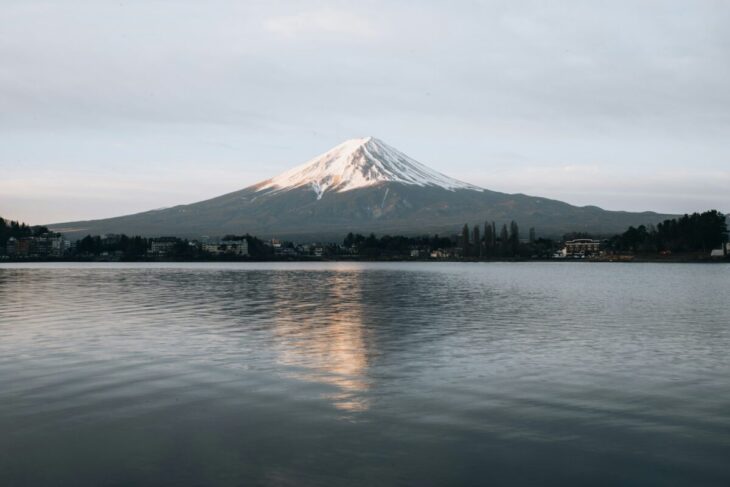
Perhaps you bundle to save on insurance or internet and cable. Employ this same cost-saving tactic for your trip to Japan. By bundling your travel, or buying your flight, hotel and insurance together, you can save hundreds of dollars on your travel (if not more).
There are many ways you can find package deals in Japan. When you book on a site such as Priceline or Expedia, you’ll have options to bundle your flight, hotel, car rental, insurance and more. Just look in advance, and you’ll find a good price.
For instance, Expedia states it has package deals for Japan as low as $1,804 for weeklong stay in 2024. The package includes the flight and lodging.
It’s Time to Put the 10 Cheap Ways to Visit Japan into Action
While you can’t use all of these tips at once, you can use a mix of them to save thousands of dollars on your trip. For instance, you could use miles for your flight, while interning in Tokyo to gain experience and save on food and accommodation. That would keep your vacation costs incredibly low.
Do you have any other cheap ways to visit Japan? Feel free to share on Facebook, X, or LinkedIn and add in your thoughts. We’d love to hear from you.
Now, all that’s left to do is put these cheap ways to visit Japan to work — and go have the best vacation ever.
Image Sources: https://unsplash.com/photos/people-gathered-outside-buildings-and-vehicles-alY6_OpdwRQ
https://unsplash.com/photos/white-and-black-mountain-near-body-of-water-during-daytime-ej8pKvHDg_c
Most Popular Guidebooks
2024 best volunteer abroad programs, organizations, & projects, medical volunteer abroad programs for doctors, nurses, pre med students, cheap affordable volunteer abroad programs & low cost overseas projects, teens & high school volunteer abroad programs | under 18 mission trips, 200 volunteer abroad & study abroad scholarships & grants, dental volunteer abroad & medical mission trips | dentists & students, volunteer abroad opportunities for seniors and retirees, nursing volunteer abroad projects for students & professional nurses, short term volunteer abroad programs & mission trips (1 week & 2 weeks), long term volunteer work abroad programs & voluntary charity jobs, trending guidebooks, volunteering abroad after the coronavirus outbreak, 2024 best internships abroad: medical care, marine biology & more, volunteer in australia: animals, conservation, ranching and more, 2024 best volunteer abroad programs, organizations, & projects.
Nick Callos · Writer
With a BA in English Literature & Writing from Boston College, Nick researches and writes about volunteer, intern, and teach abroad programs worldwide. He has studied abroad and taught English in Chengdu, China, and aims to help fellow travelers make a lasting impact on the communities they visit.
Related guidebooks

10 Cheap Ways to Visit Thailand
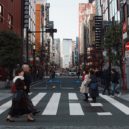
- Prof. Development
Teach English in Japan: JET Program and More
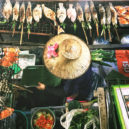
How to find the Best Internships in Asia

10 Best Places to Teach English Abroad

Traveller type
- Solo Travelers
- First Time Travelers
- Female Travelers
- Senior Citizens
- Family & Group
- Teen & High School
- Volunteer Abroad
- Intern Abroad
- Teach Abroad
- Study Abroad
- Professional Development
To stay in touch! Enter your email address to get travel recommendations and be the first to know about our $500-$1,000 travel scholarships!
Thanks for signing up!
Your first email will arrive shortly

Cathay Pacific’s HK Express rolls out cheap seats to beat regional rivals. But will low-cost fares to Japan, Taiwan lure budget travellers?
- Budget airline has introduced four-tier ticketing system, with entry-level option allowing single personal item weighing under 7kg
- New price structure does not guarantee cheapest option versus other options in region, according to Post check on certain dates, but fares remain highly competitive
Cathay Pacific Airways ' budget airline, HK Express, has introduced a new four-tier ticketing system which has put its prices and broader competitiveness in the spotlight.
The revamped "Ultra Lite", "Lite", "Essential" and "Max" fare categories are mostly differentiated by the amount of carry-on and checked baggage allocated to each passenger, with the cheapest ticket allowing for just one personal item that can be placed under seats.
The Lite fare includes an extra hand-carry item, while Essential allows for a 20kg (44lbs) check-in bag and Max increases the weight limit to 32kg.
Do you have questions about the biggest topics and trends from around the world? Get the answers with SCMP Knowledge , our new platform of curated content with explainers, FAQs, analyses and infographics brought to you by our award-winning team.
Here, the Post looks at how the company stacks up against other regional airlines, especially low-cost carriers, following the introduction of the new system .
Japan is arguably the most popular holiday destination for Hongkongers, especially after borders reopened following the pandemic, as the value of the yen has fallen to new lows.
A round trip Lite ticket from Hong Kong to Osaka between May 15 and 22 will set travellers back HK$1,945 (US$249) after taxes and other extra fees, according to HK Express' website.
A trip on the same dates flying low-cost Japanese carrier Peach Aviation costs HK$1,881 in a ticket category similar to Lite, with passengers able to bring two carry-on bags of up to 7kg each but no checked luggage.
The price jumps to HK$2,445 for HK Express and HK$2,581 for Peach after including one 20kg checked bag.
For those who fancy a holiday in Tokyo, HK Express remains slightly more affordable at HK$2,033 for a Lite ticket against competitor Hong Kong Airlines' HK$2,273 "Basic" fare, climbing to HK$2,656 and HK$2,693, respectively, when a 20kg checked bag is added.
For services to Bangkok, Thai AirAsia offers a better deal at HK$1,288 compared with HK Express' HK$1,675 Lite seat.
The addition of a piece of 20kg luggage increases the price of Thai AirAsia's ticket to HK$1,809 and HK Express' to HK$2,175, with passengers of the former also receiving a meal.
The most affordable round trip flight between Hong Kong and Taipei from May 15 to 22 belongs to newcomer Greater Bay Airlines.
Its "Go Go" ticket at HK$1,196 is HK$81 cheaper than HK Express' Lite, both without checked baggage.
But the roles reverse when opting for a 20kg checked bag, with HK Express charging HK$1,777 versus Greater Bay Airlines' HK$2,146.
Taiwanese carriers EVA Airways and China Airlines also offer competitive prices on the same route. A seat on EVA costs HK$1,860 with a 23kg piece of checked luggage and a meal included. China Airlines is a slightly cheaper option at HK$1,790.
South Korea
HK Express' biggest competitor in South Korea is low-cost airline T'way Air. The Korean carrier offers three classes of tickets - "Event Fare" with just a 10kg carry-on bag, "Smart Fare", which includes a 15kg checked bag and "Normal Fare", which bumps the luggage weight up to 20kg.
T'way Air had sold out its round trip tickets for the Post's dates from Hong Kong to Seoul by Wednesday. But for the week of May 22 to May 29, the Event Fare comes in at a much more affordable HK$1,198 against HK Express' HK$1,738 Lite ticket.
Adding 20kg of checked luggage changes the equation, however, as HK Express' Essential ticket beats T'way's comparable "Normal Fare" at HK$2,238 against HK$5,738.
The Philippines
AirAsia's Philippine branch again offers cheaper flights to Manila in all categories.
The carrier's entry-level round-trip ticket from May 15 to 22, with no checked baggage, costs just HK$1,115 compared with HK Express' HK$1,401.
AirAsia remains the cheapest at HK$1,530 when adding a 20kg bag and an in-flight meal, a more affordable option than the Essential HK$1,901 fare, which does not include a meal.
Scoot, the budget arm of Singapore's flag carrier, is the cheapest option for passengers looking to fly to the city state from Hong Kong between May 15 to May 22, with HK Express not operating flights to the country.
The cost of a return trip is about HK$1,900, without the addition of any checked baggage. Scoot generally offers a more generous cabin baggage policy than HK Express, with passengers allowed both a personal item and a carry-on suitcase with a combined weight of under 10kg.
However, those who opt for checked baggage must shell out HK$185 for 20kg, the minimum capacity available. This brings the total to about HK$2,270.
The second cheapest option is offered by Greater Bay Airlines. Its lowest return fare to Singapore costs HK$2,074 under its "Go Go" ticket, which limits passengers to one carry-on bag under 7kg.
Those who want the addition of 20kg of check-in luggage - the only available option for checked baggage - will need to pay HK$300 for each leg of their journey, or HK$2,674 in total.
More Articles from SCMP
Xi Jinping hails ‘new chapter’ for China’s relations with Serbia as Belgrade backs his global vision
Meet Tyla, the singer who wore a sand dress to the Met Gala: known for TikTok-viral hit ‘Water’, she was a supporting act on Chris Brown’s tour, and was rumoured to be dating Kylie Jenner’s ex Travis Scott
Kingdom of the Planet of the Apes movie review: looks great, but story of Freya Allan teaming up with apes is too slow
Hong Kong property: mortgage insurance hits 10-month high as property easing fuels transactions
This article originally appeared on the South China Morning Post (www.scmp.com), the leading news media reporting on China and Asia.
Copyright (c) 2024. South China Morning Post Publishers Ltd. All rights reserved.


IMAGES
VIDEO
COMMENTS
4. Go camping in the summer months. If you really want to do Japan on the cheap, you can rely on its network of well-maintained campsites in rural or resort areas; prices range from ¥500 to ¥1,000 per person or tent. Note that many sites are only open in the summer. 5. Swap a night in a hotel for an overnight bus ride.
The Seishun 18 is a 5-day ticket, costing 2,370 yen per day - a total of 11,850 yen. A fraction of the price of the Japan Rail Pass, this is a great option if you want to do lots of little trips or one or two big journeys during the 5 day period. Interestingly, the ticket can also be shared between up to 5 people.
You can save money in Japan by living like a local. If you're staying in a hostel, buying a rail pass, eating relatively cheap food, and visiting a few attractions, budget around 10,000-16,000 JPY per day. However, by utilizing the tips above, I think you can travel Japan for 7,000-10,000 JPY per day.
Transportation and Tours Price; 7-day Japan Rail Pass (Ordinary) from 50,000 yen: Tokyo Metro 24-hour ticket: 600 yen: Common 1-day ticket for Tokyo Metro & Toei Subway
6. Book your accommodation ahead of time. Budget-friendly places fill up first. Unfortunately, Japan is one of those countries where planning ahead is going to save you lots of money. Our guesthouses and hostels were all booked on Booking.com and Hostelworld.com for anywhere from $7.50-$23 per person.
From the United States, a round-trip flight to Japan can be anywhere from $800 USD to $1500 USD. This cost will fluctuate depending on the time of year you choose to travel and where you're traveling from, so keep an eye on prices and see if you can score yourself a deal.
11. Try housesitting. This is the ultimate Japan on a budget tip if you can pull it off! Housesitting is a way to avoid spending anything on lodging and accommodation while traveling. If you're flexible with dates for lodging and accommodation, take a look at housesitting as an option.
Unlike in much of the rest of the world, consumer prices in Japan have barely increased over the past decades. Add to it a weak yen, and you have a travel destination that is much more economical than the outdated misconceptions about expensive Japan would suggest.With careful planning and a little know-how, it is now easier than ever to enjoy a budget trip in Japan.
A regular JR pass that allows travel across the whole country costs 29,100 yen. This is incredibly reasonable. If you take a train from Tokyo to Kyoto, throw in a day trip to Nara and you've started saving money. Our plan was as follows: 3 days - Hiroshima and Miyajima. 2 days - Osaka. 1 day - Himeji.
For a cheap meal on-the-go, you can try a vending machine restaurant. Simply buy a ticket at the machine and then present it to the staff in exchange for your meal. Popular dishes at such restaurants include udon and soba noodles, and Japanese curry. You can find them everywhere and can easily get a meal for $3-4.
Japan on a budget: Top money-saving tips. If you're looking for our top money-saving tips for traveling Japan on a budget, here they are! Travel during low season to get the best rates on accommodation.; Buy a Japan Rail Pass if you plan to visit several places during your trip.. This article breaks down how much the Japan Rail Pass costs and how to purchase it.
Kyoto - Hiroshima: 10,500 Yen ( $70) Hiroshima - Osaka: 10,000 Yen ( $67) So if you were to replicate my Japan route exactly, you would end up spending $381 on rail tickets. It sounds like a lot of money but I do want to stress that the trains in Japan are some of the best in the world.
Bus Passes. One way to save on transport costs in Japan is by purchasing a Willer Express Bus Pass. This pass allows you to travel for 3, 5 or 7 days within a period specified by you. Advantages: The days of travel do not need to be consecutive, giving you flexibility in your itinerary.
Alternatively, Bookaway is another great site to find cheap bus tickets in Japan. 4. Get a Rail Pass for Long-Distance Travel. Alternatively, if you're planning on taking frequent, long-distance trips, then getting a Rail Pass might be a better option in the long run. As mentioned, traveling by bullet train, otherwise known as "shinkansen ...
The cheapest time to visit Japan is during the off-season, which runs from early April through mid-June, and late September through mid-December. Traveling during these periods can save you up to 50% on airfare and hotel rates. However, keep in mind that the weather can be quite unpredictable during the off-season.
Breakdown of budget for 2 weeks in Japan: Flights (from London to Tokyo return, via Warsaw on using Lot airlines)- $830. Accommodation - $870. Transport (14-day Japan Rail pass) - $360. Food (Daily cost averaged $30, which in most cases was street food lunch/snacks and a low-average priced dinner) - $420.
Low budget: 3,000 - 5,000 yen per night and person Dormitories and hostels, found in most cities of Japan, typically charge below 5000 yen per night and person. Furthermore, booking services like Hostelworld offer great deals. Medium budget: 6,000 - 12,000 yen per single room and night 8,000 - 15,000 yen per double room and night
One week in Japan (for first-time travellers) Tokyo (3 days) Kyoto (3 days) Osaka (1 day) If you have more days, add day trips to Yokohama, Hakone (to view Mount Fuji), and even Disneyland from Tokyo. And add day trips to Nara and Kobe in Kansai (Kyoto and Osaka are in this region).
Japan is NOT expensive. Find out how to travel Japan on a budget in the first part of our Japan travel guide series and discover where you can find the cheap...
Kanpai's Budget Calculator provides a precise estimate of the travel expenditures item-by-item, with numerous possible choices. As a matter of fact, a backpacker's 10-days trip will not cost the same as a 3-weeks stay for a family looking for a very comfortable trip. Fill in the questionnaire below to discover the expenses to expect and ...
Paperback preview Super Cheap Japan: Budget Travel in Tokyo, Kyoto, Osaka, Nara, Hiroshima and Surrounding Areas (2nd Edition) The Super Cheap Japan book is the ultimate budget travel guide to Japan, full of the most useful, up-to-date information for a cheap holiday in Japan. With extensive tax-free shopping, crazily discounted train passes and an unbelievable…
How much does a one week, two week, or one month trip to Japan cost? A one week trip to Japan usually costs around $0.00 (¥0.00) for one person and $0.00 (¥0.00) for two people. This includes accommodation, food, local transportation, and sightseeing.
If you go with budget or mid-range lodging in Japan, instead of a 4- or 5-star lodging, you can save hundreds of dollars on your trip. ... Use Miles or Points to Travel to Japan. You arrived at this article because you're searching for cheap ways to visit Japan. So, chances are you're open to various cost-saving tricks. ... Expedia states ...
67K Followers, 572 Following, 504 Posts - See Instagram photos and videos from JLB TOURS & TRAVEL | TOUR JEPANG | 3000+ PAX BOOKED (@japanlowbudget.id)
Japan A round trip Lite ticket from Hong Kong to Osaka between May 15 and 22 will set travellers back HK$1,945 (US$249) after taxes and other extra fees, according to HK Express' website.